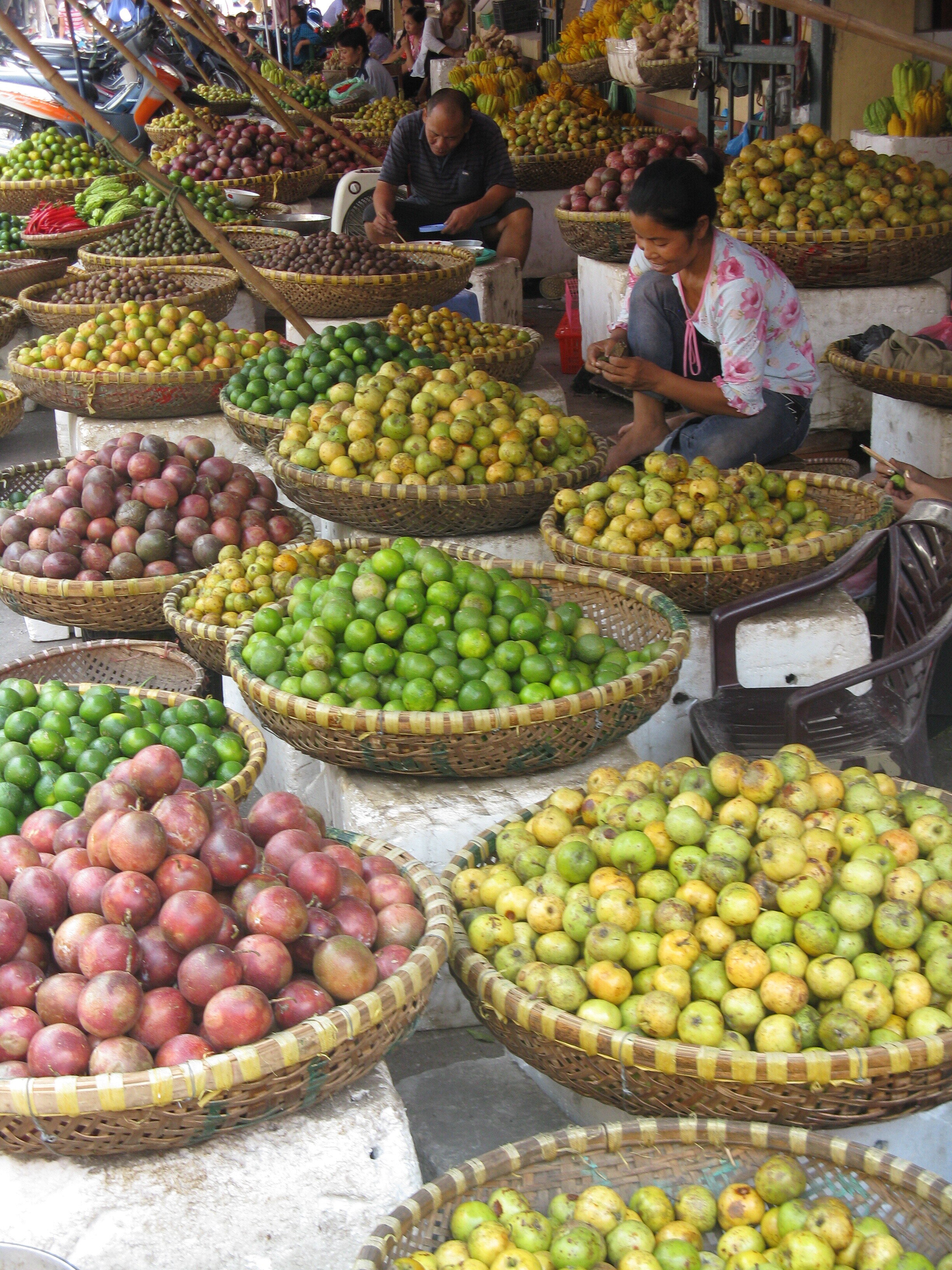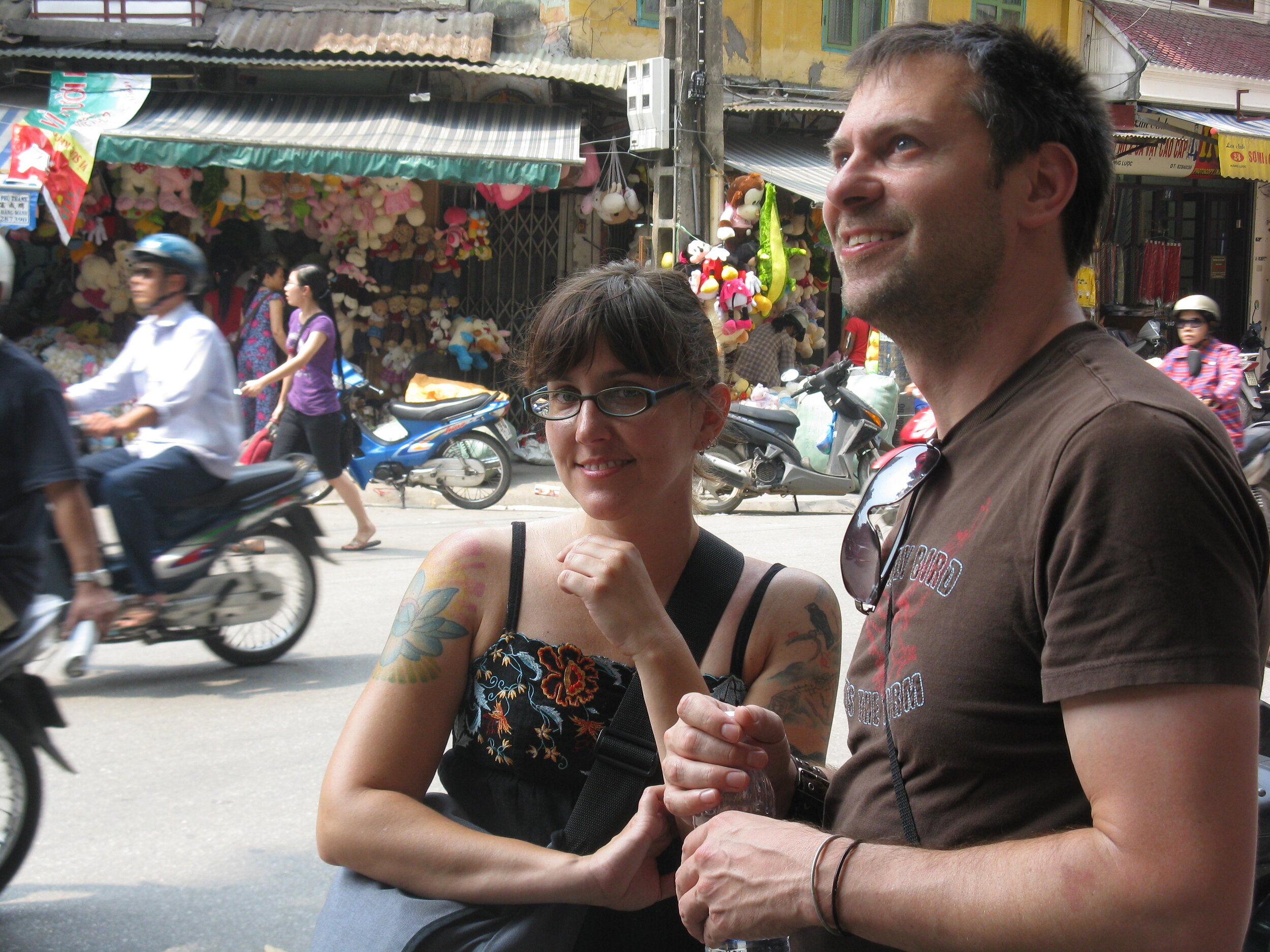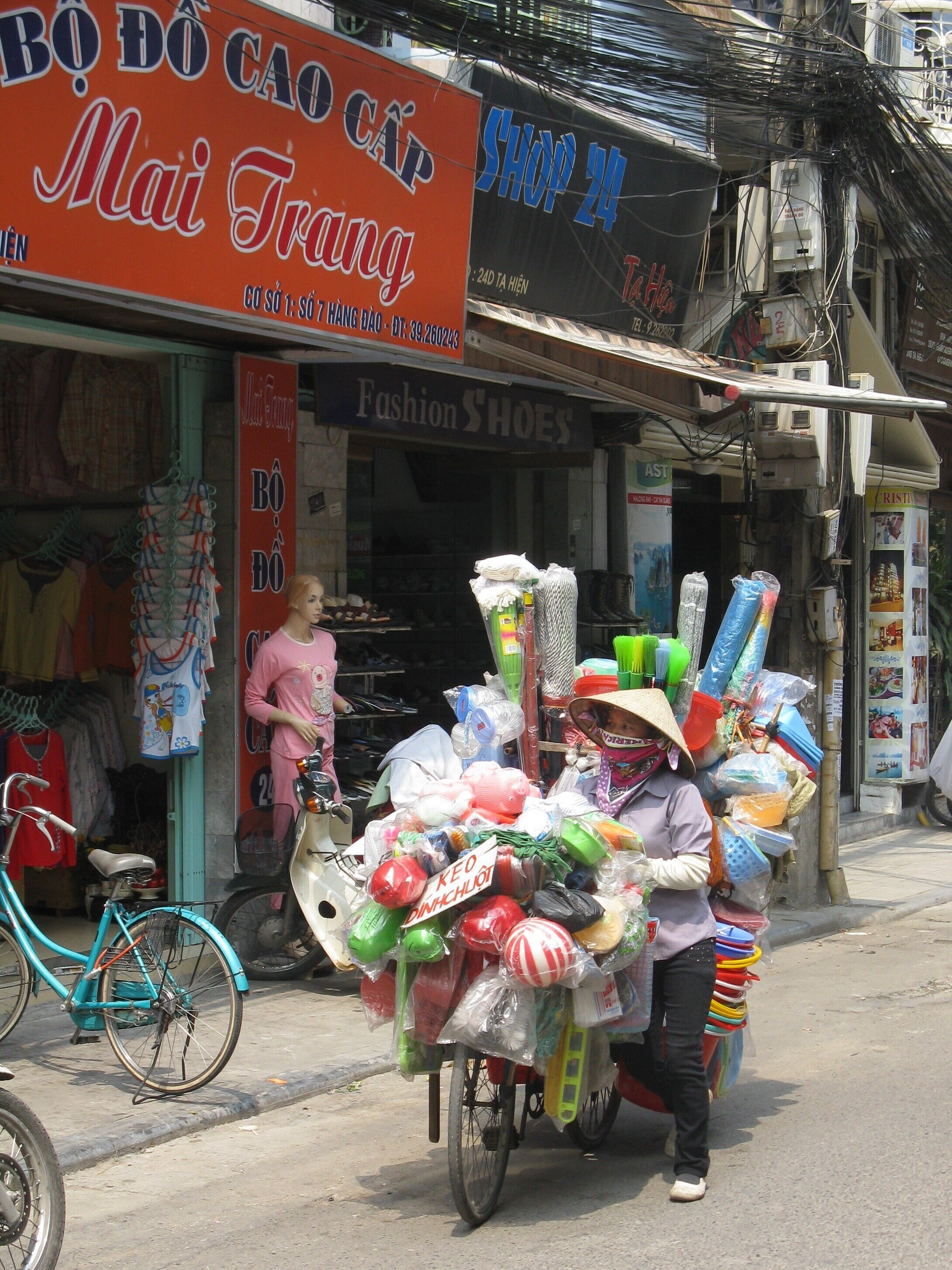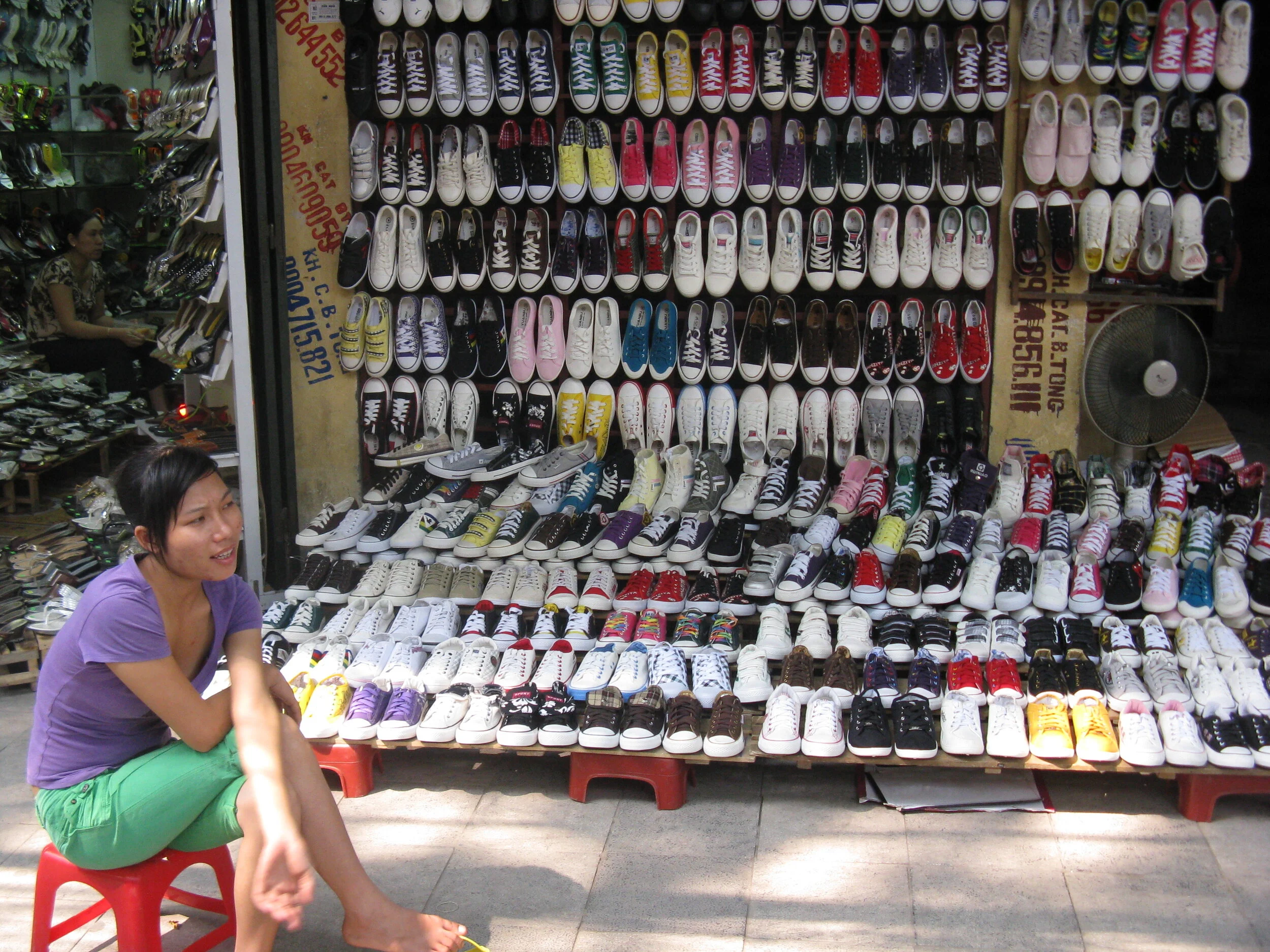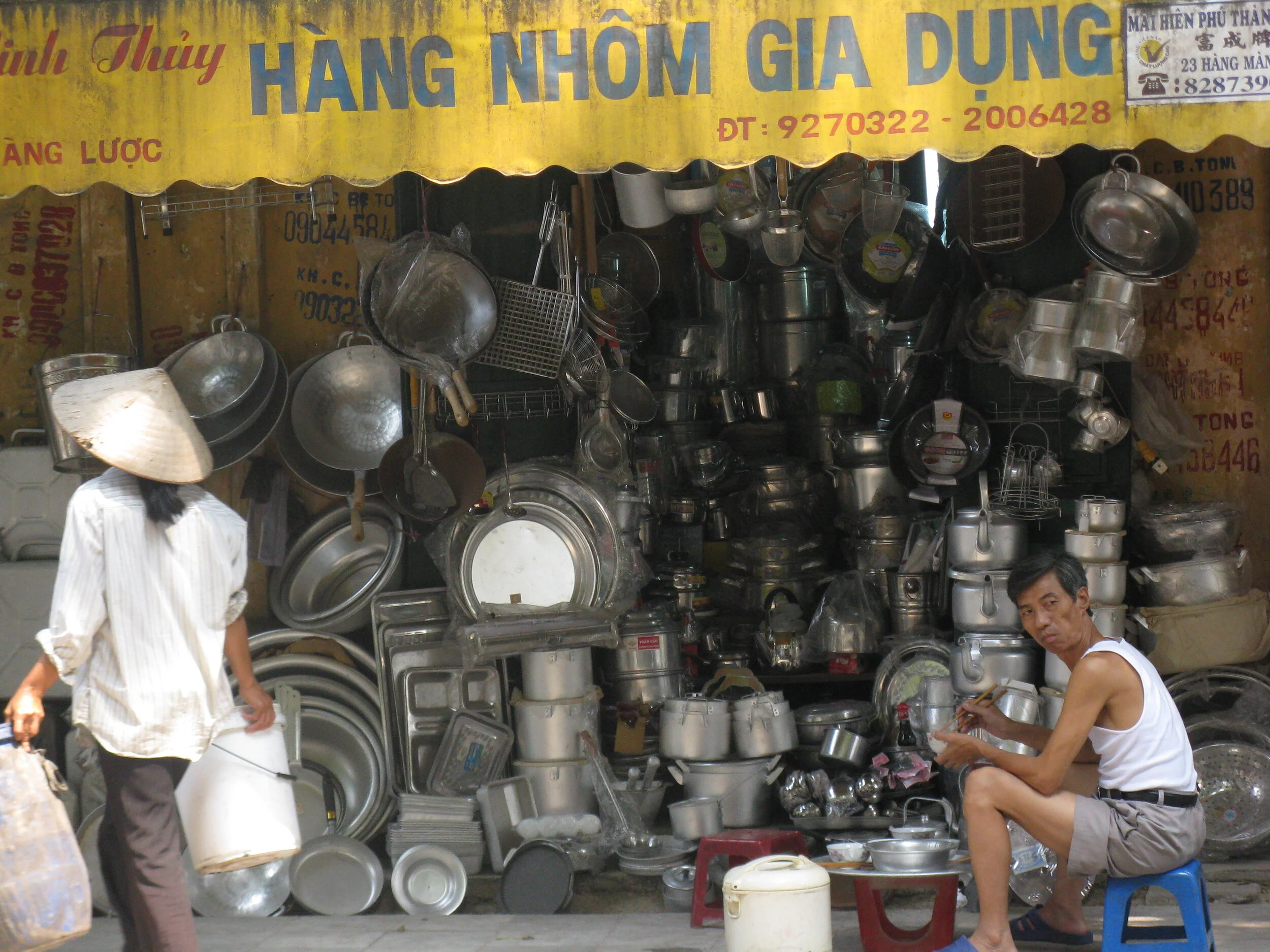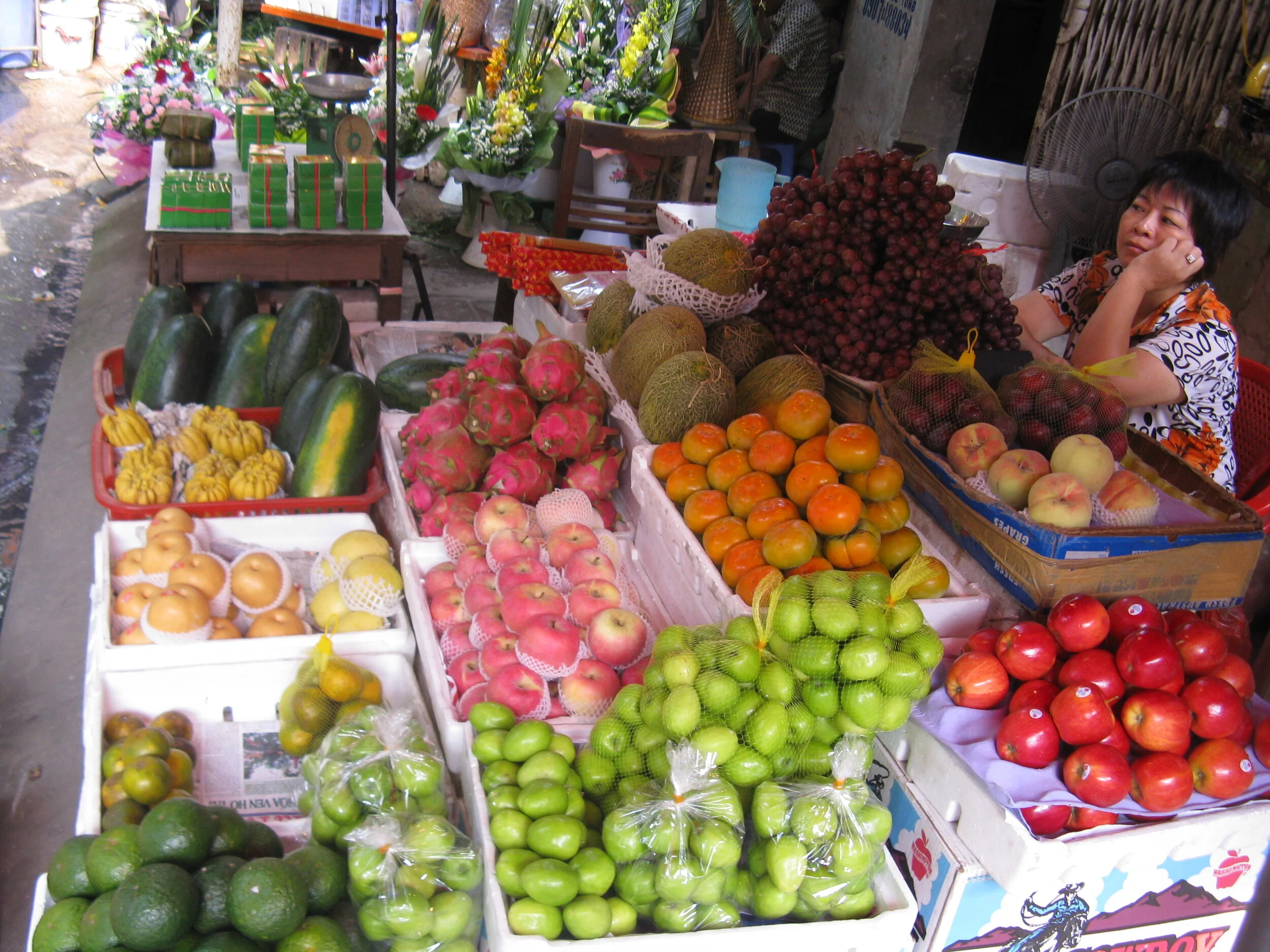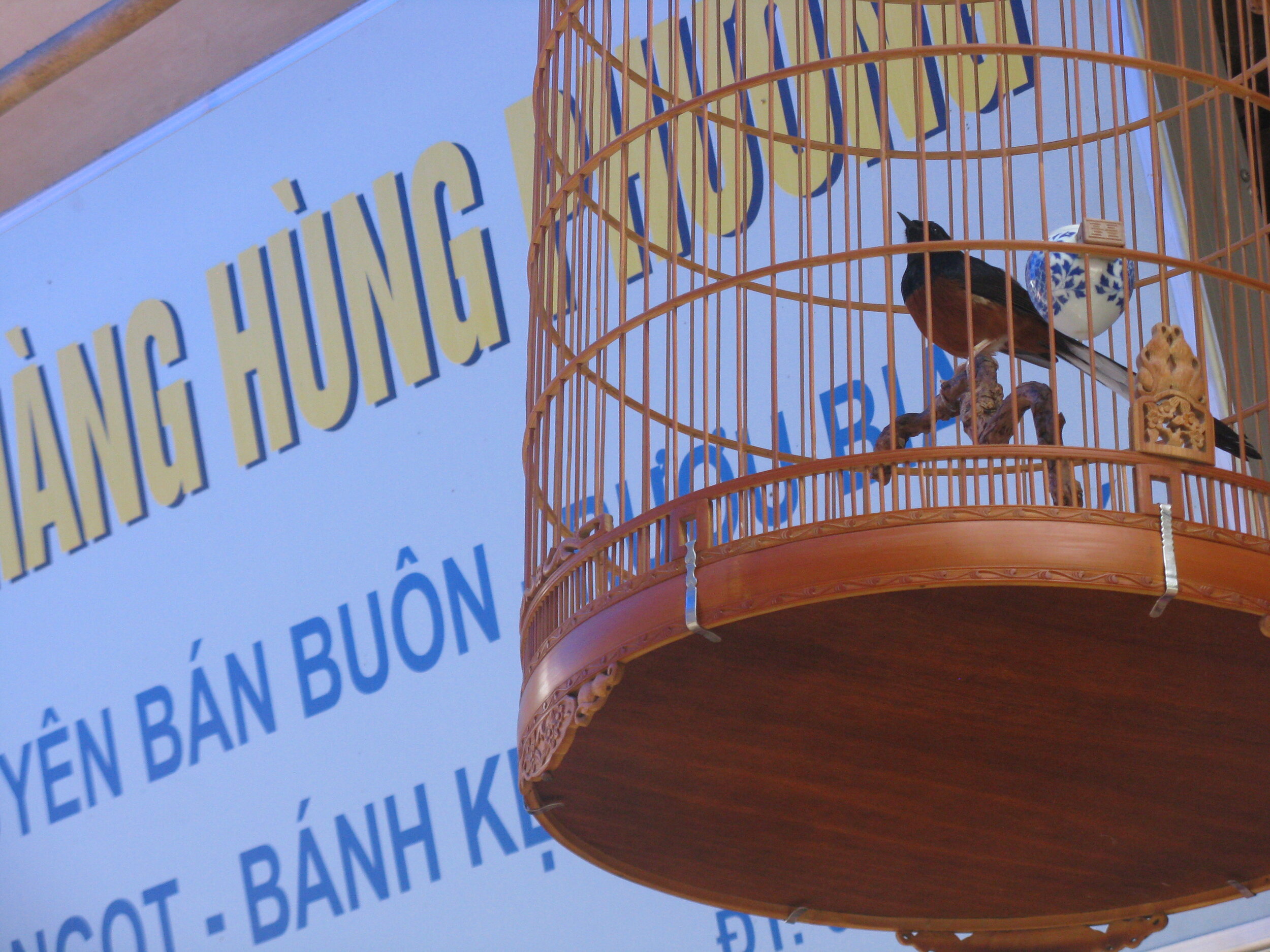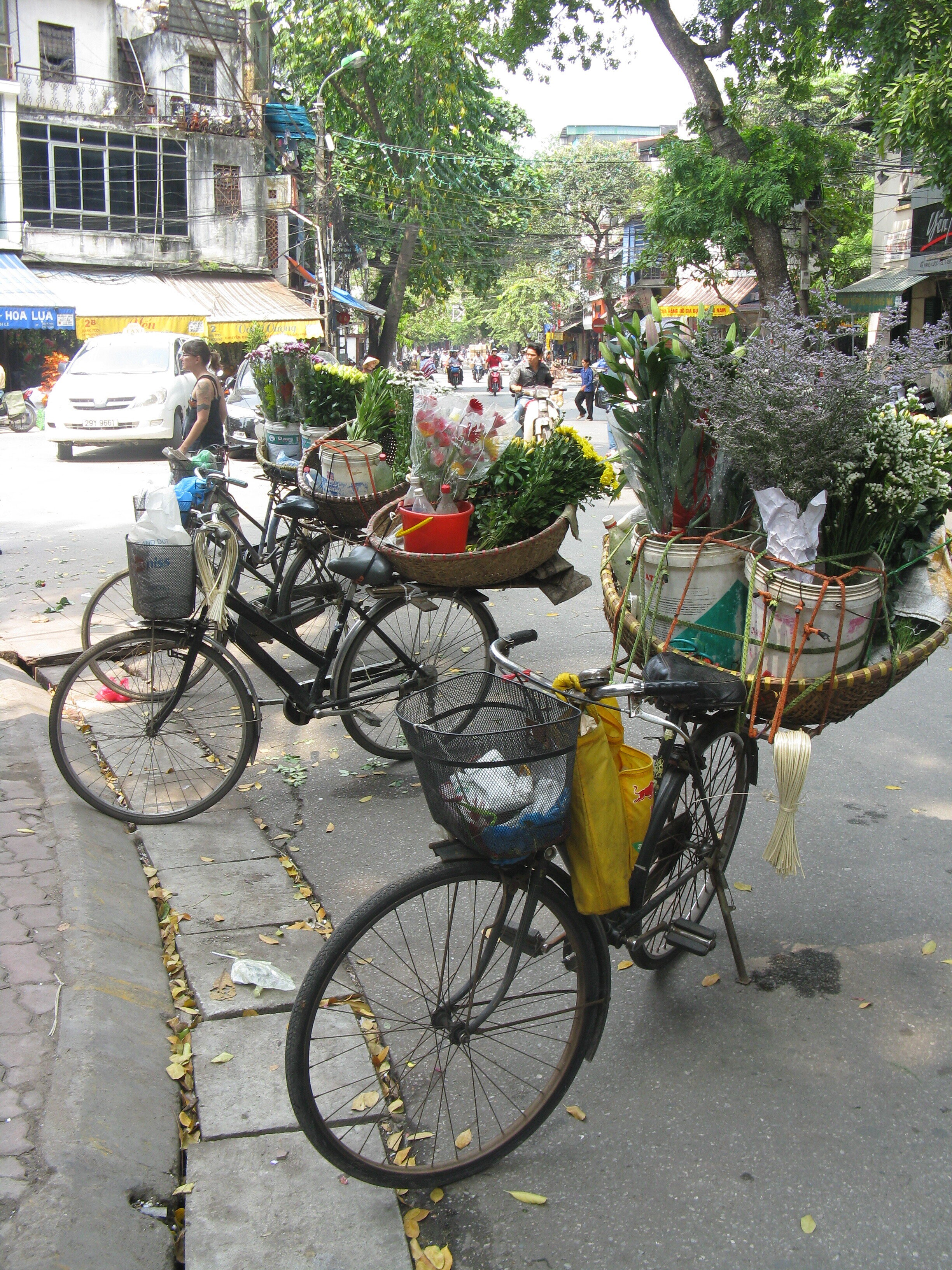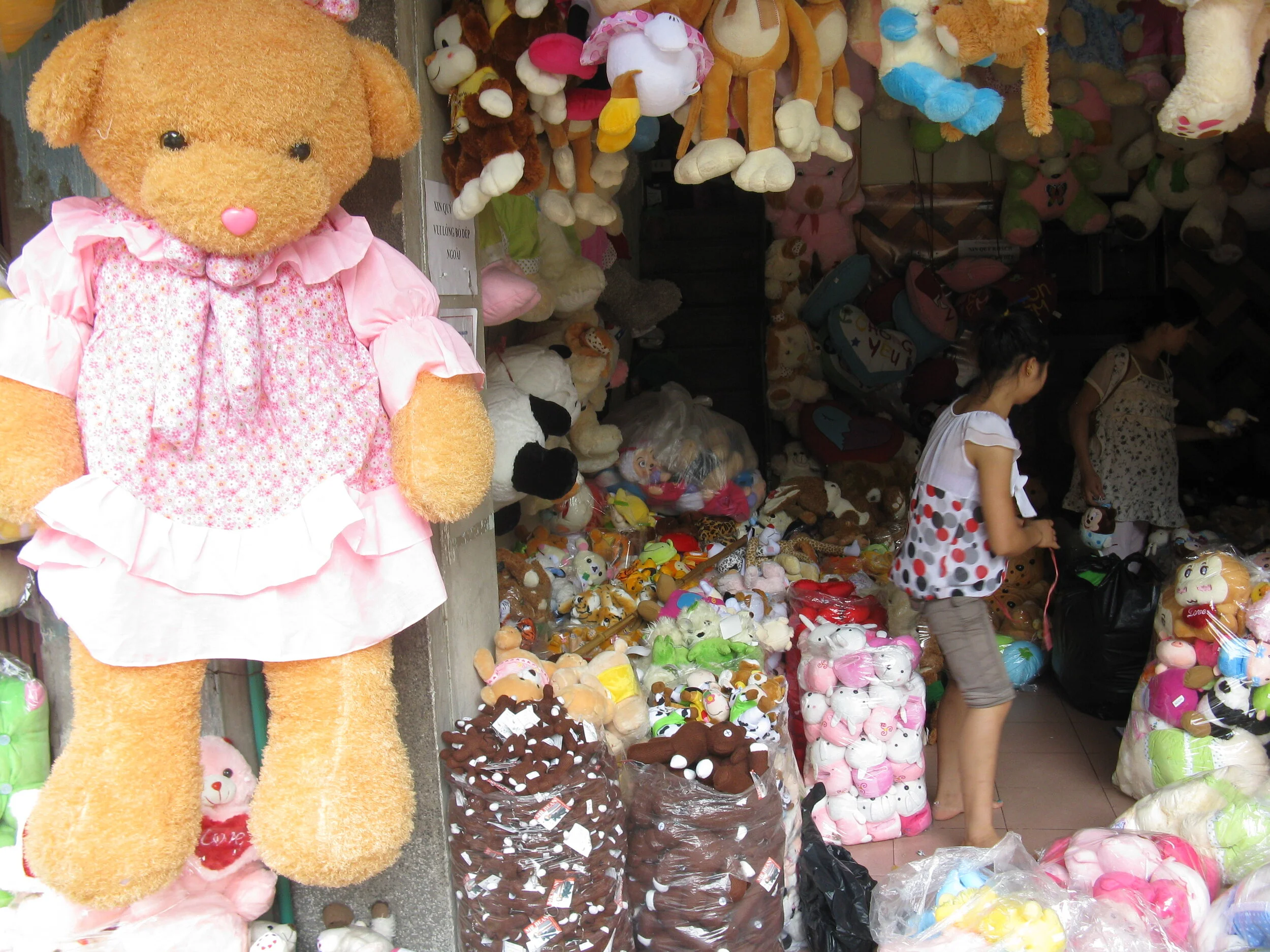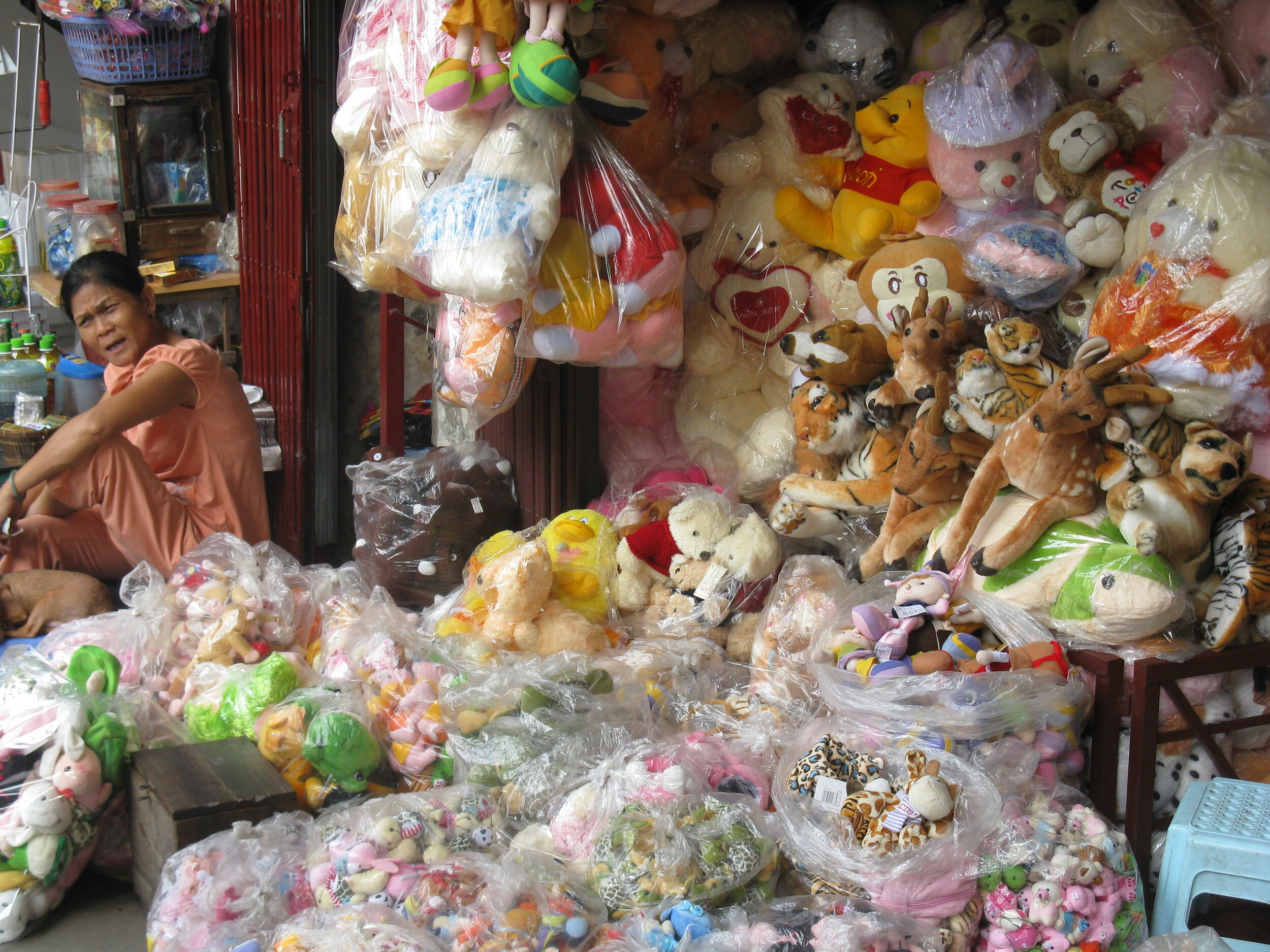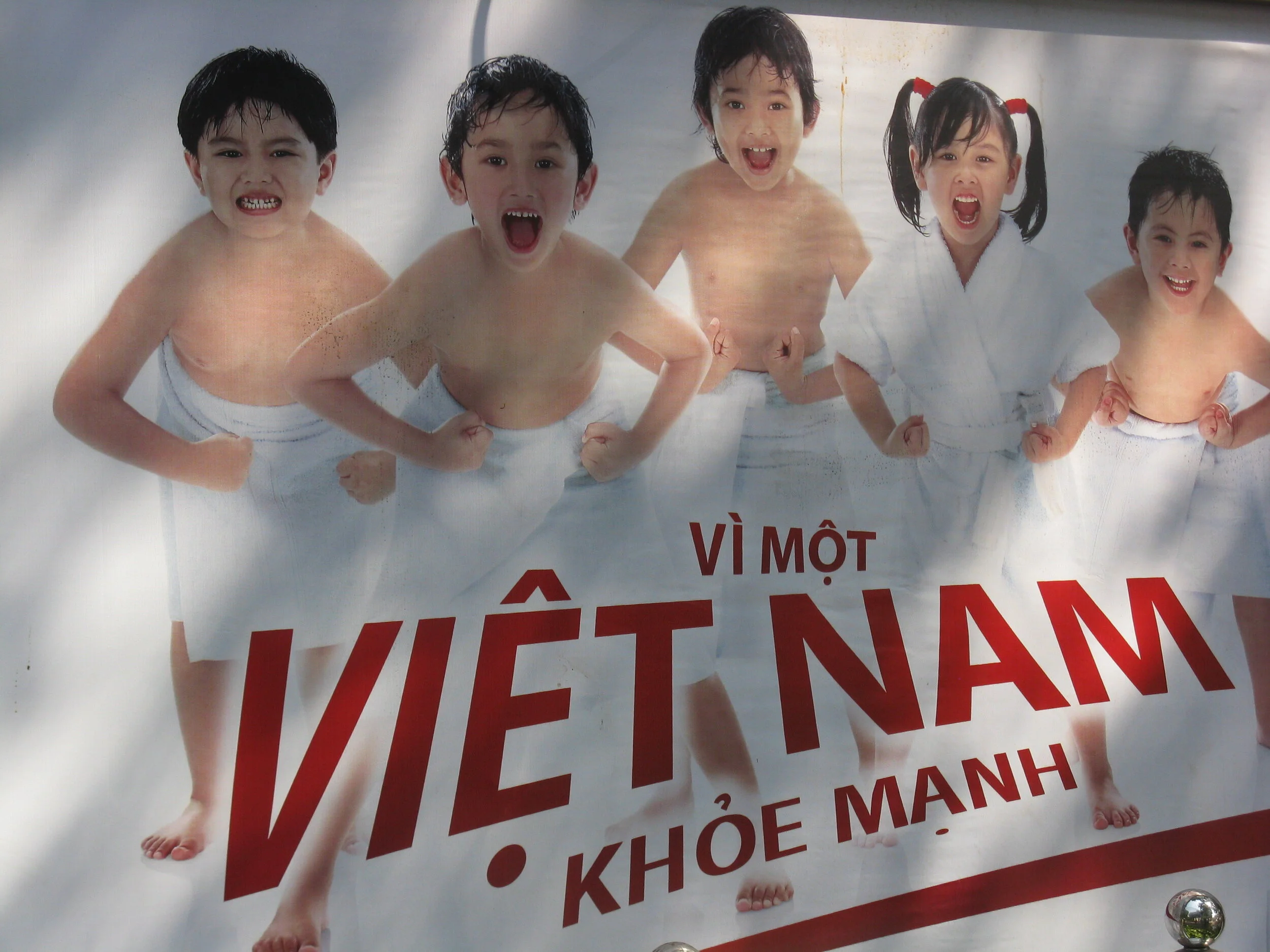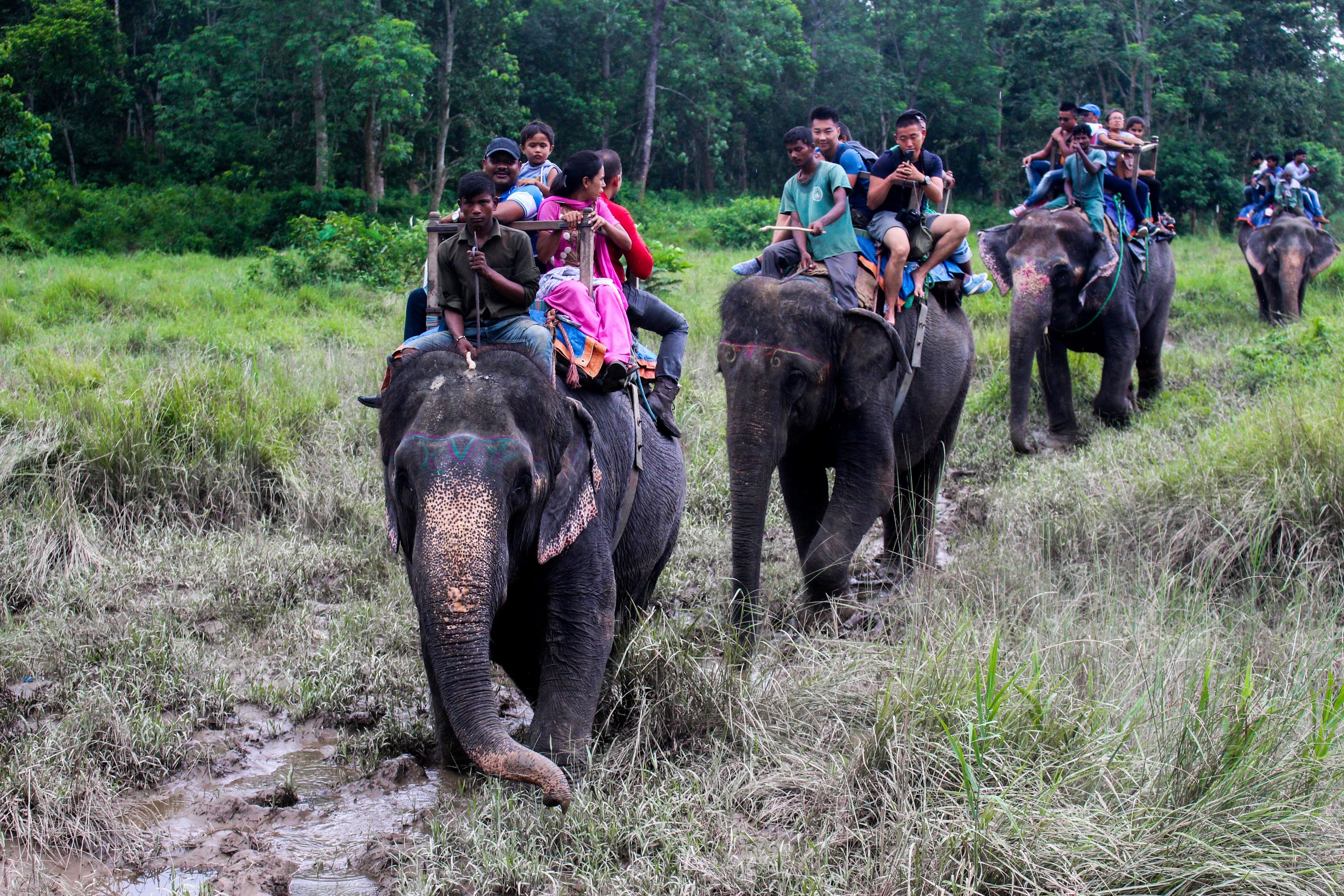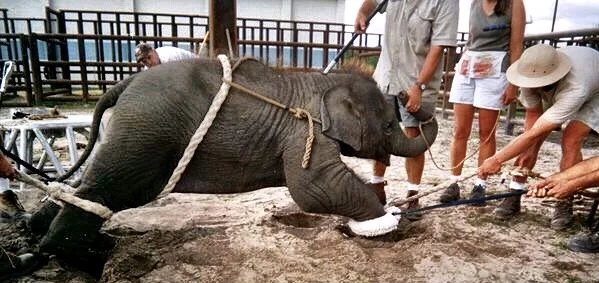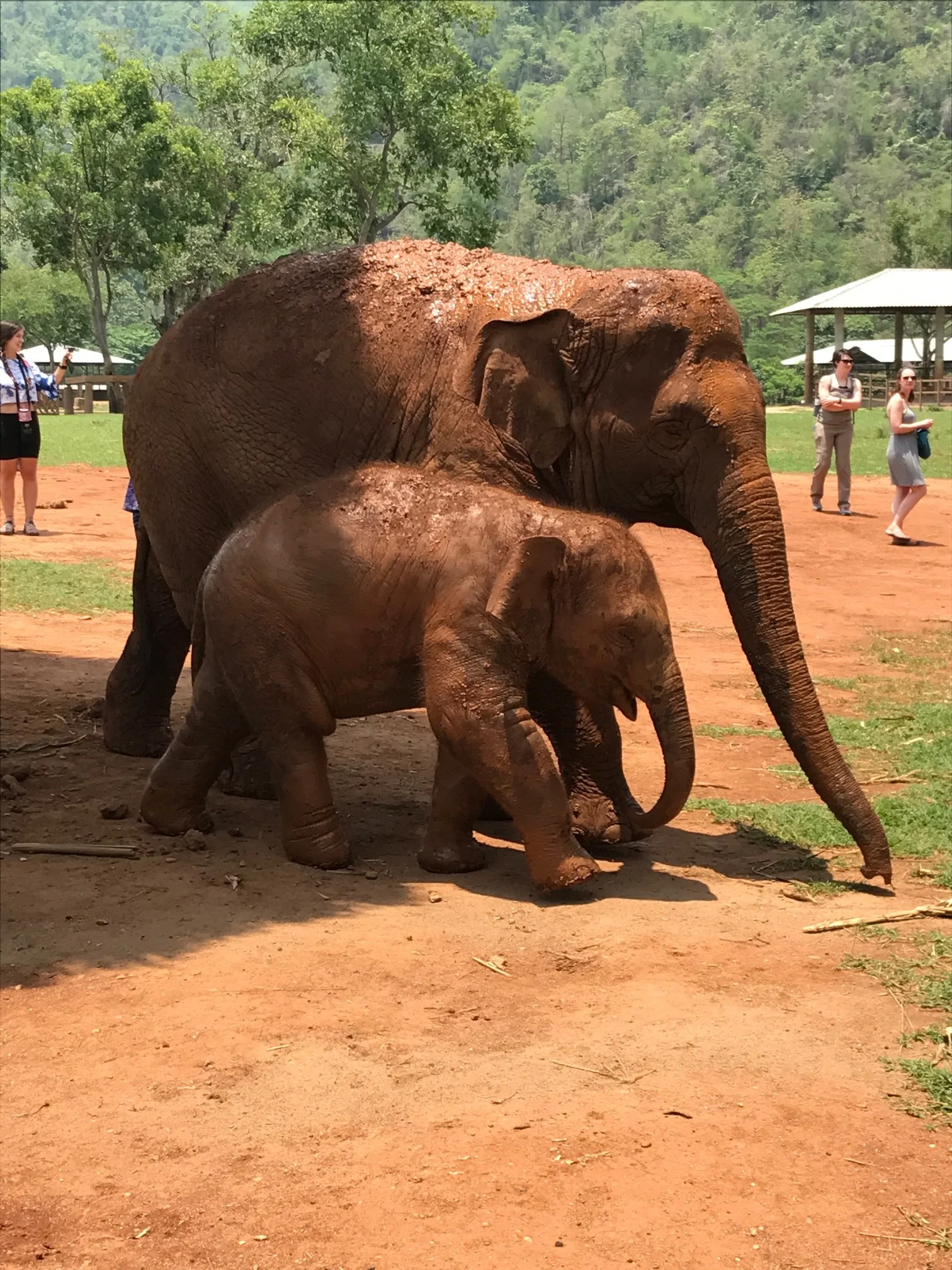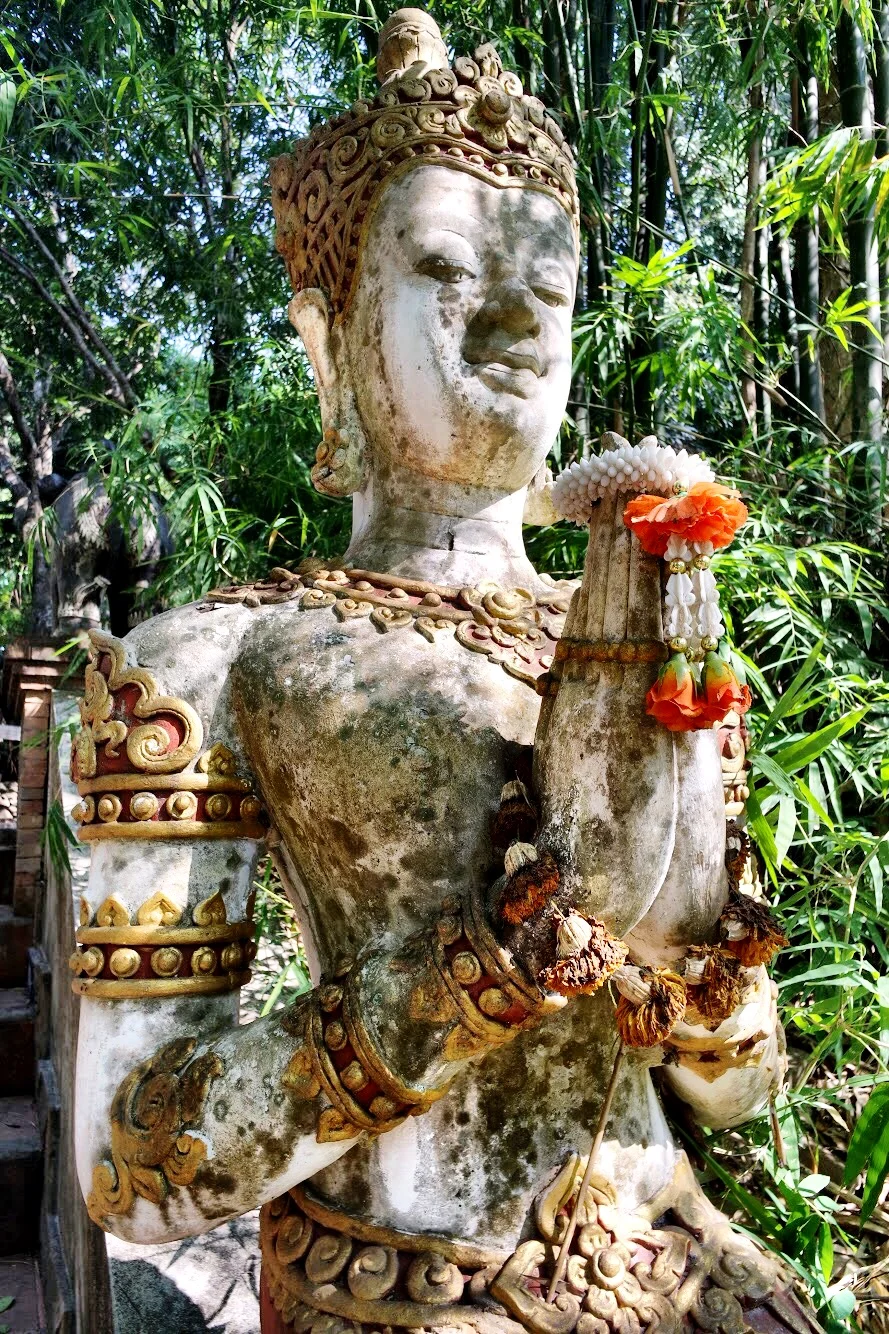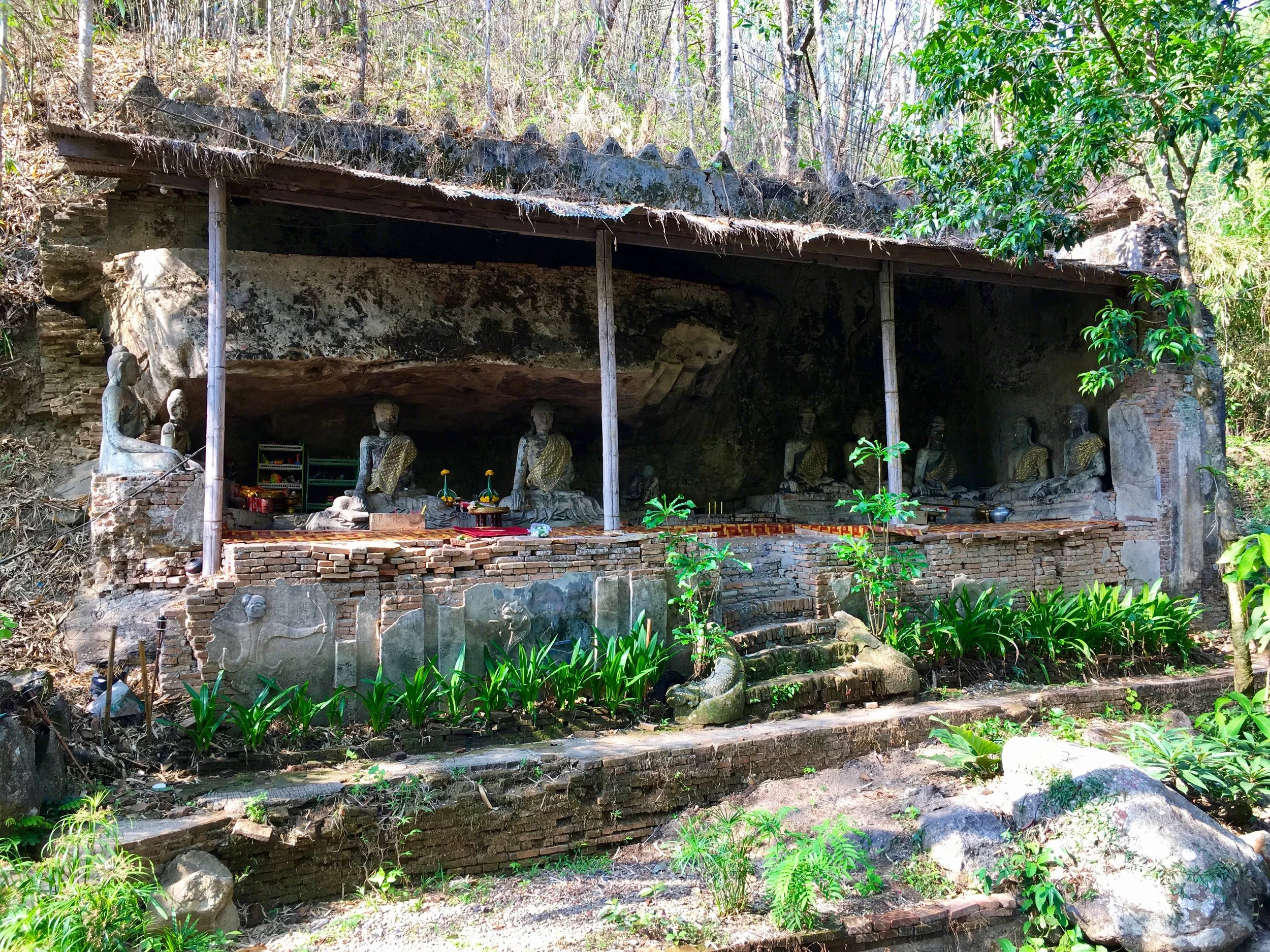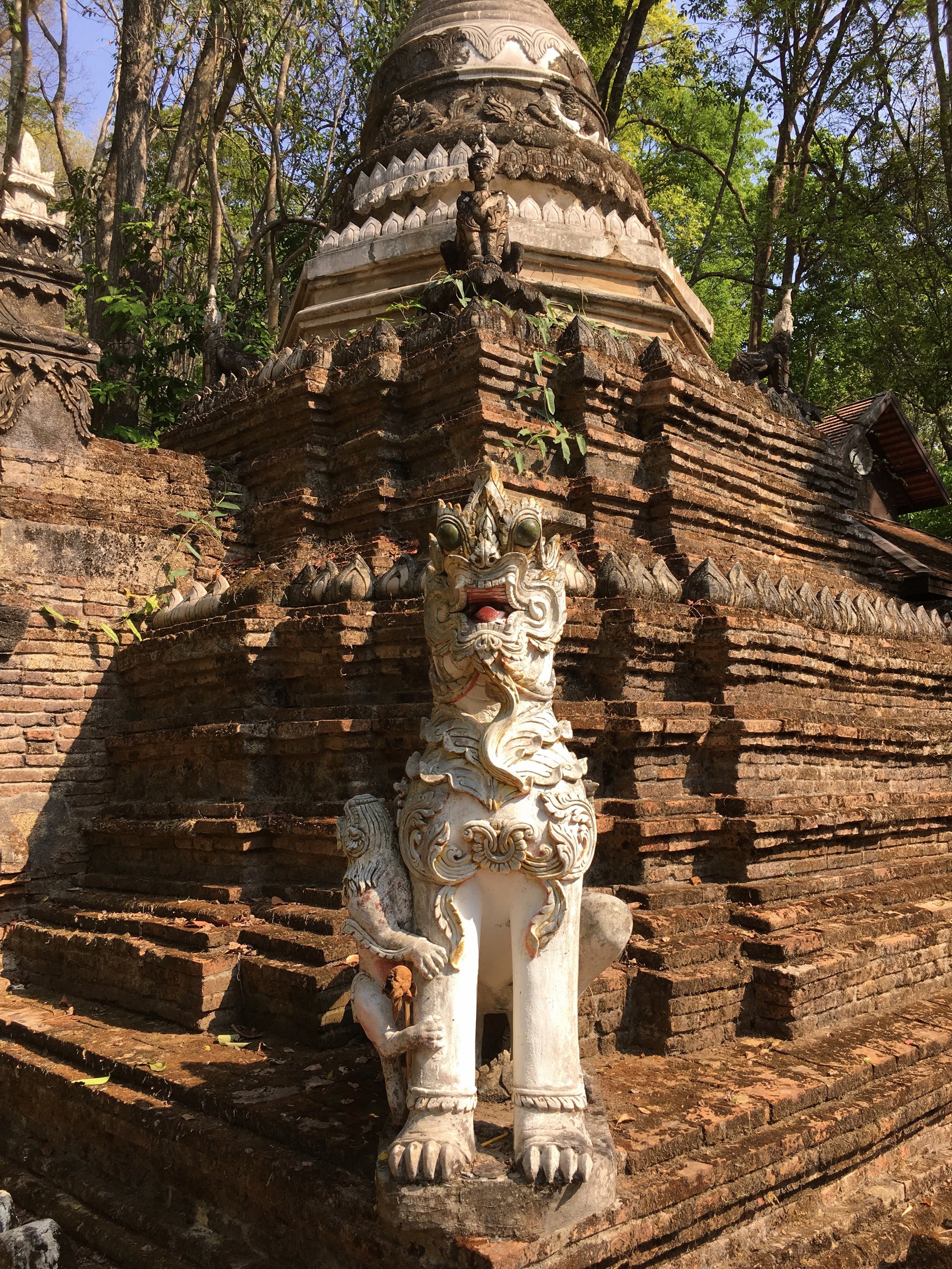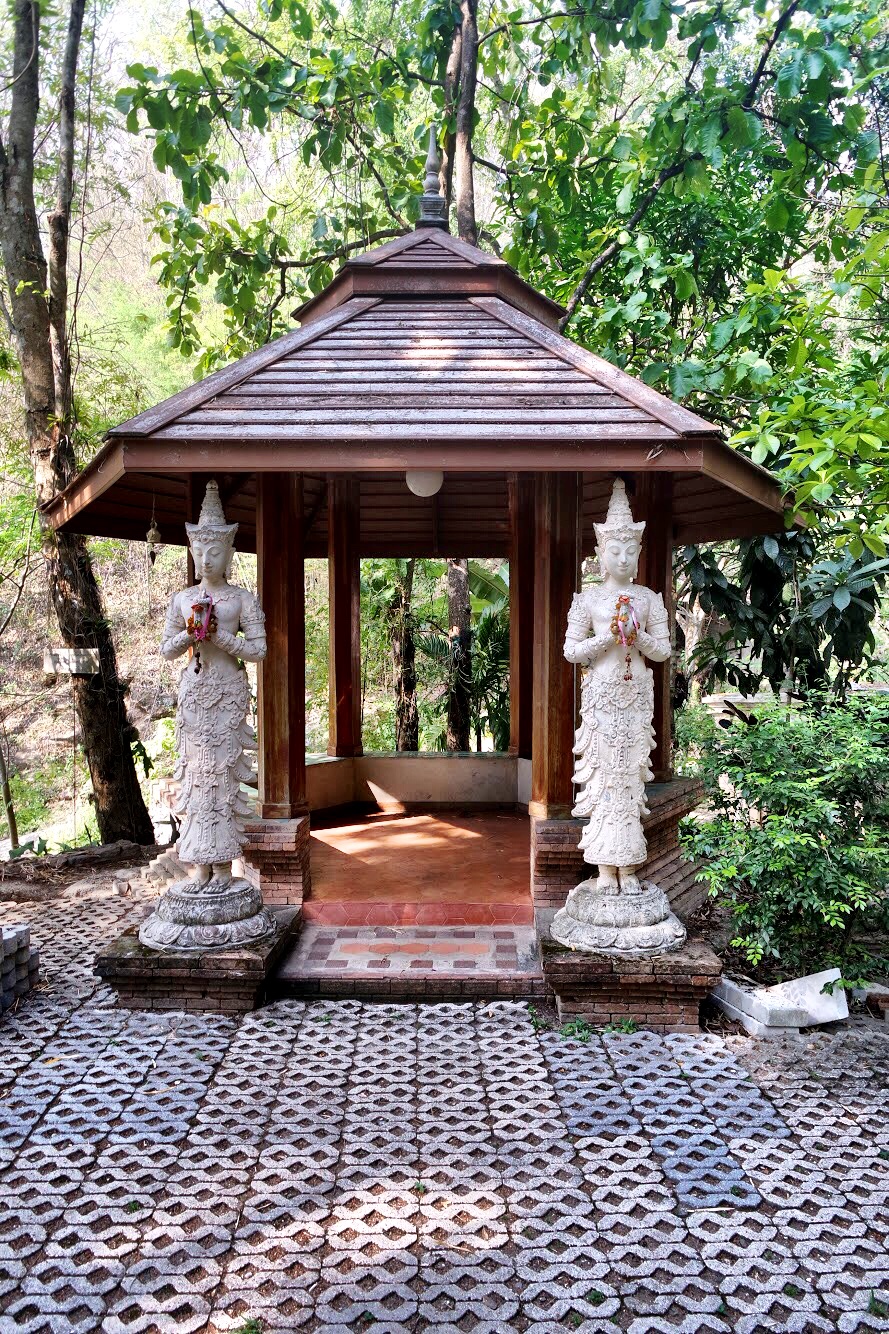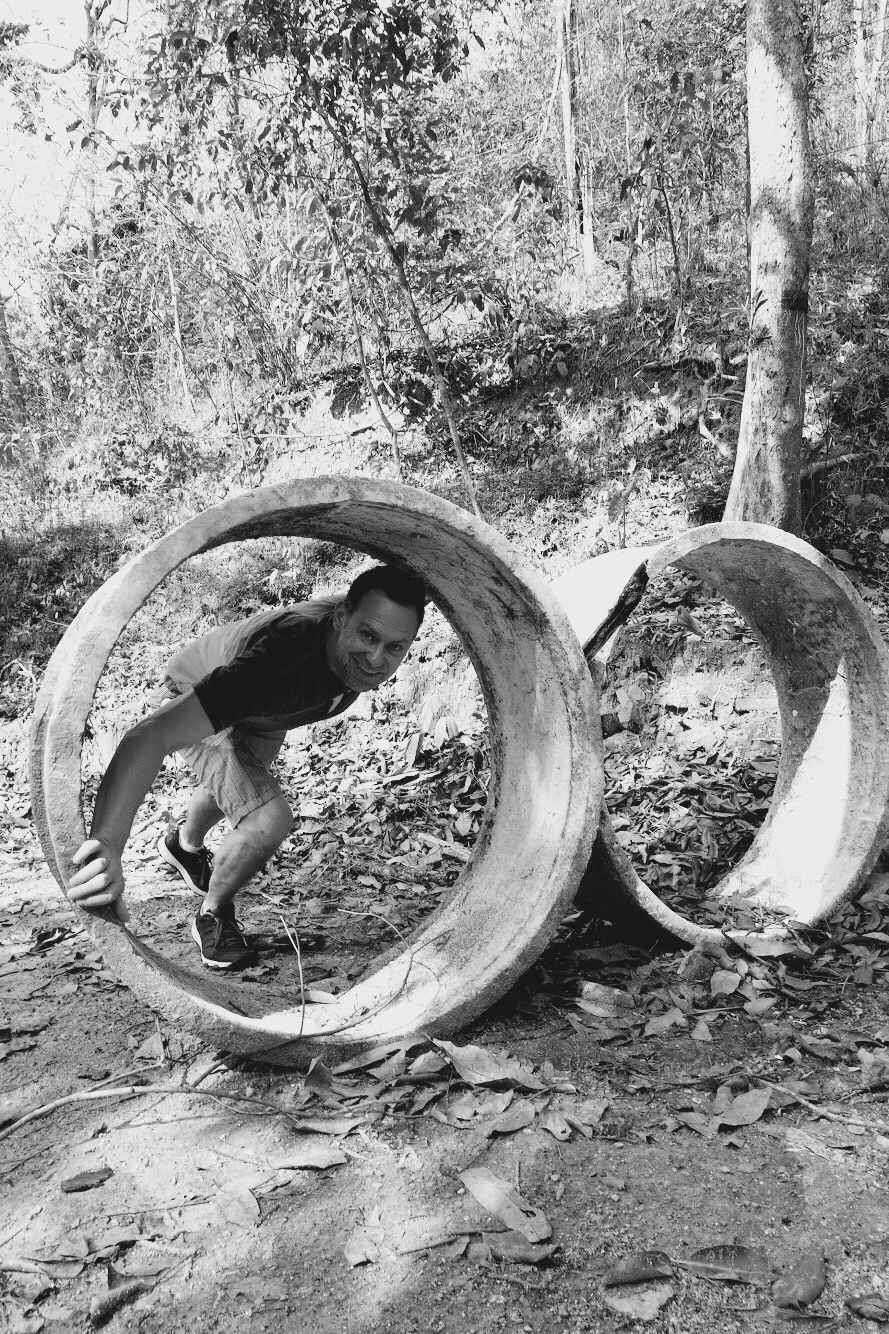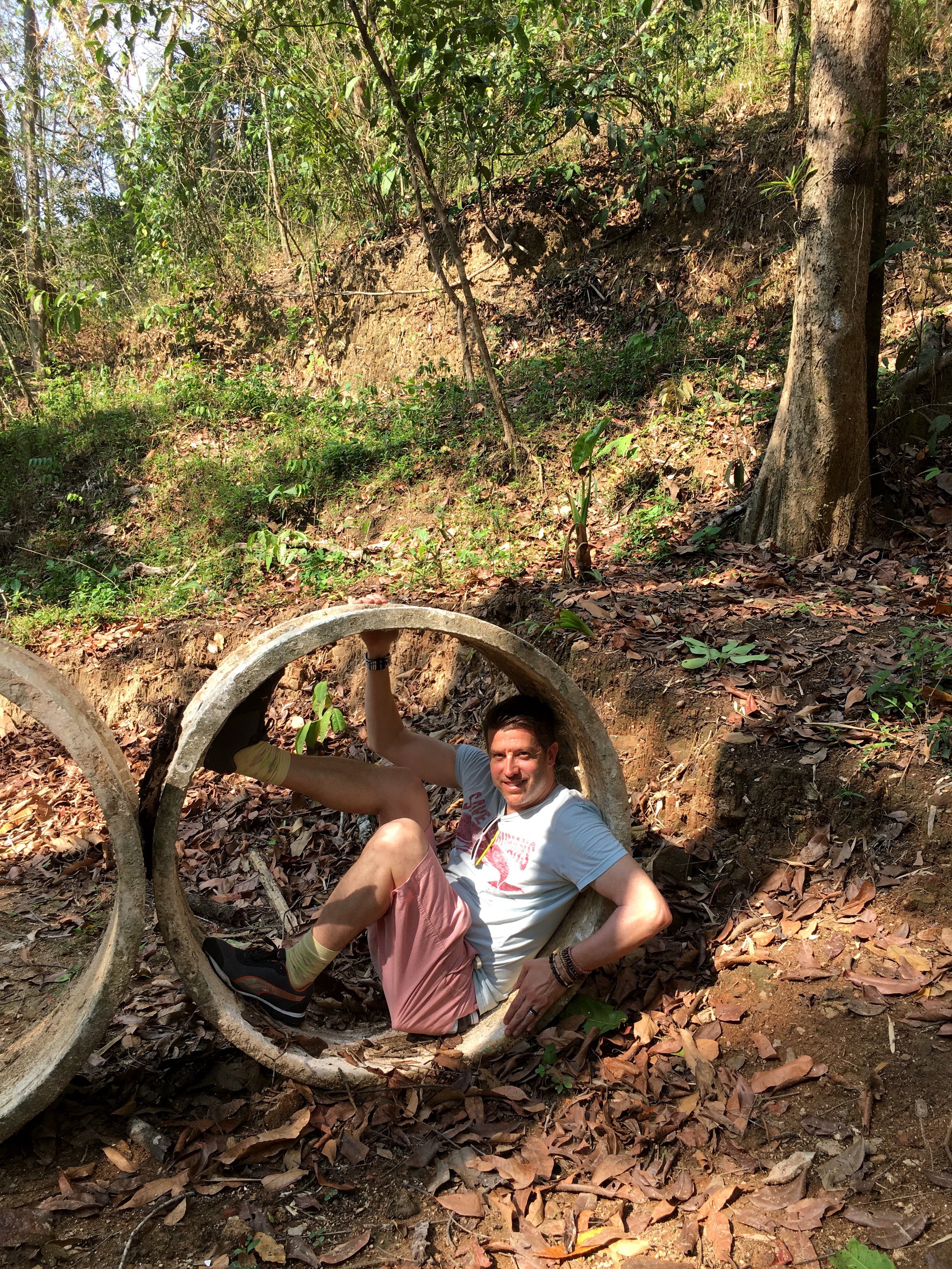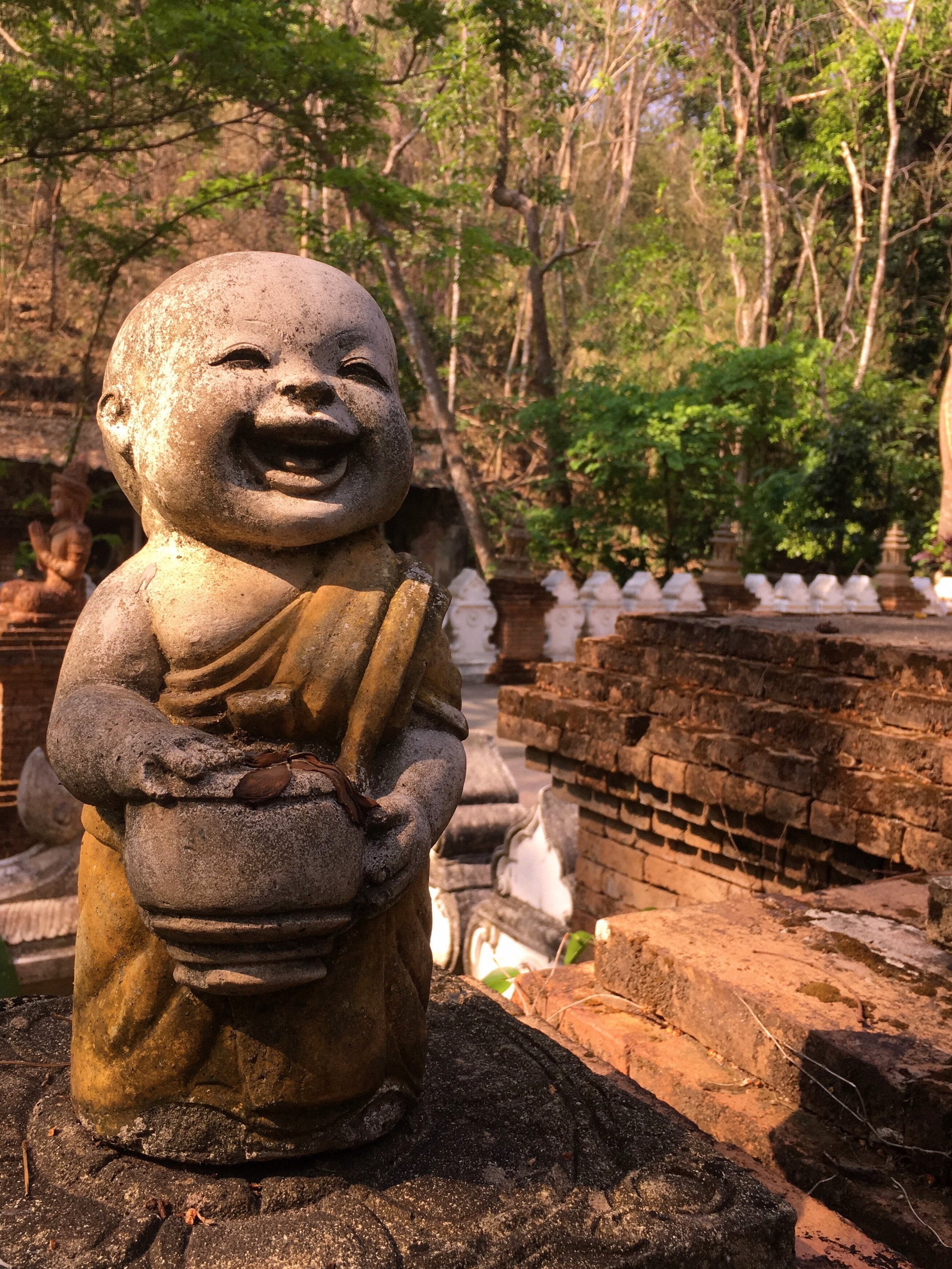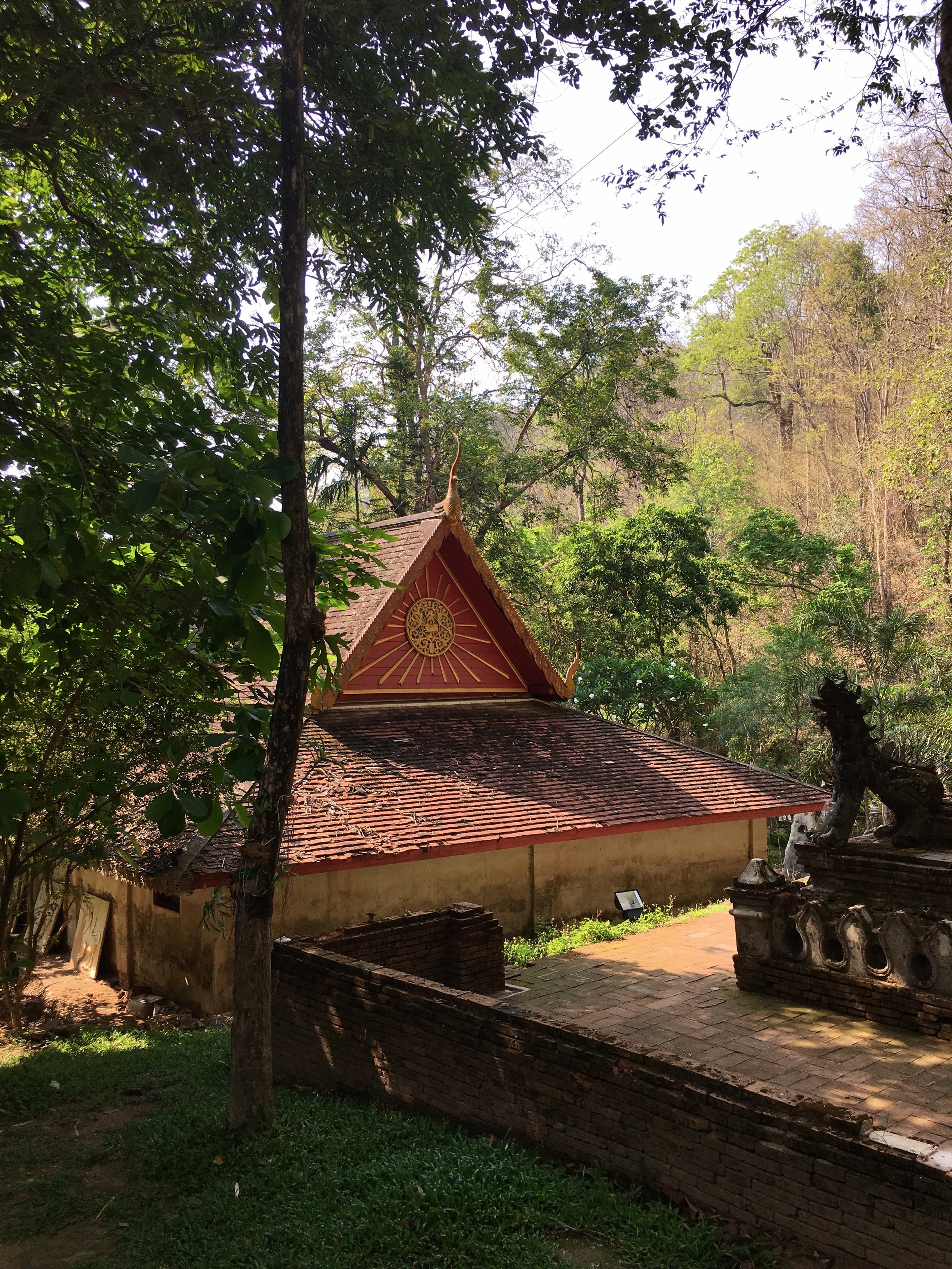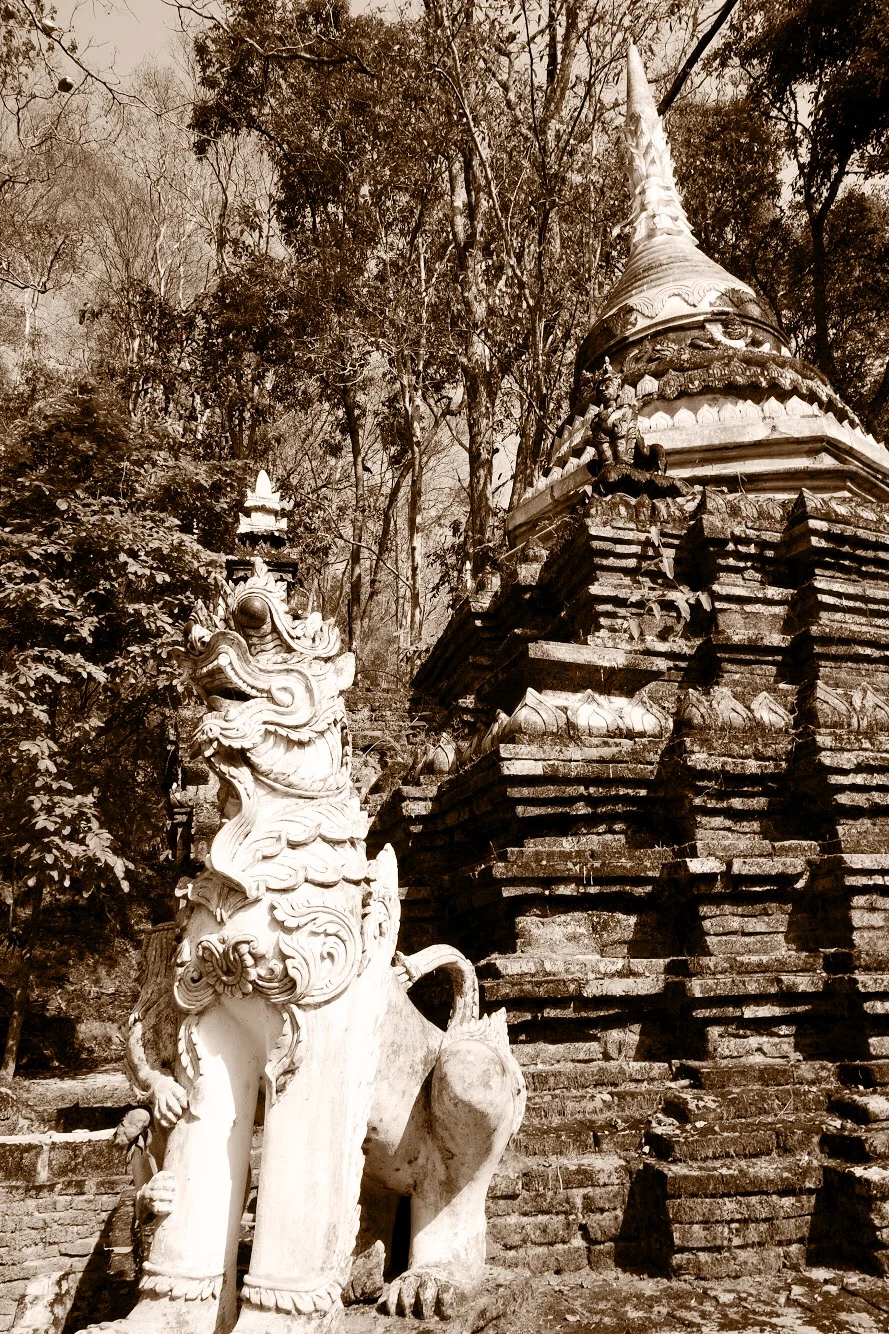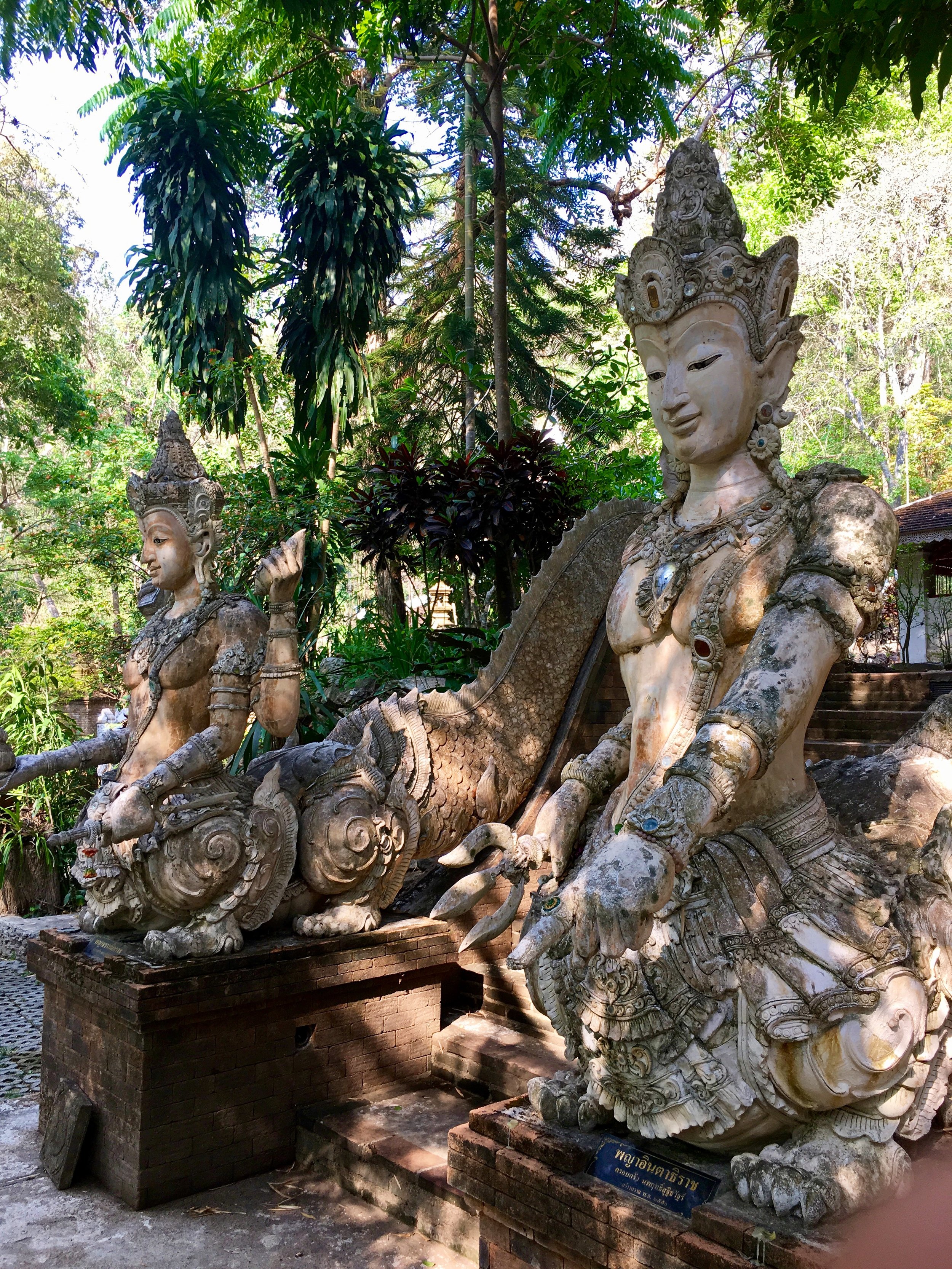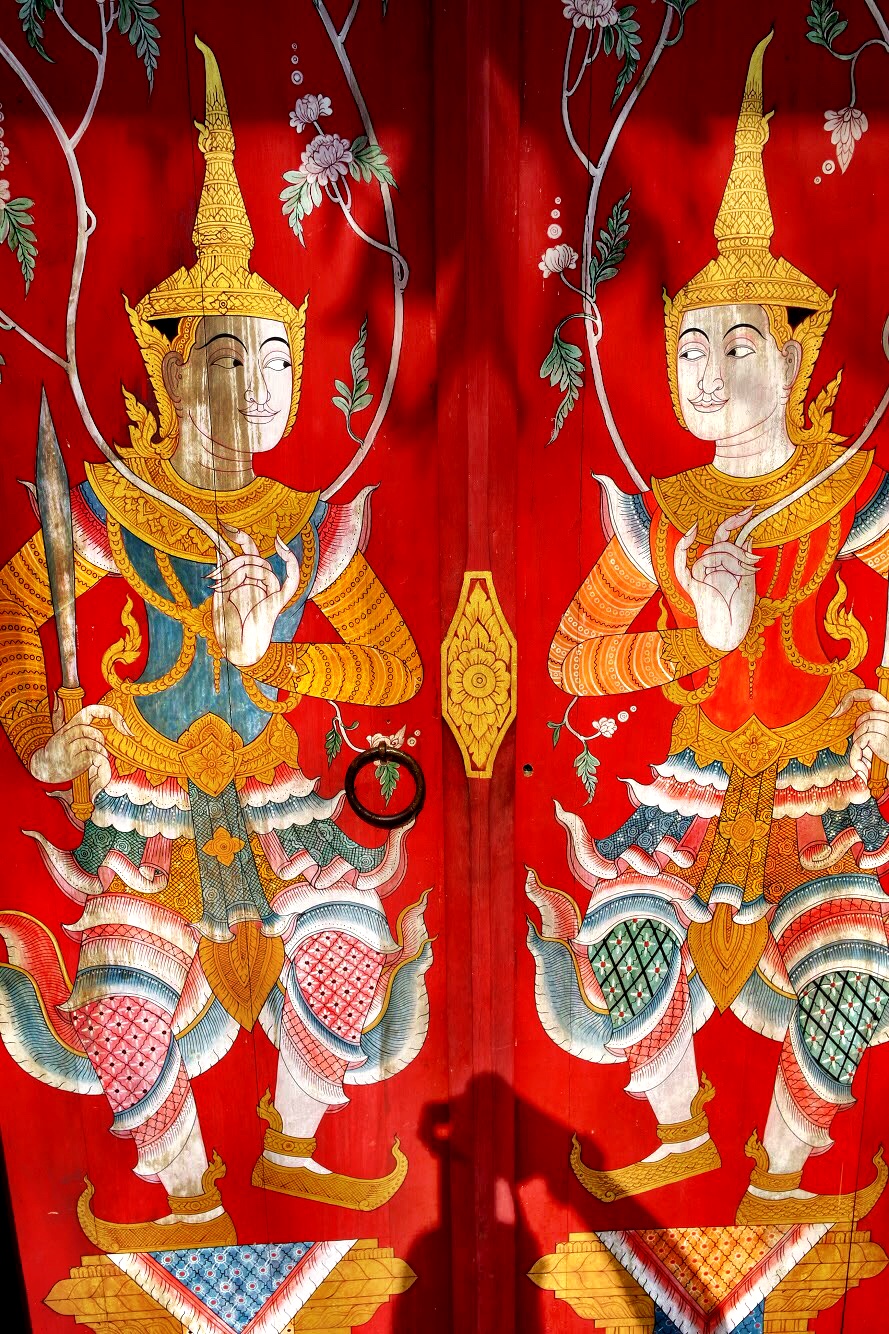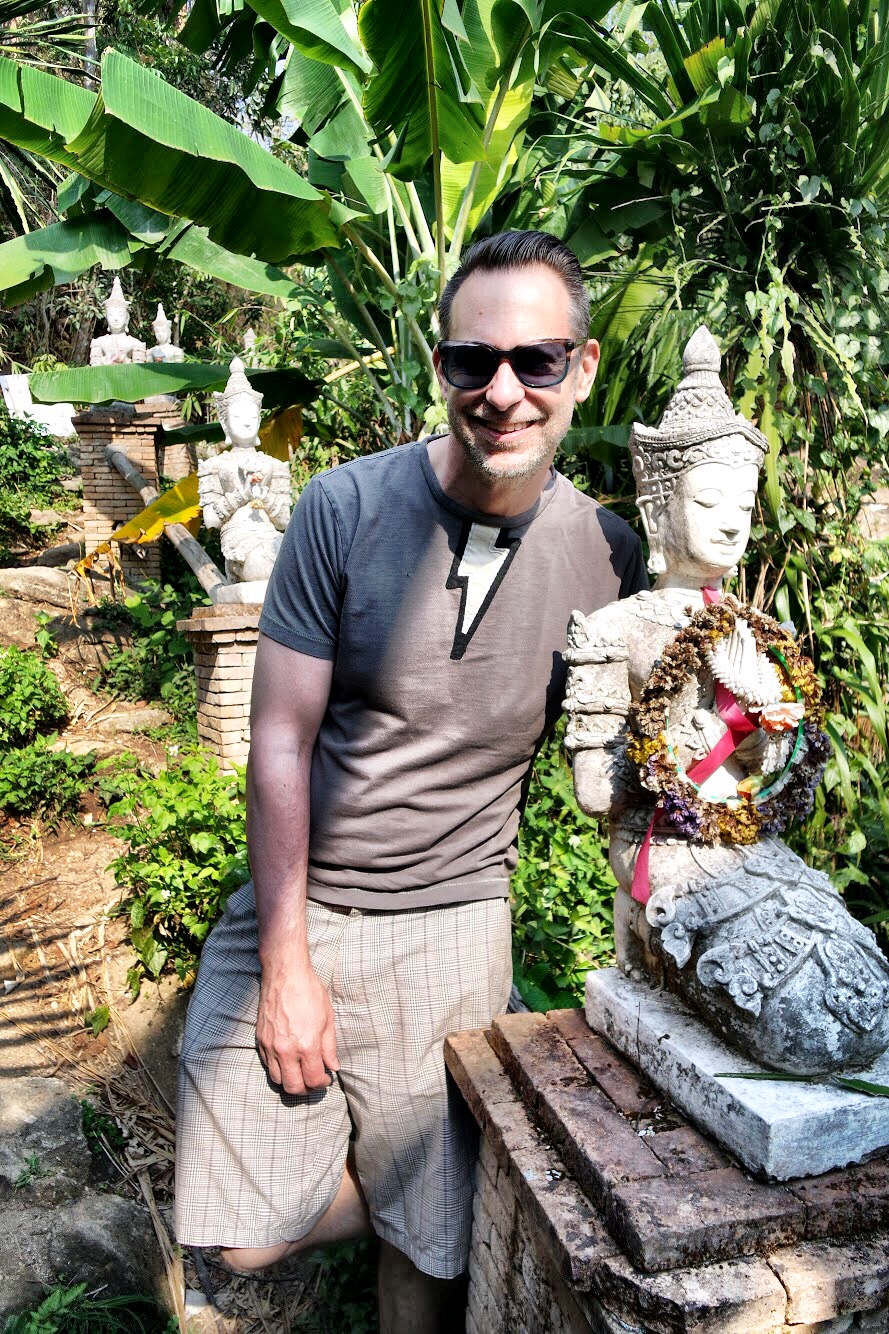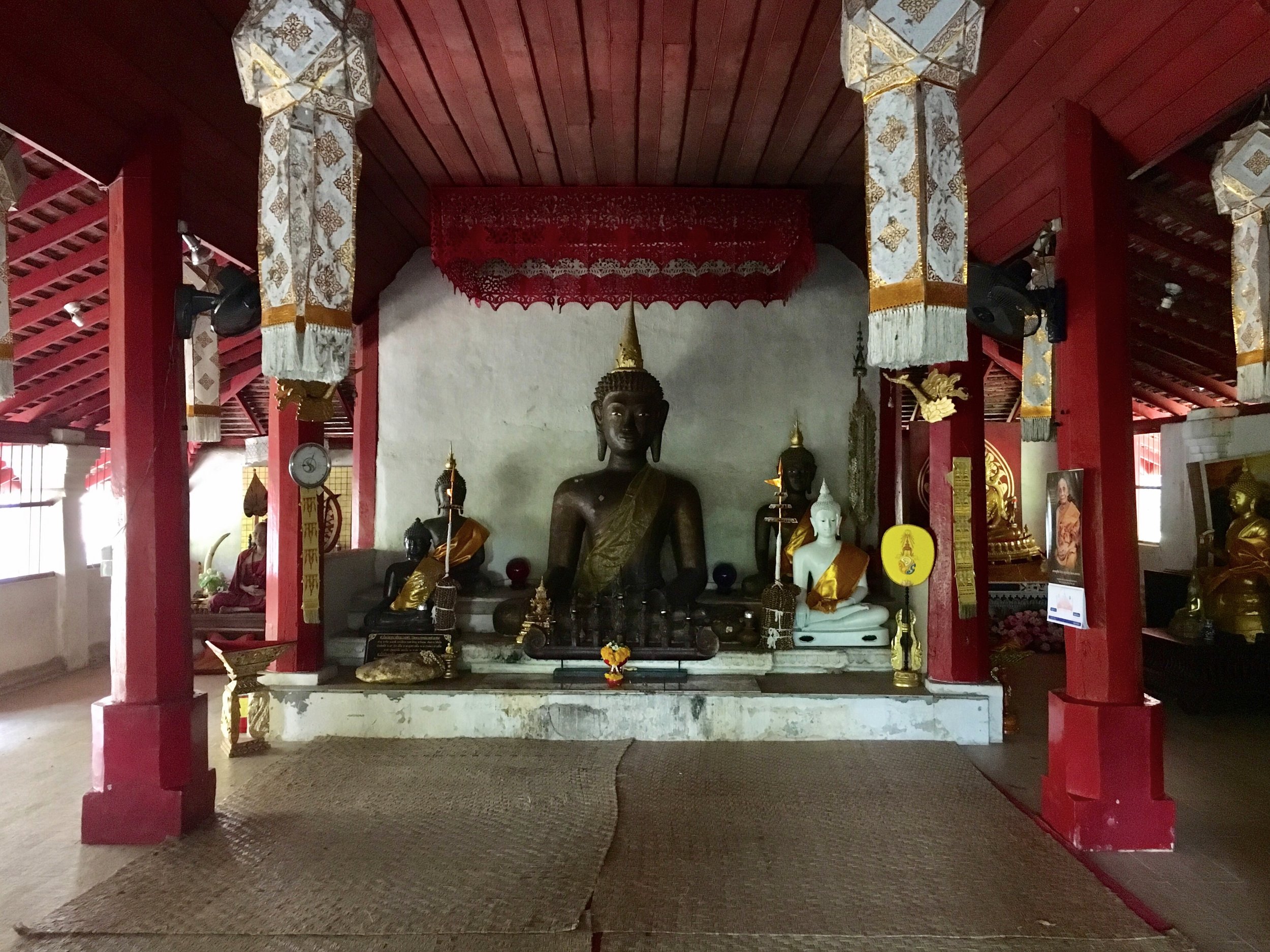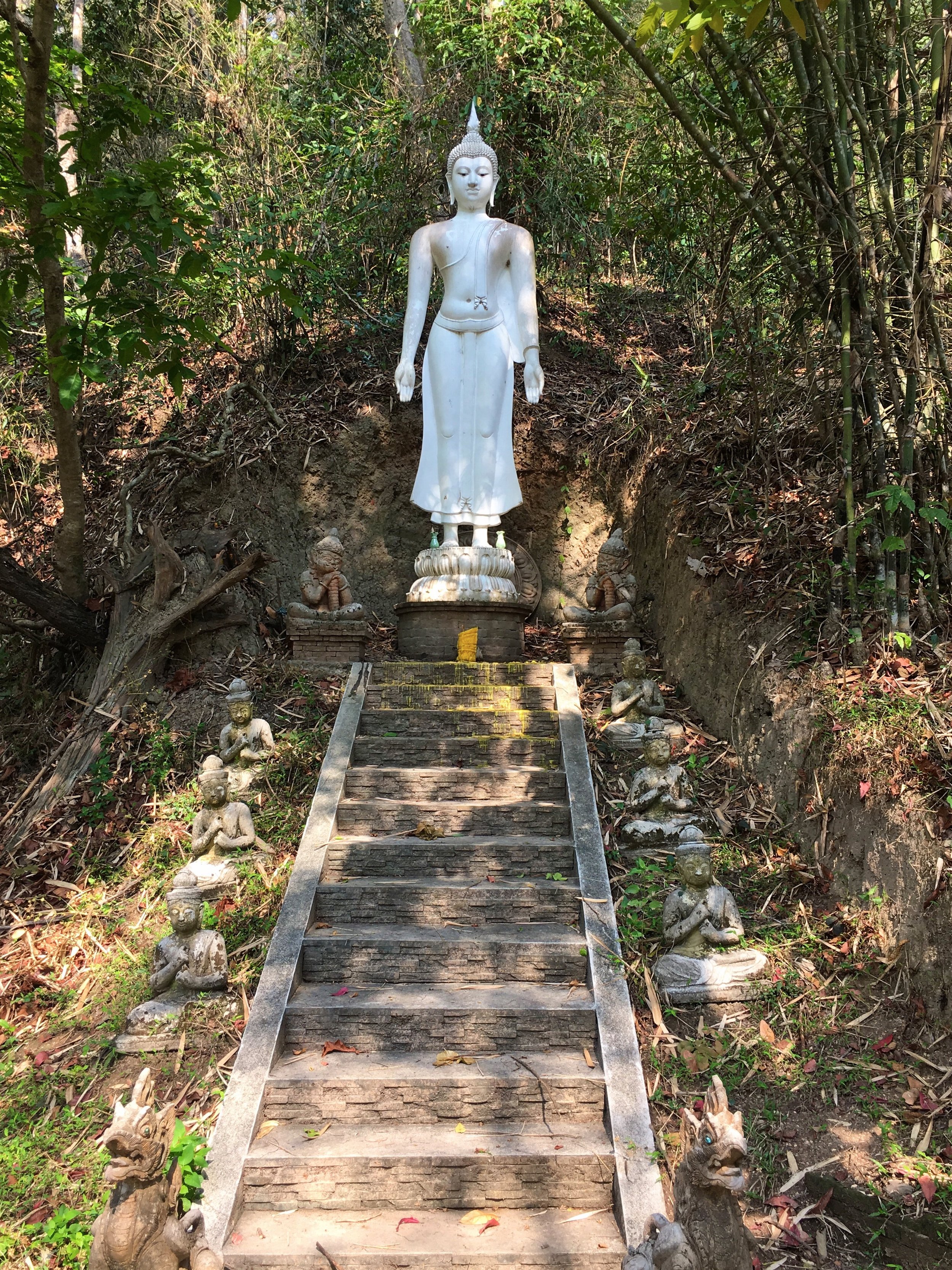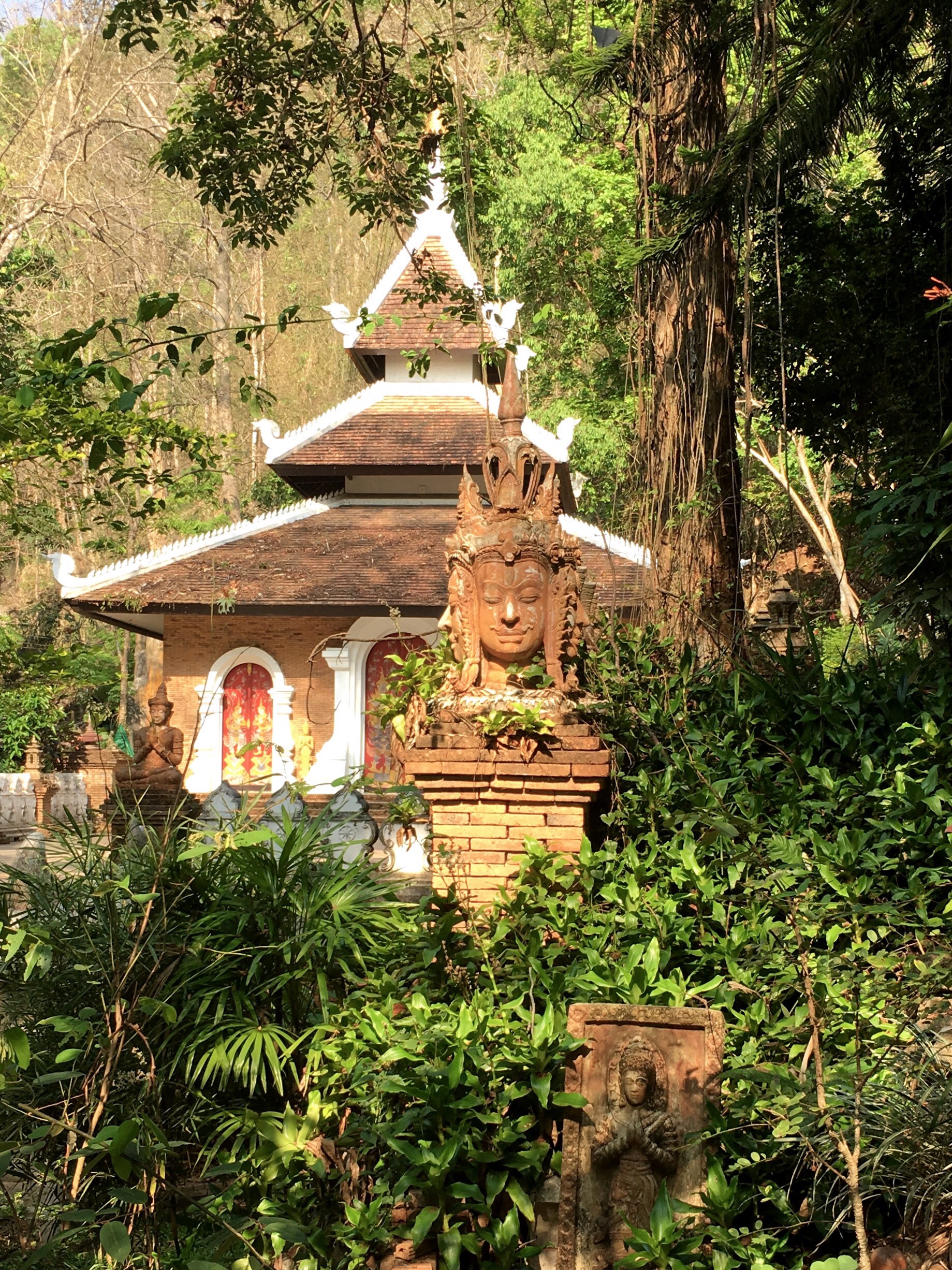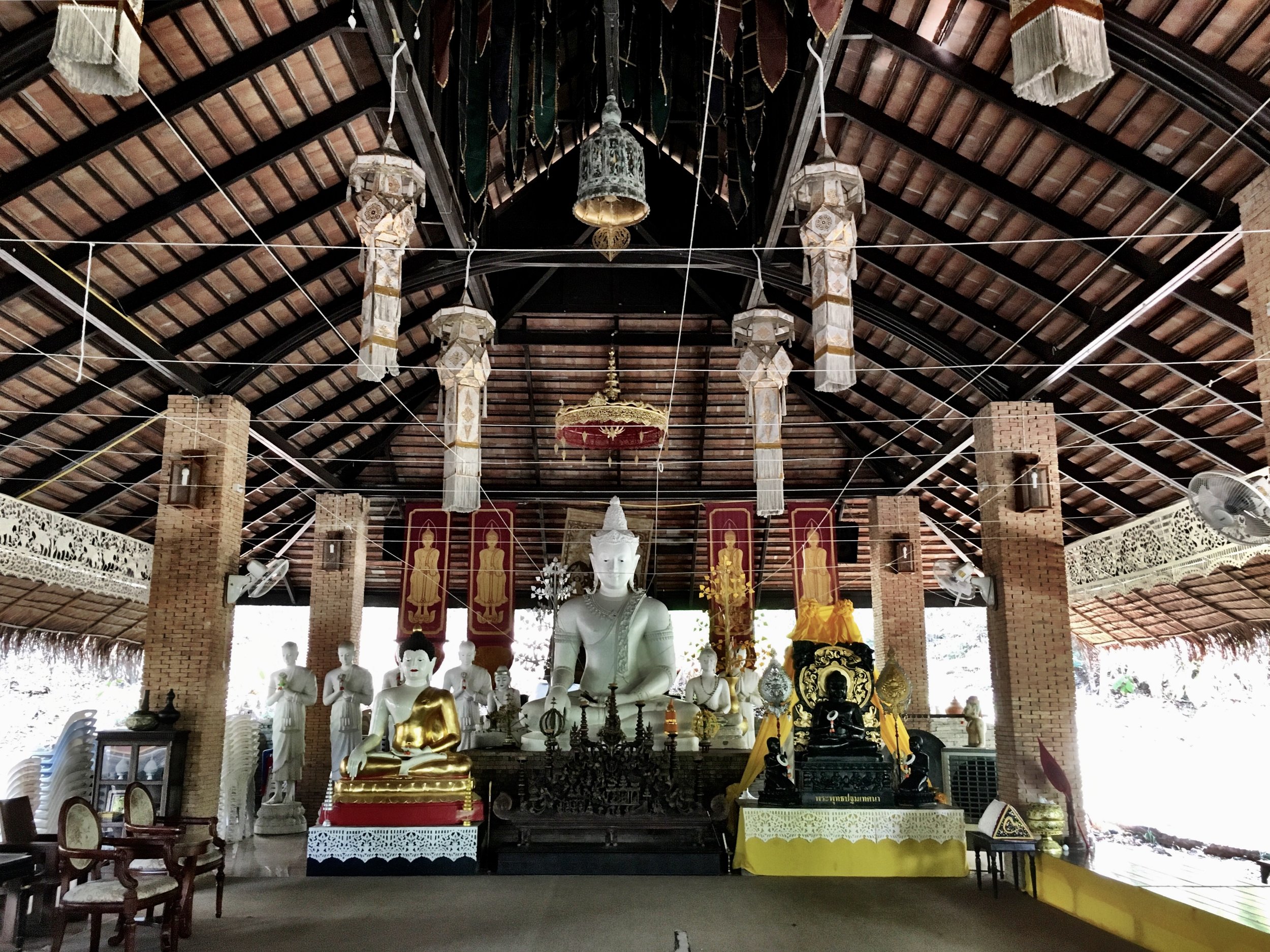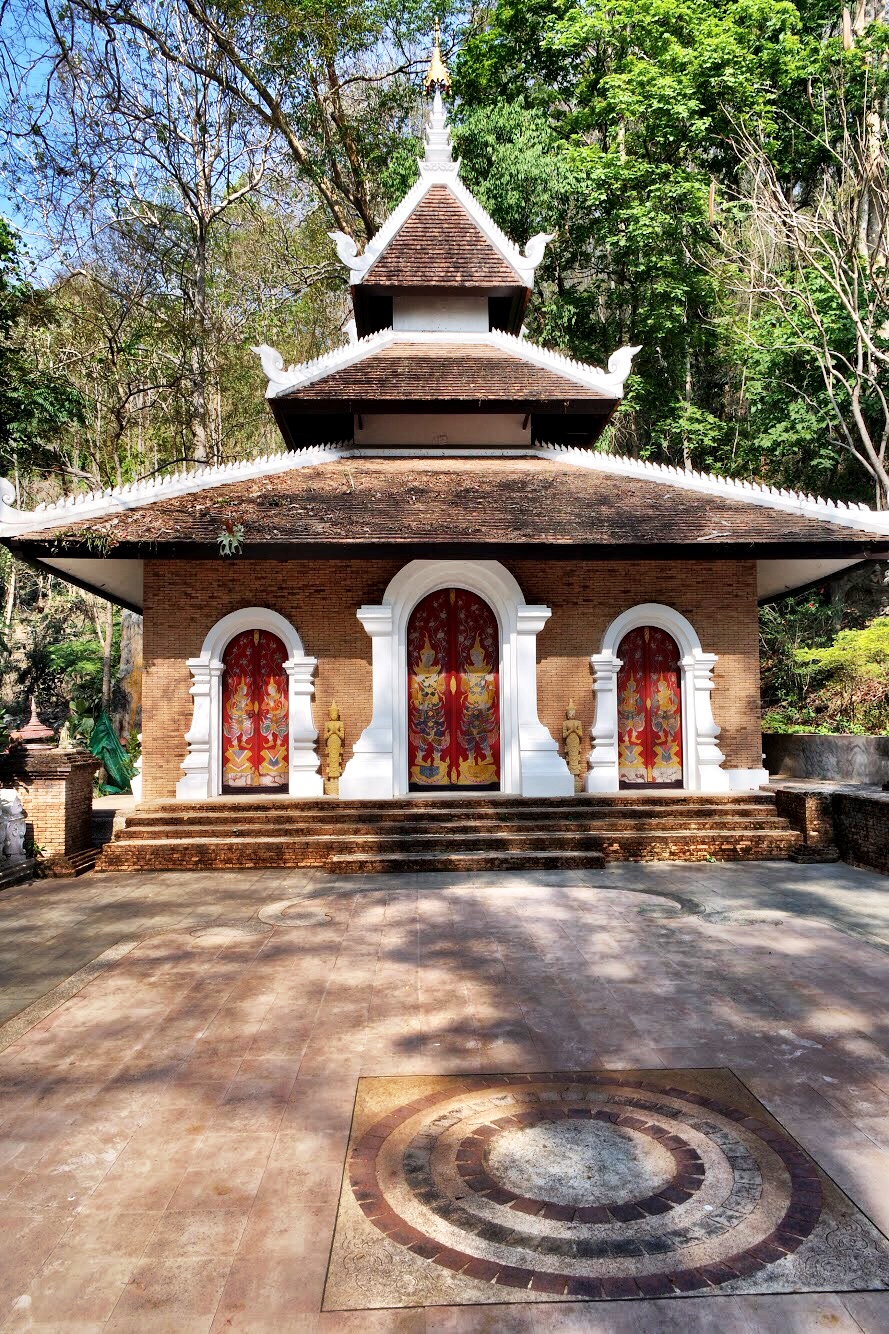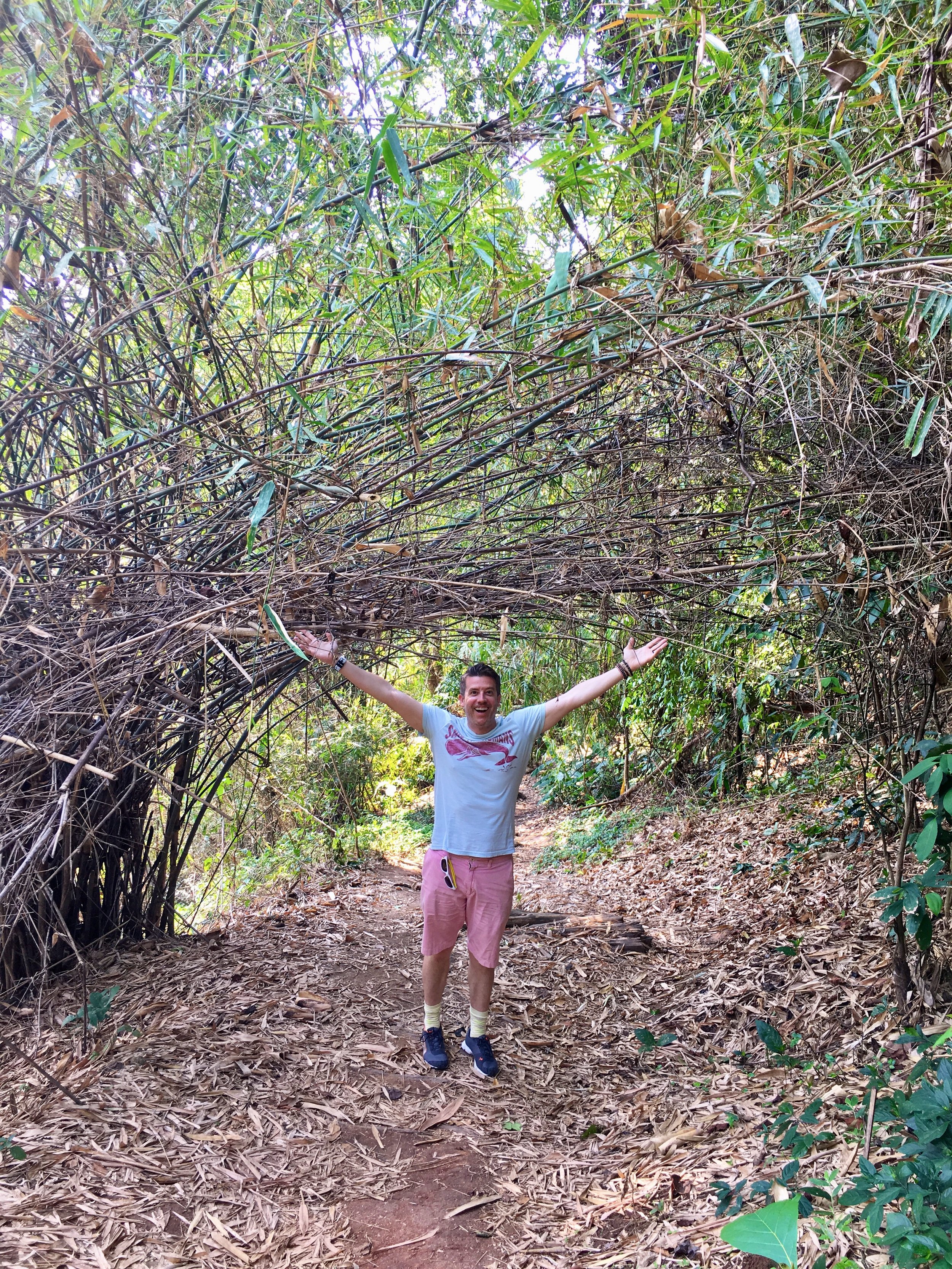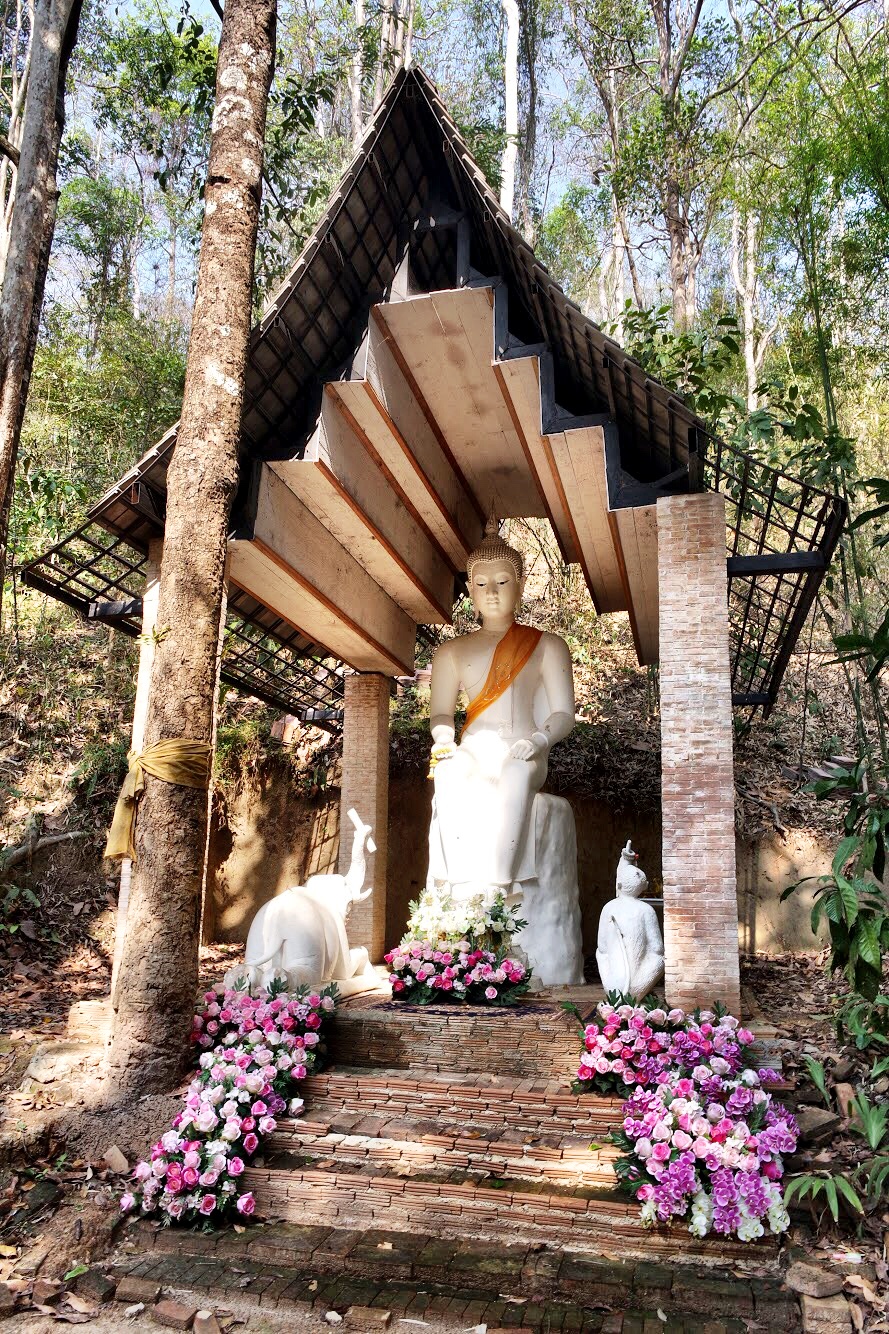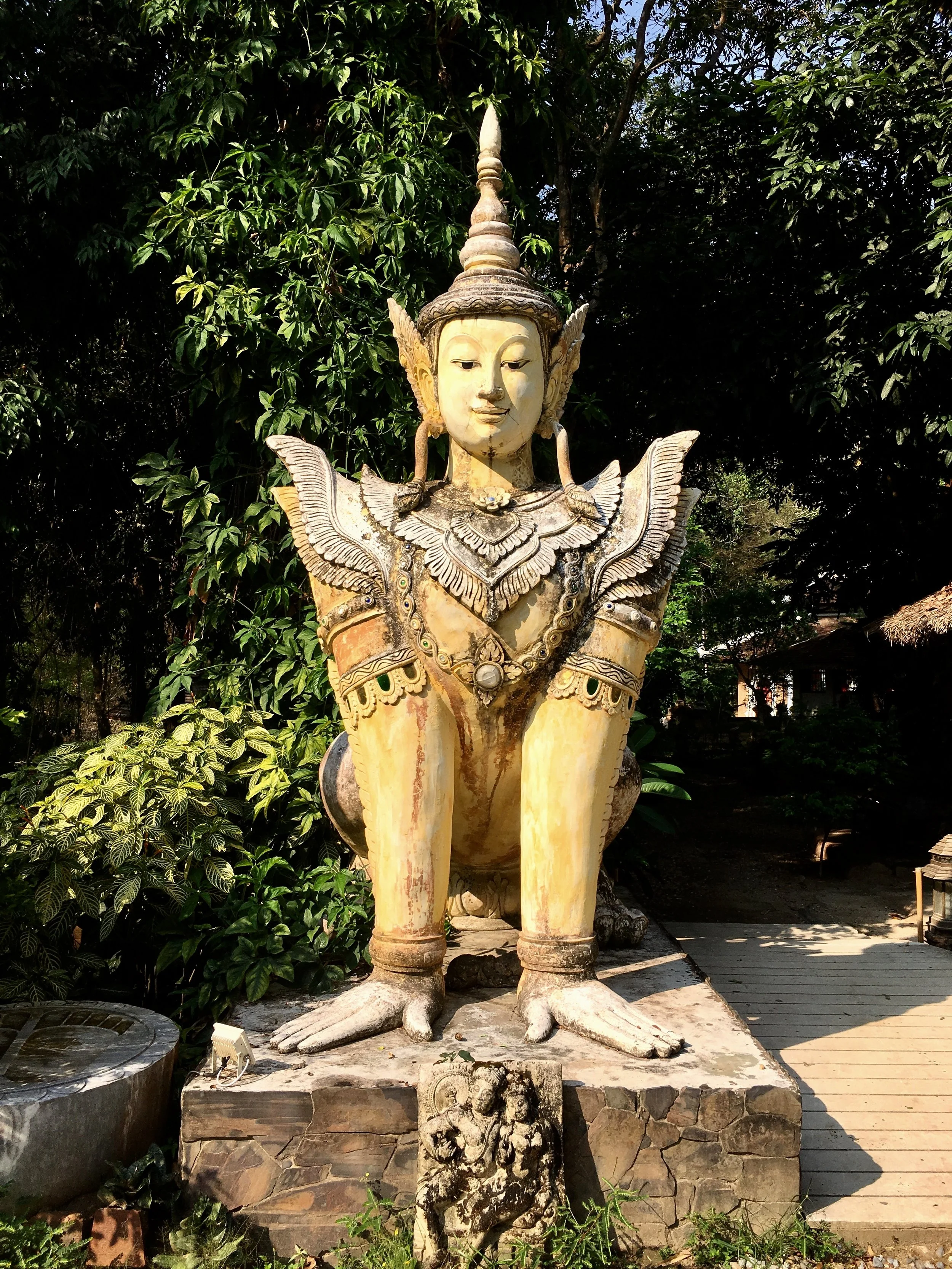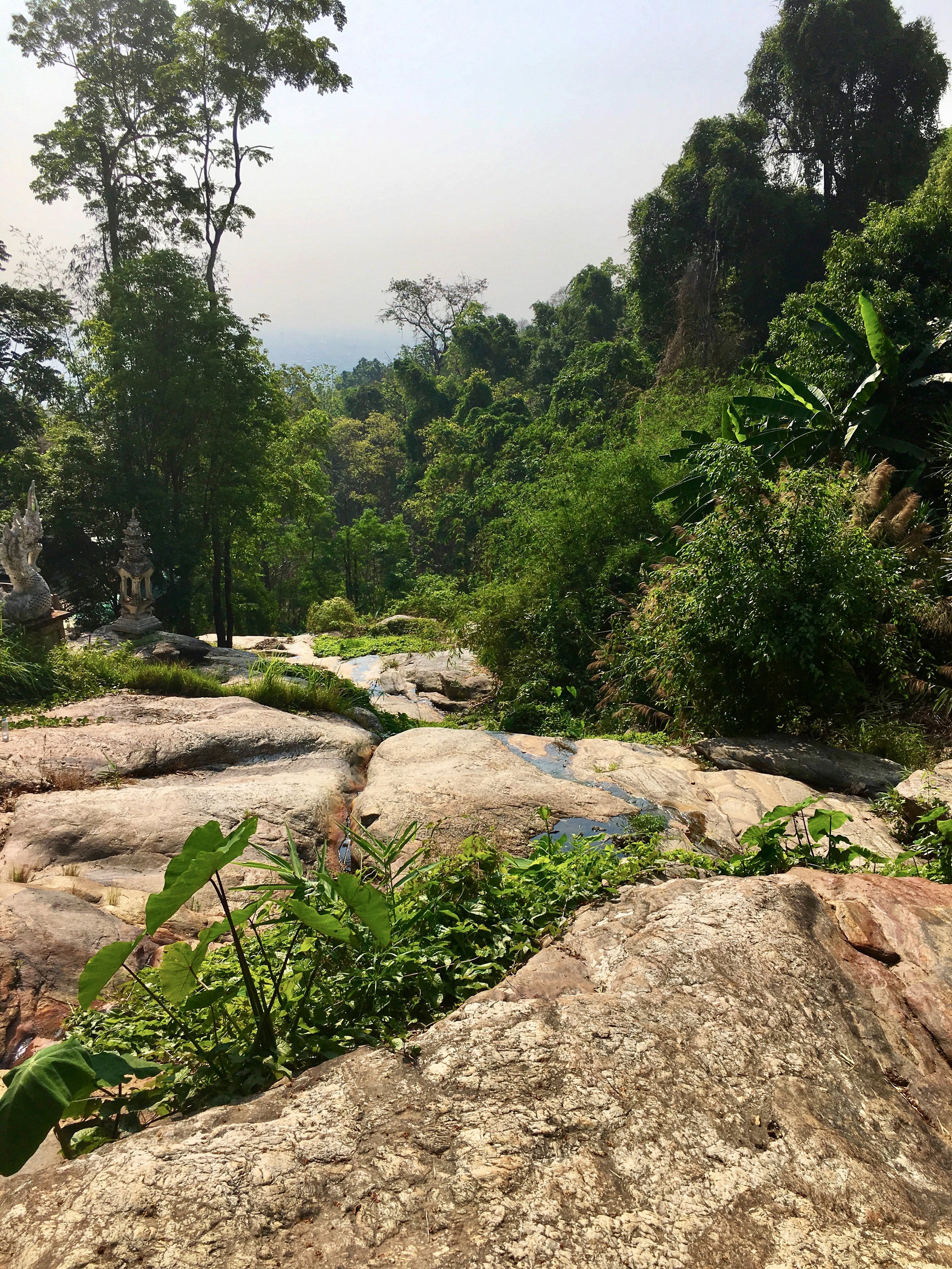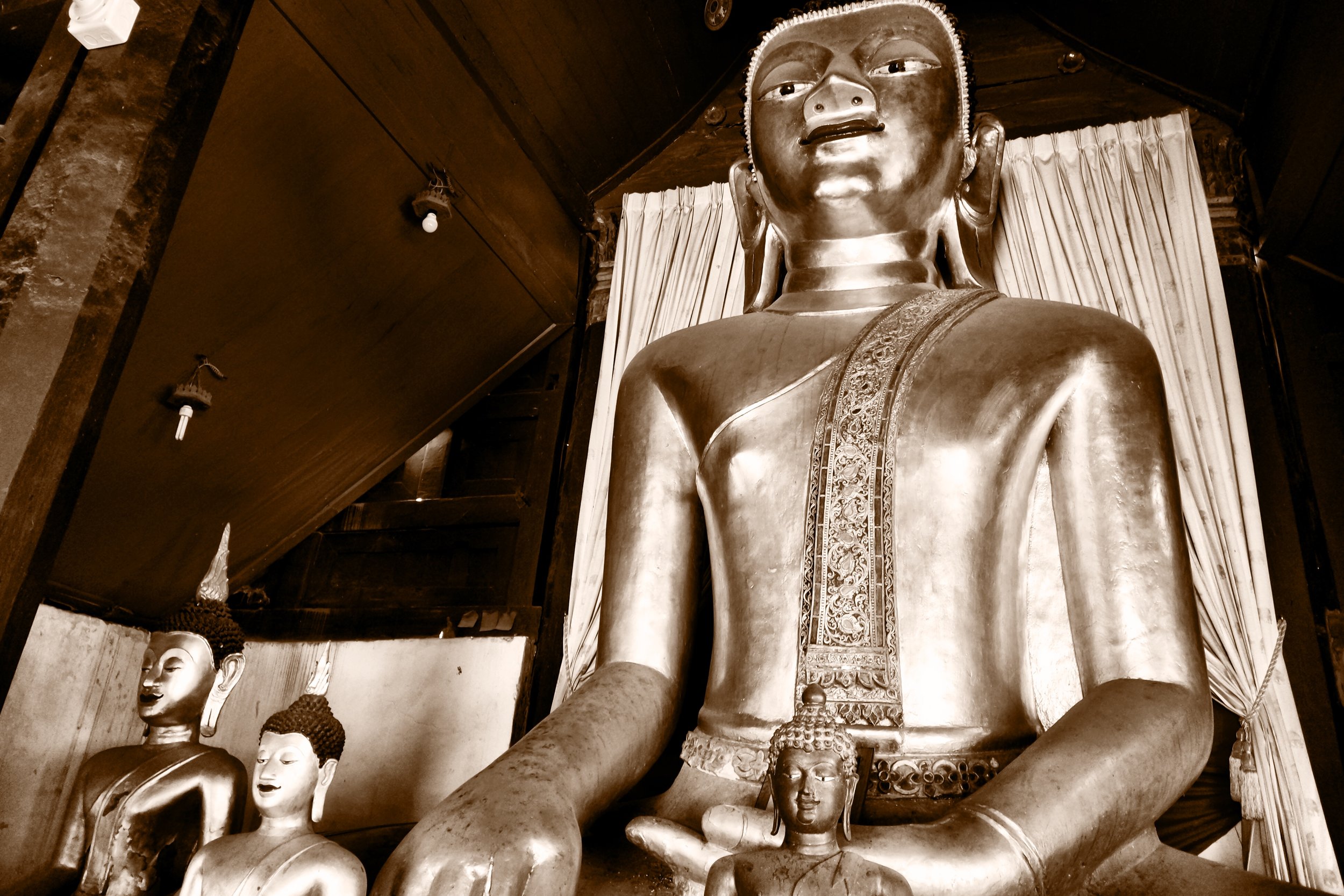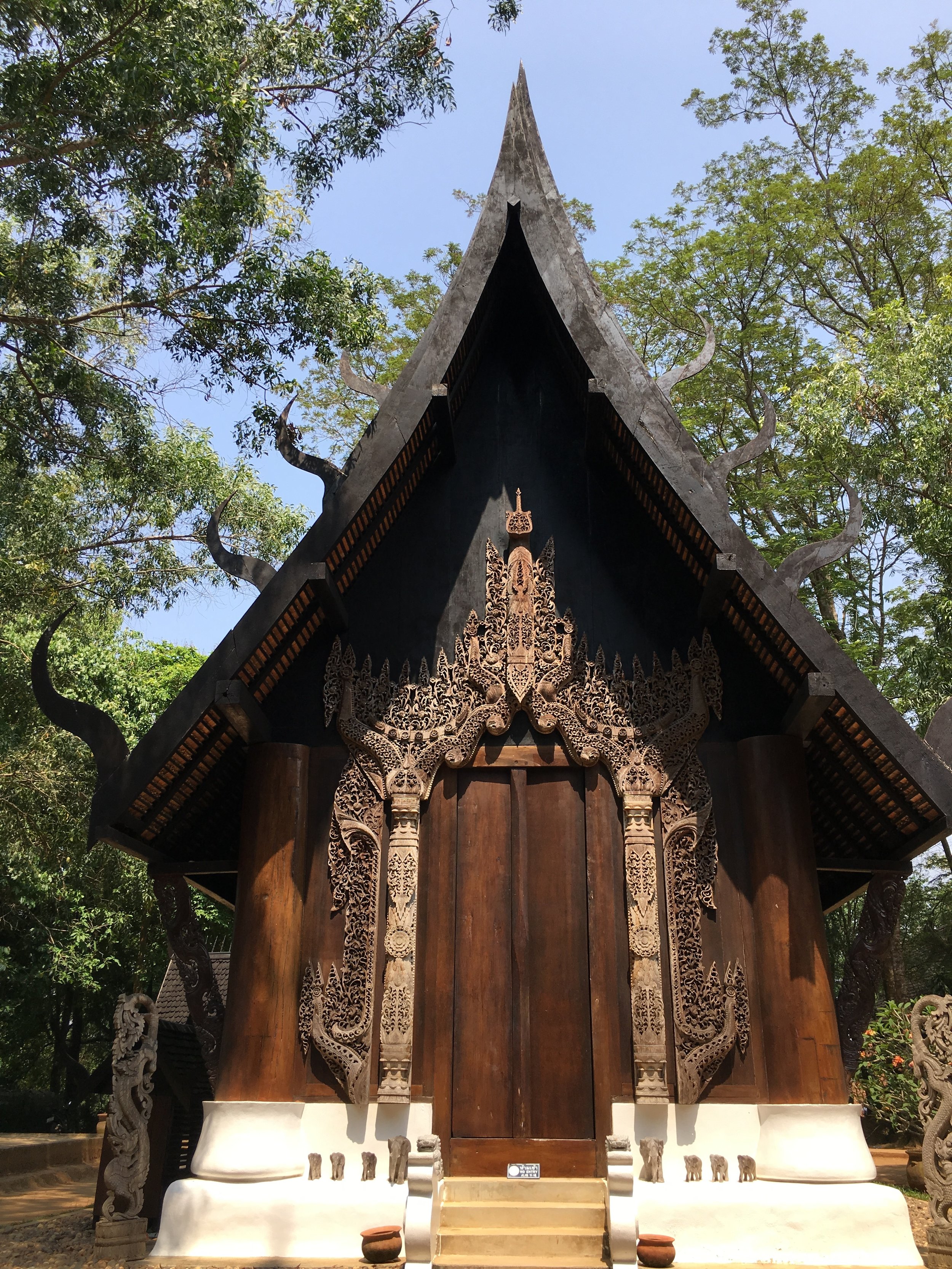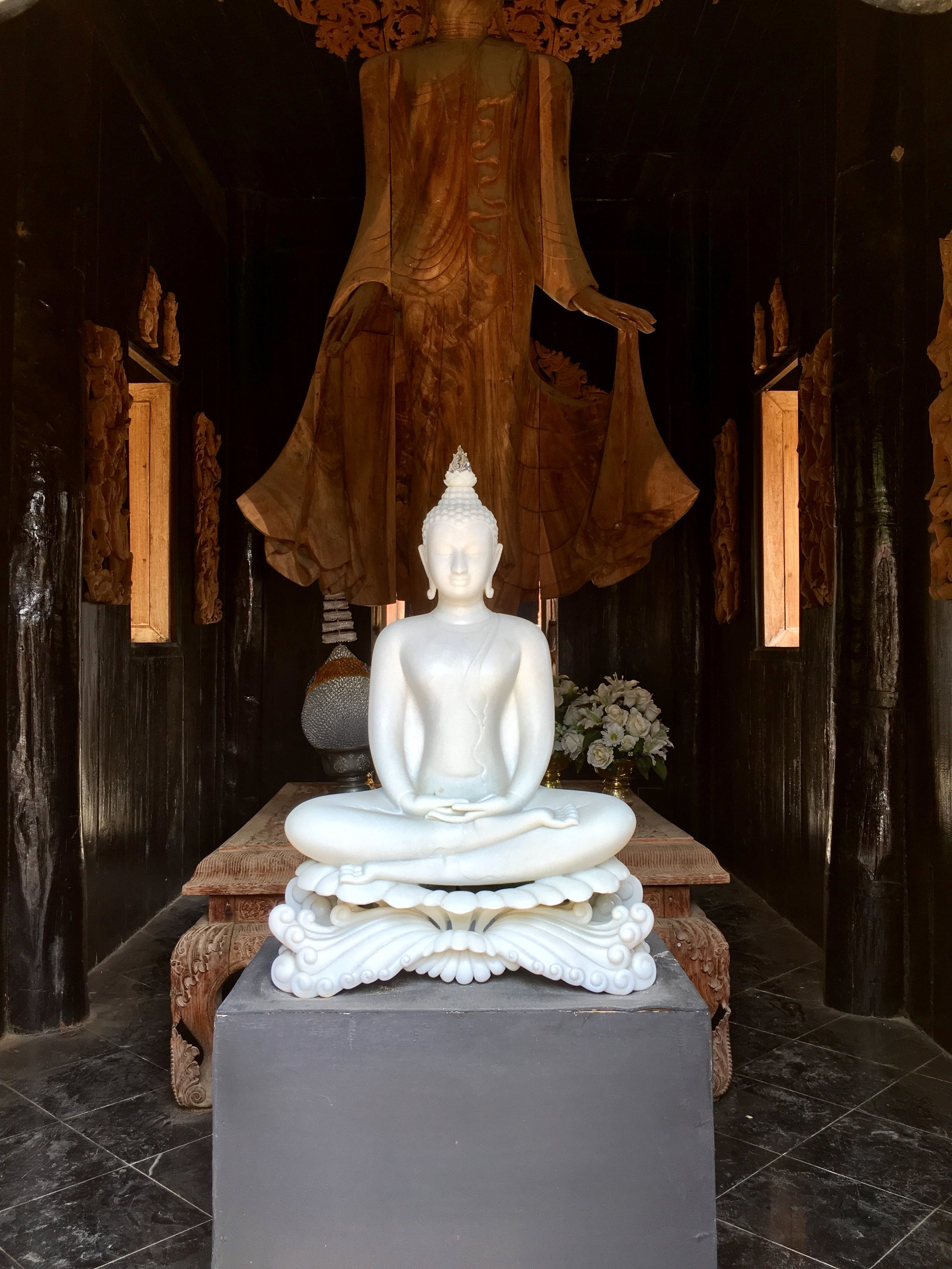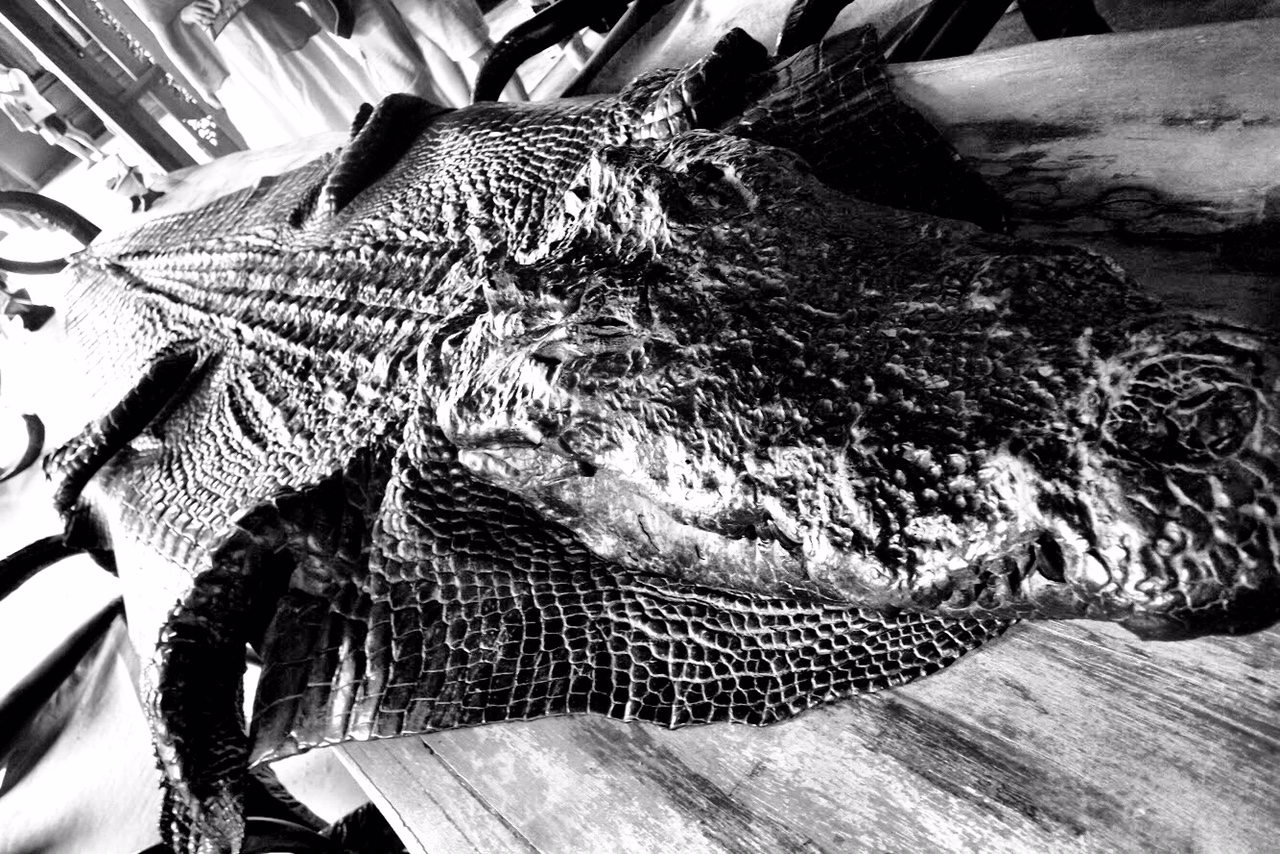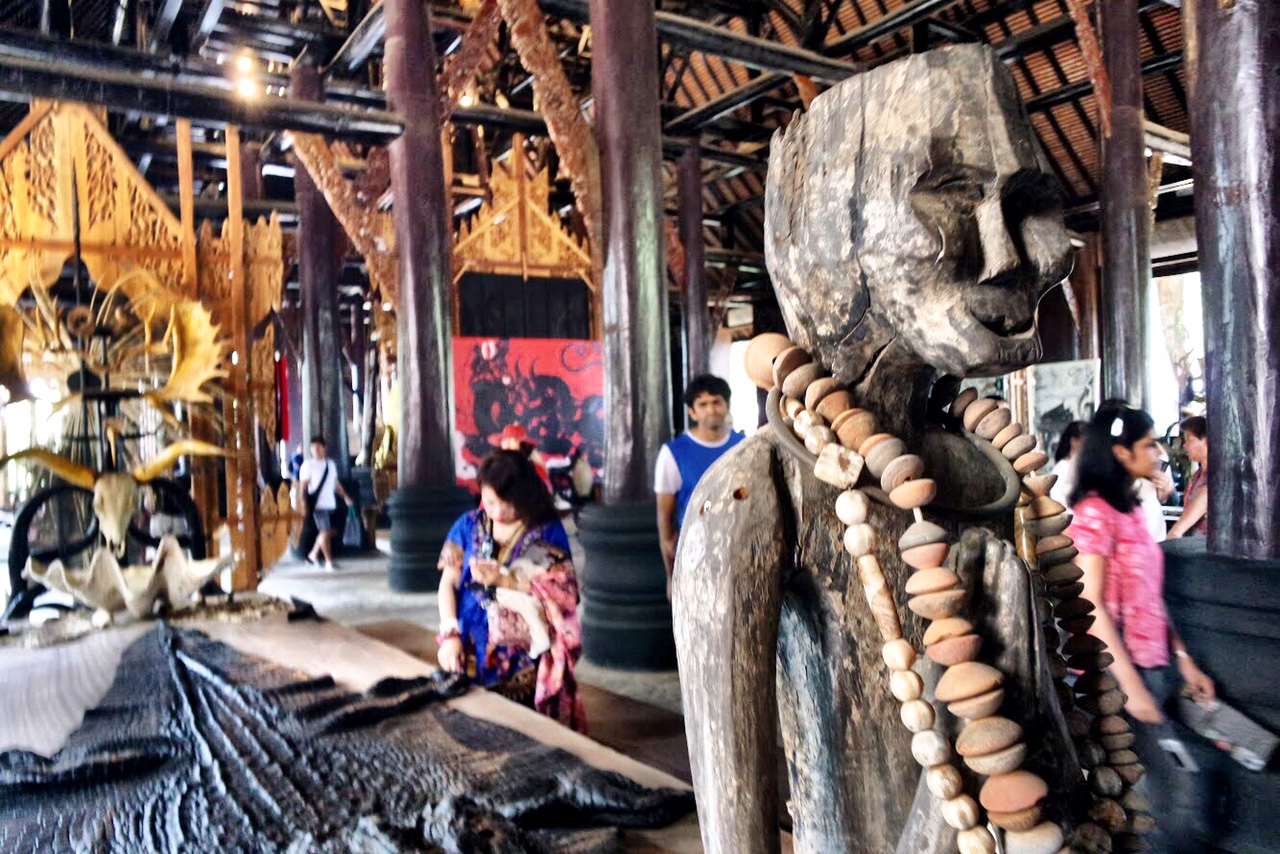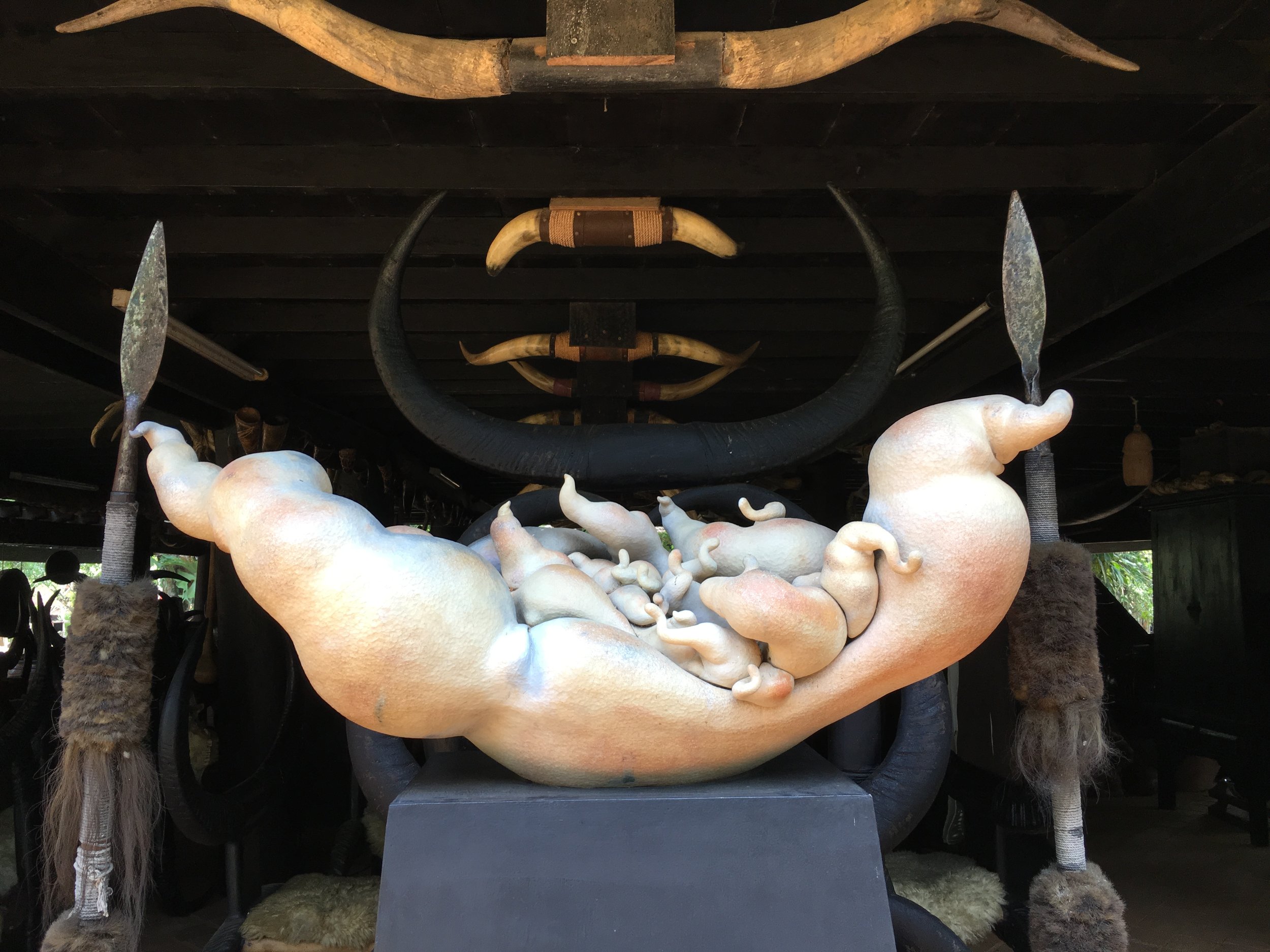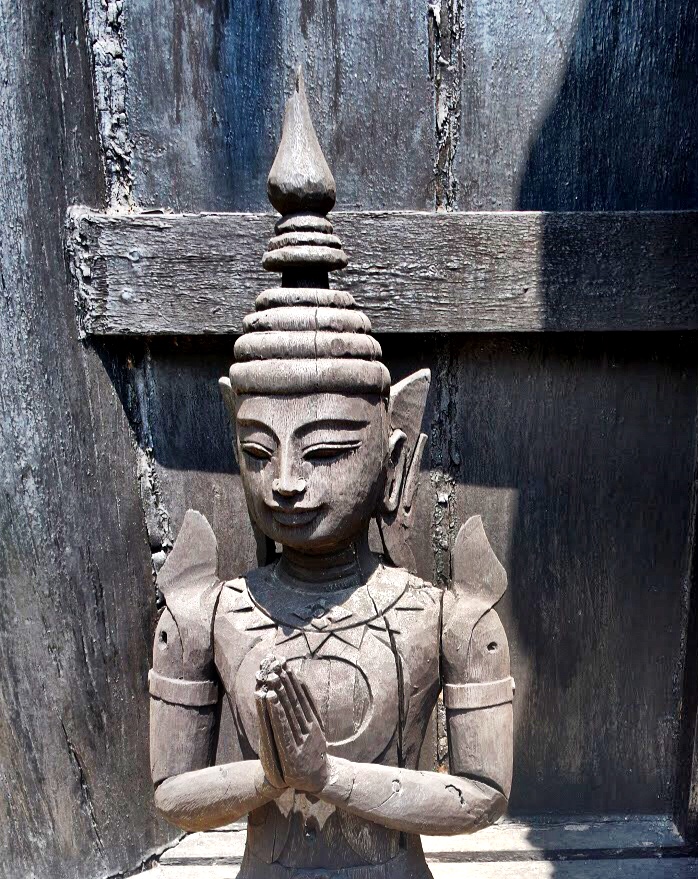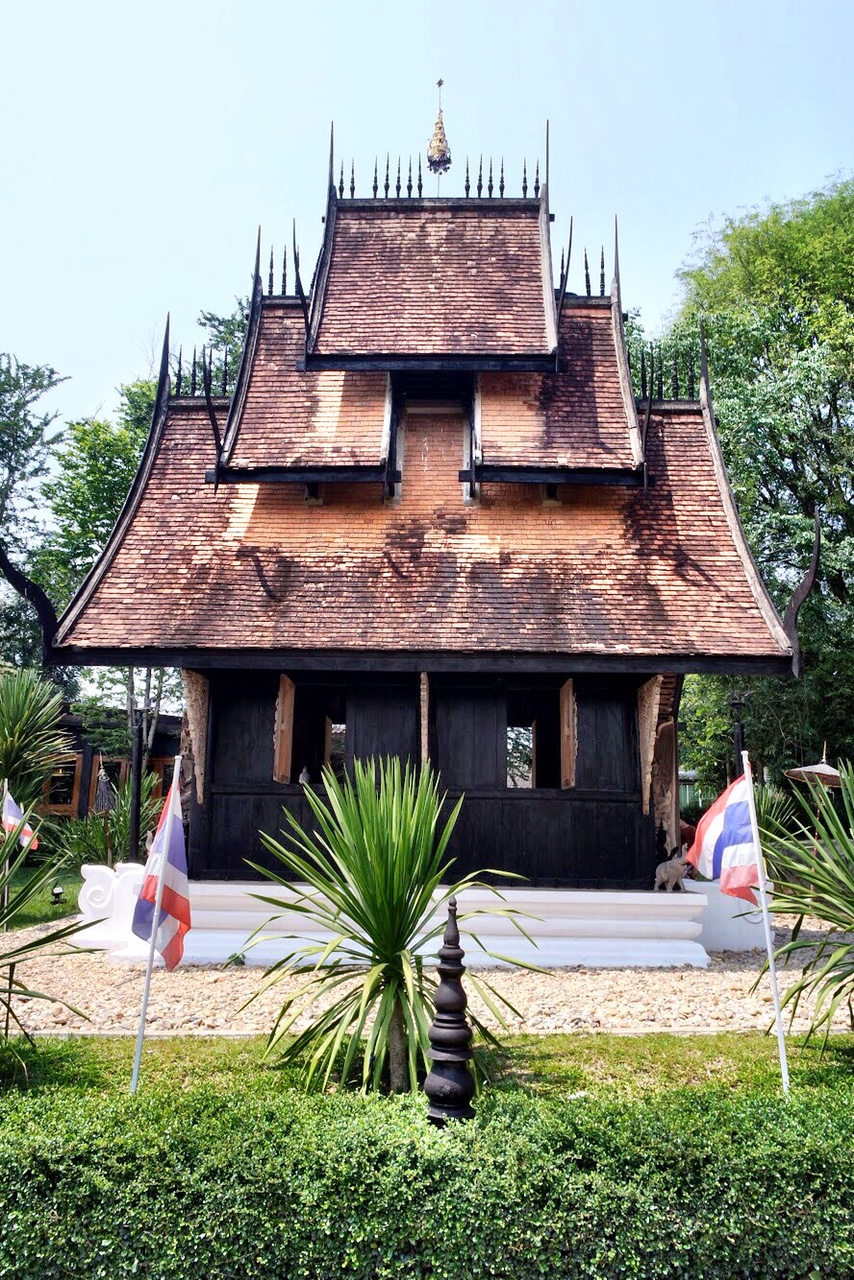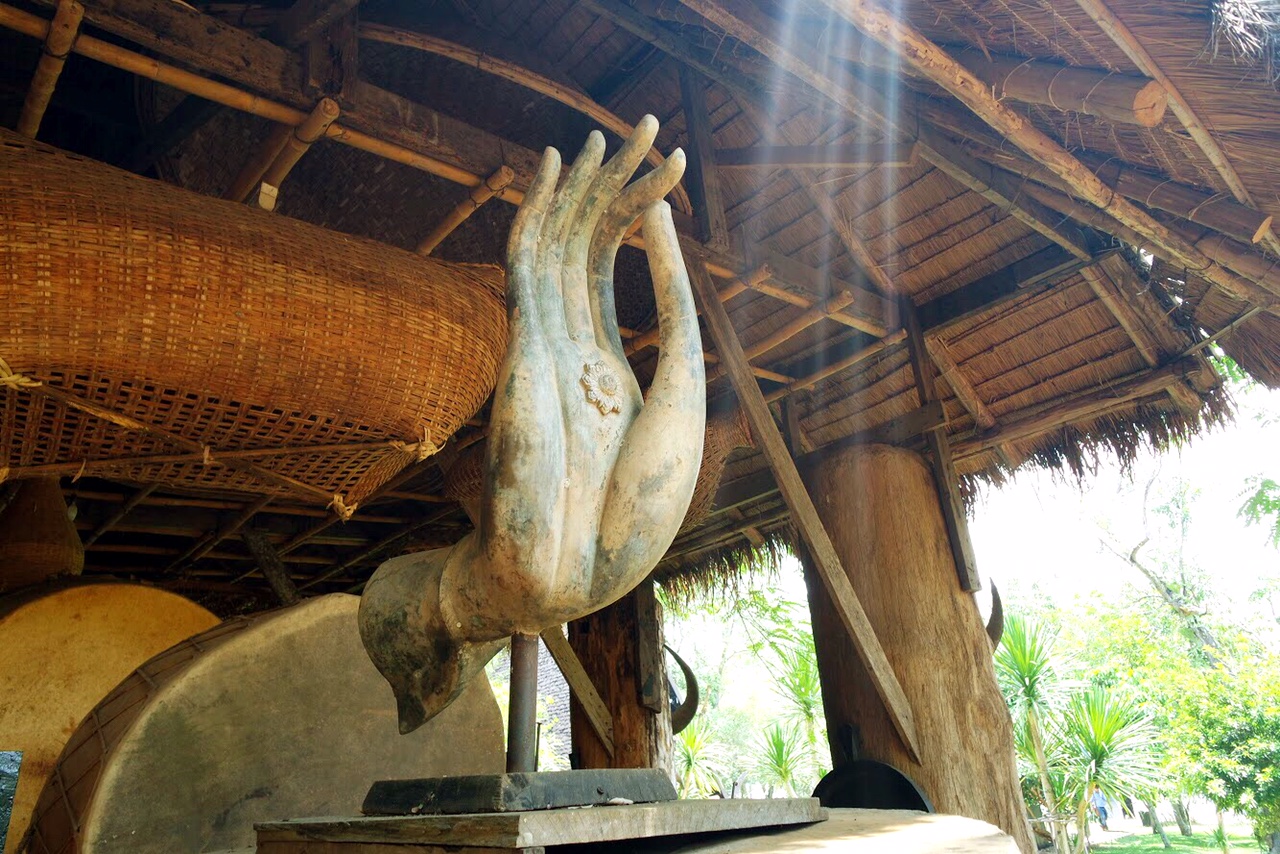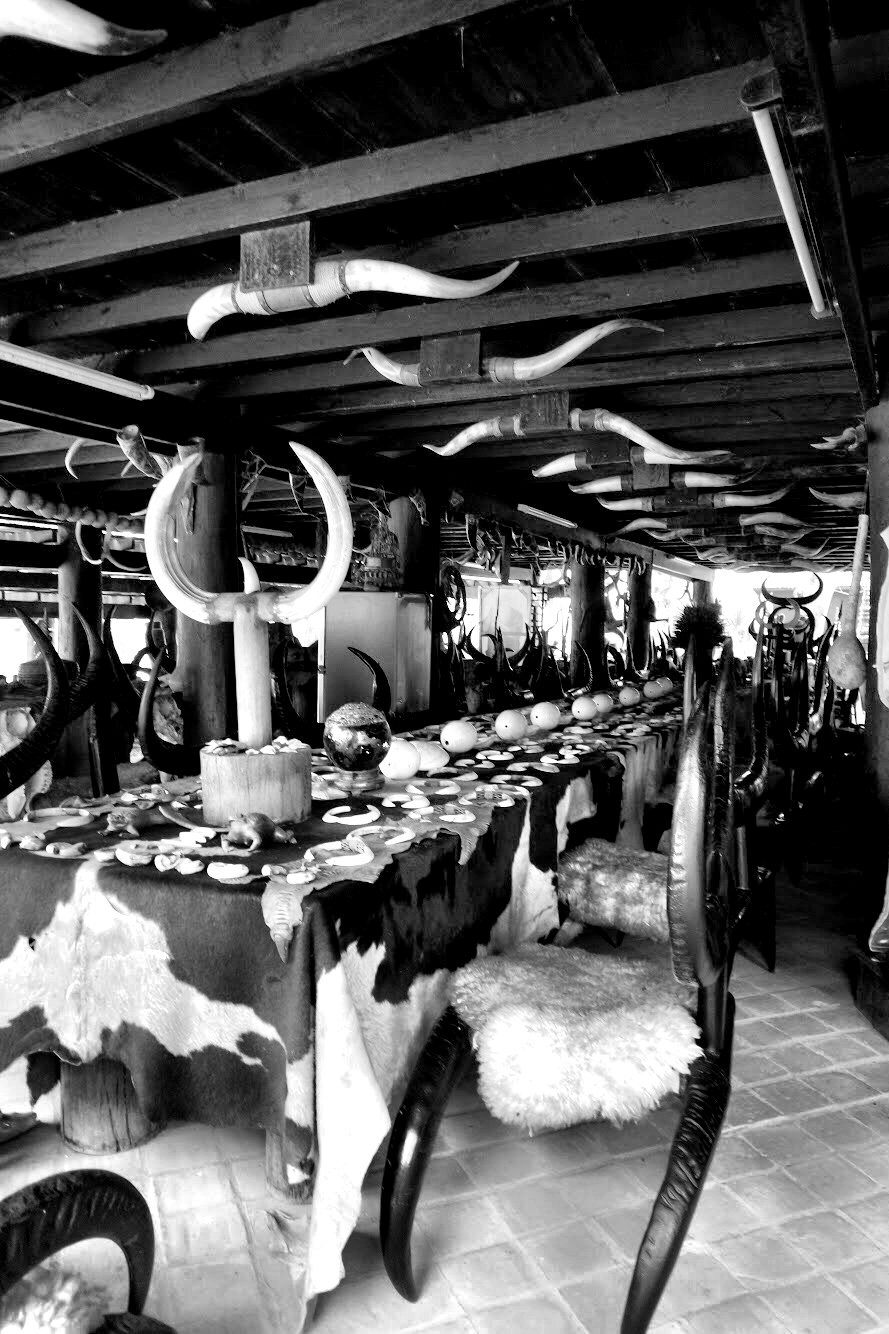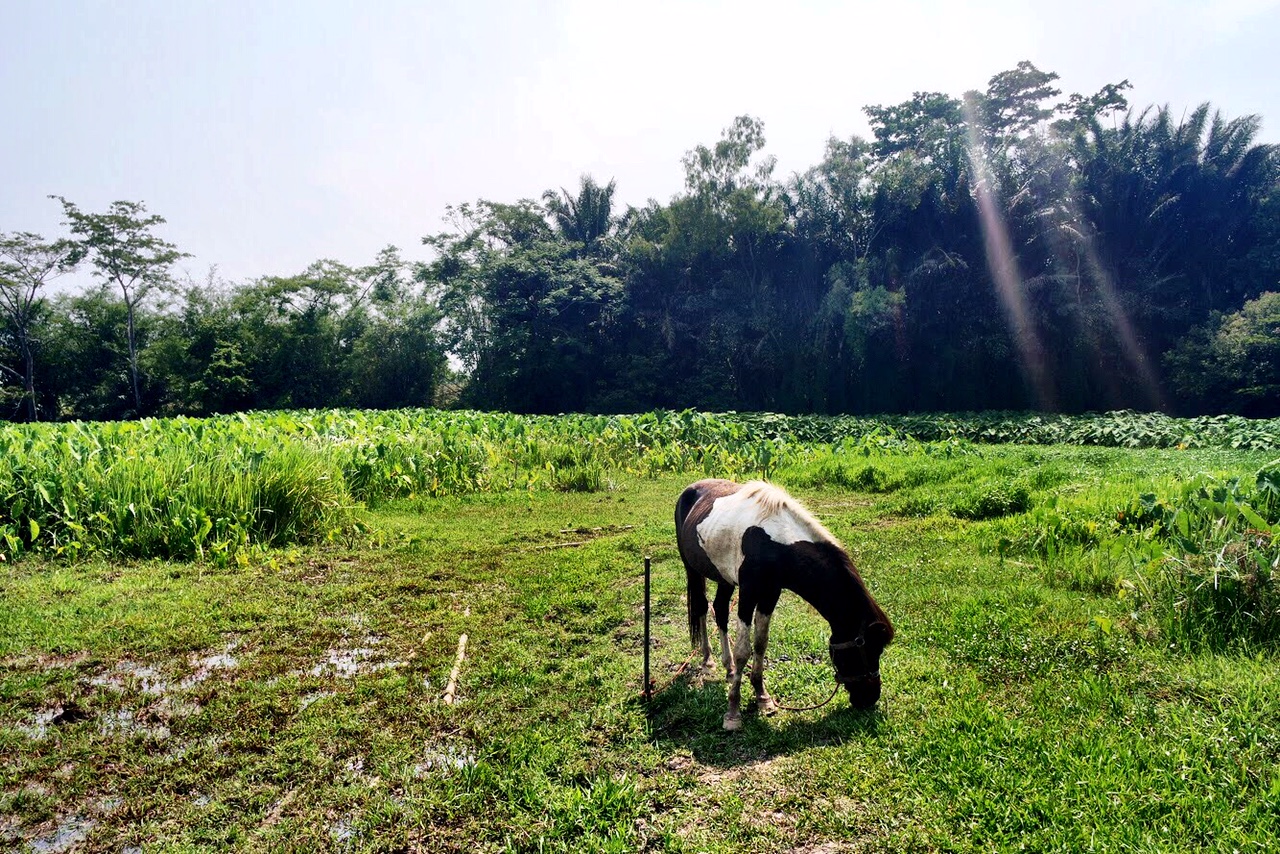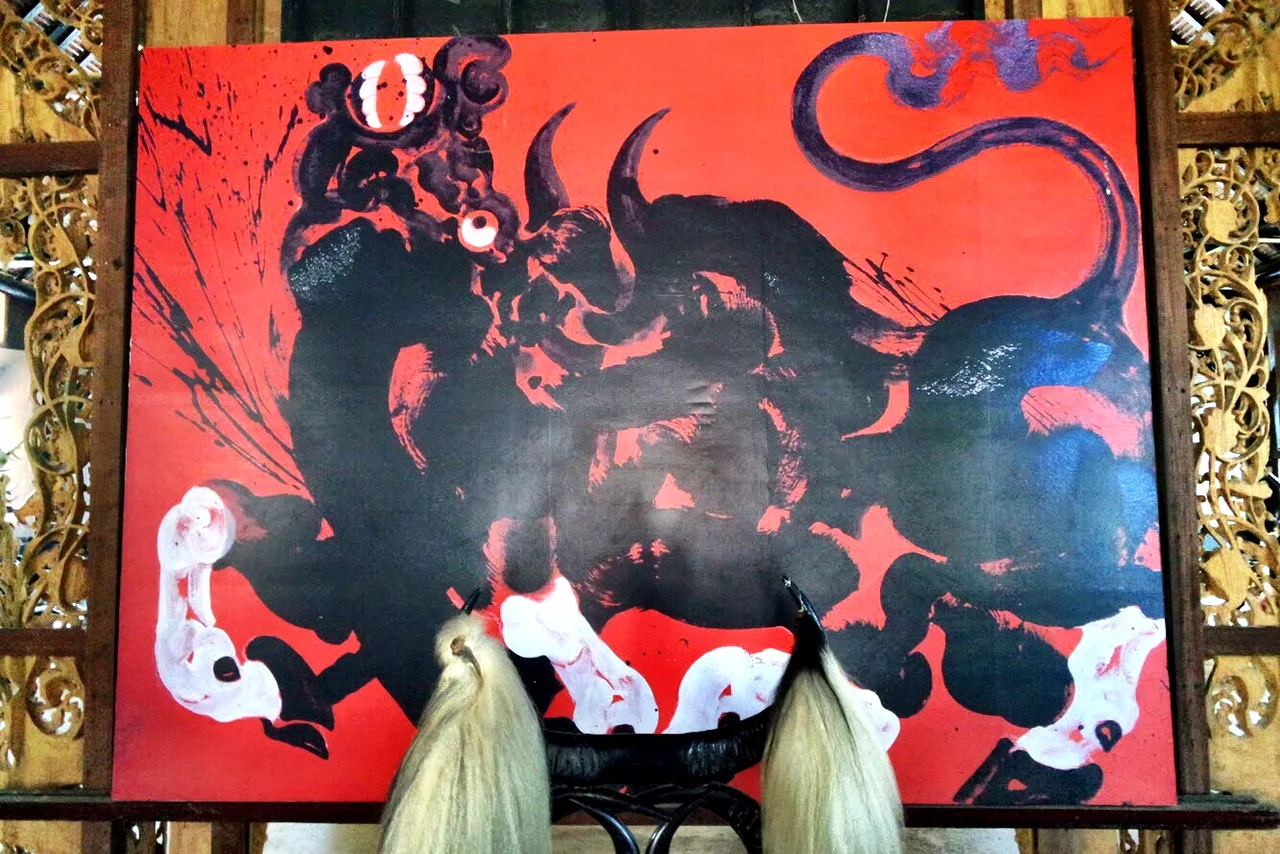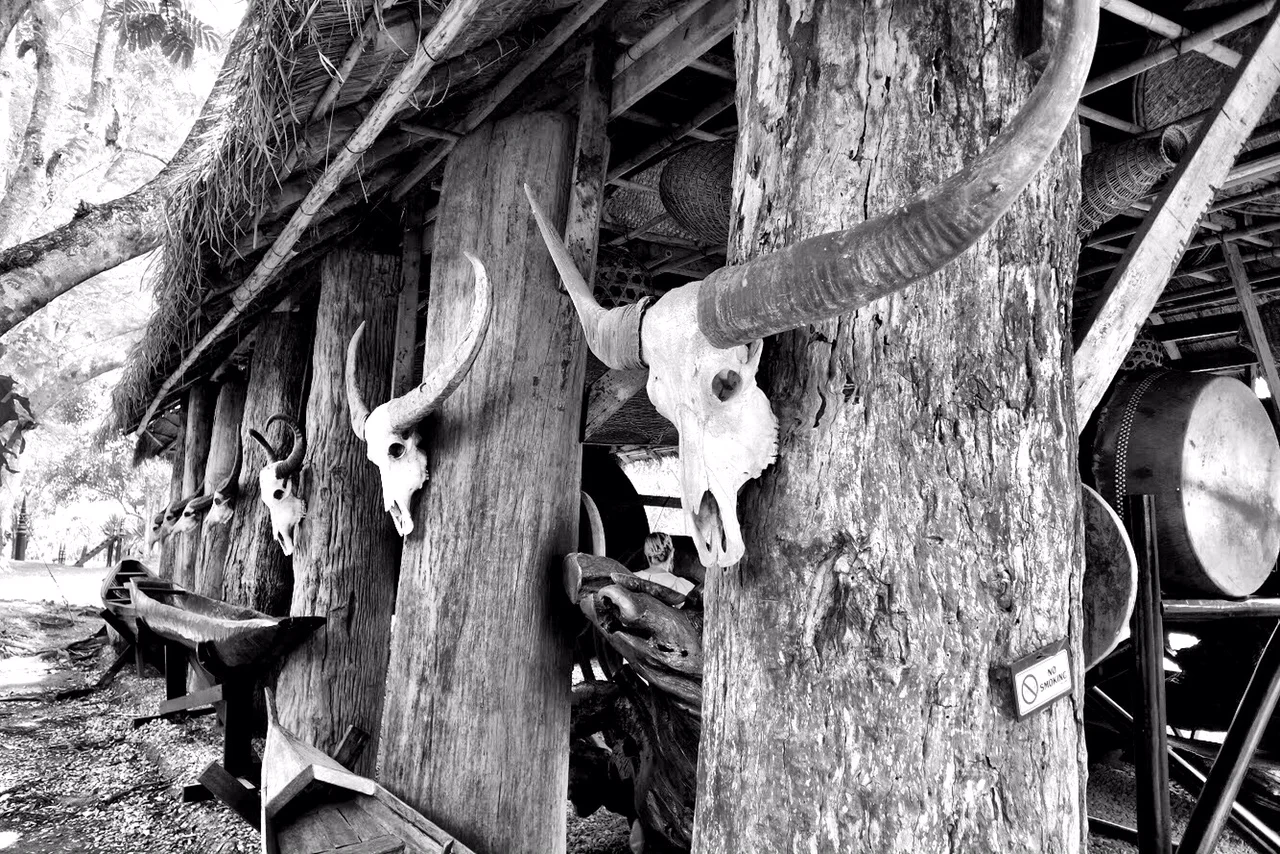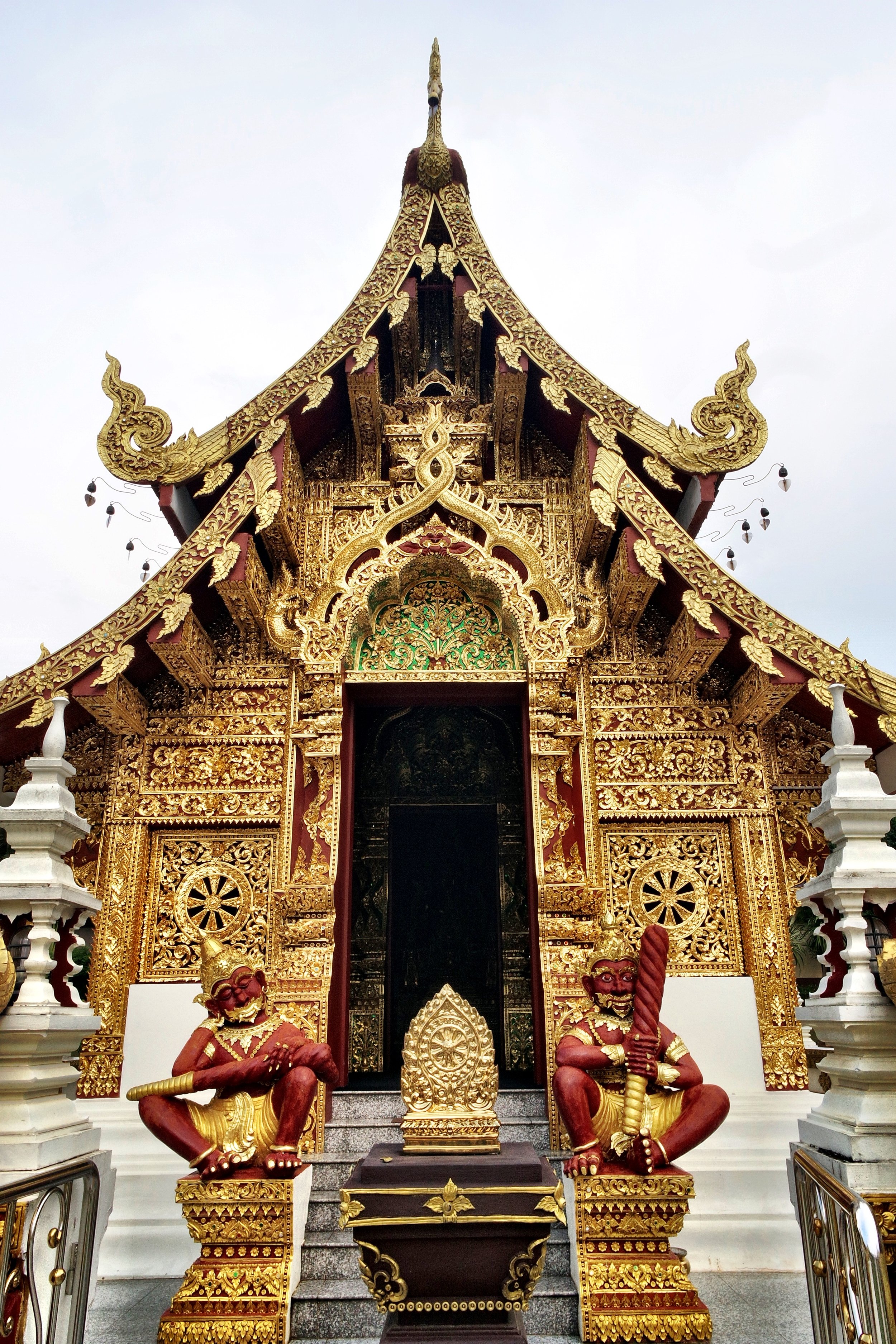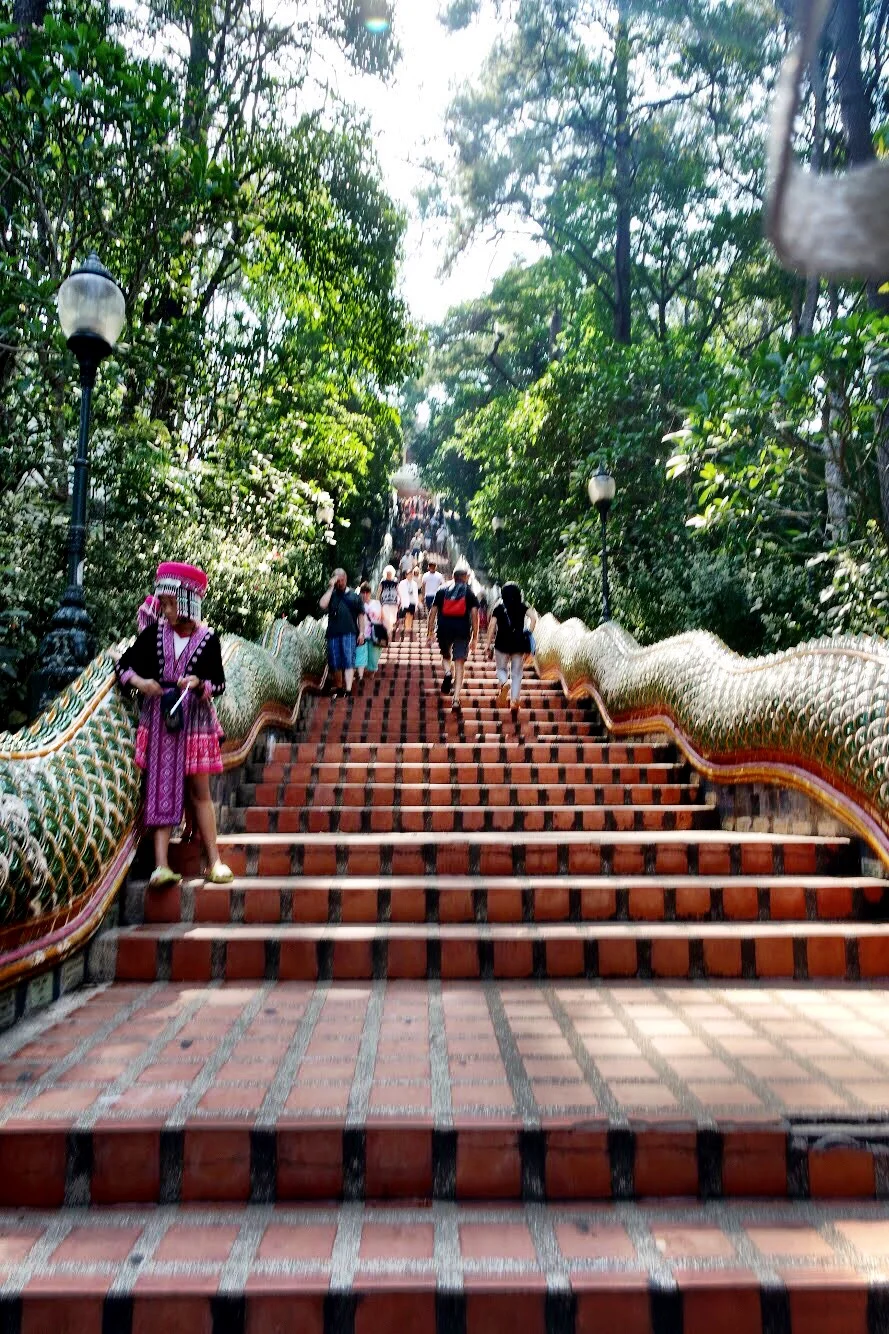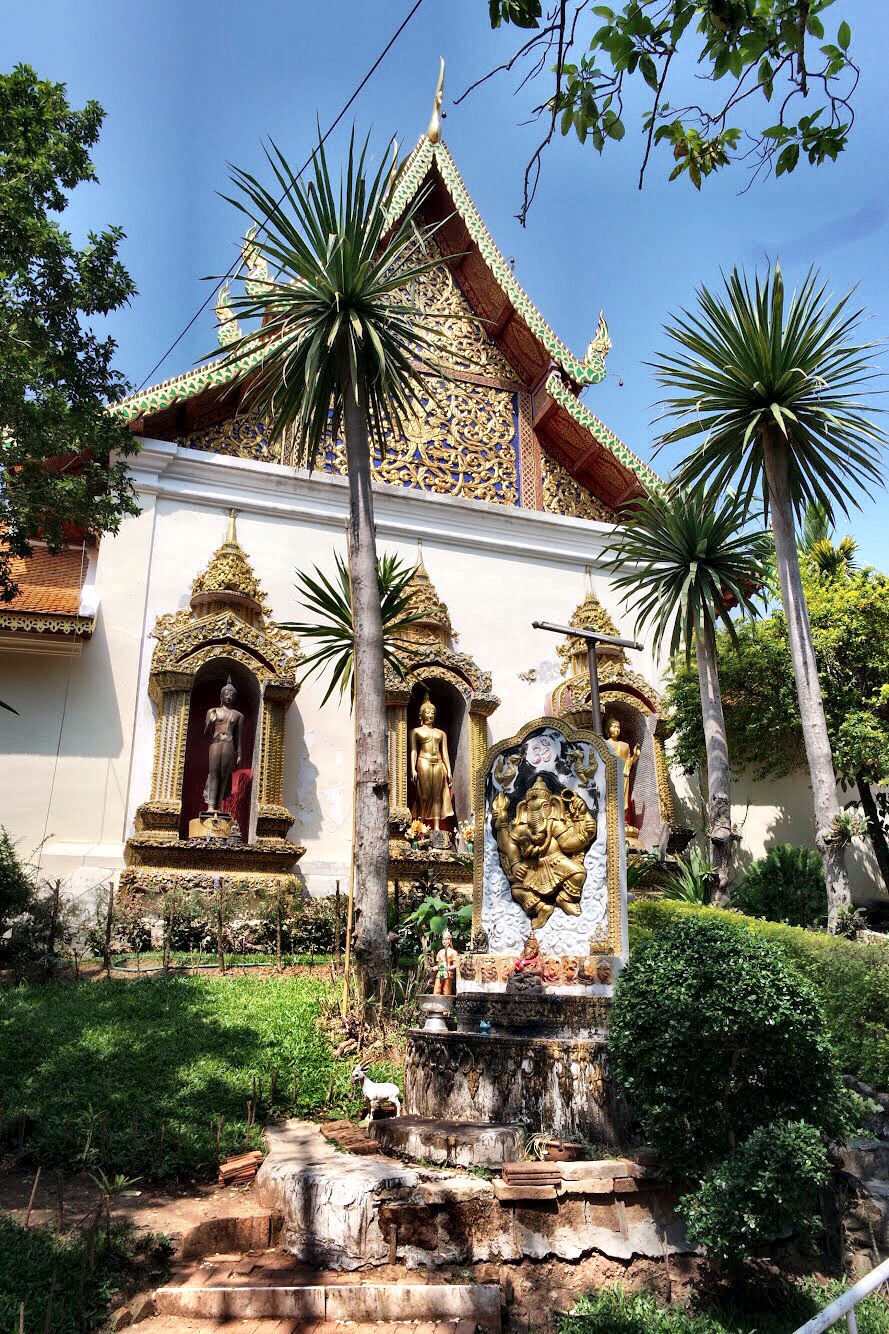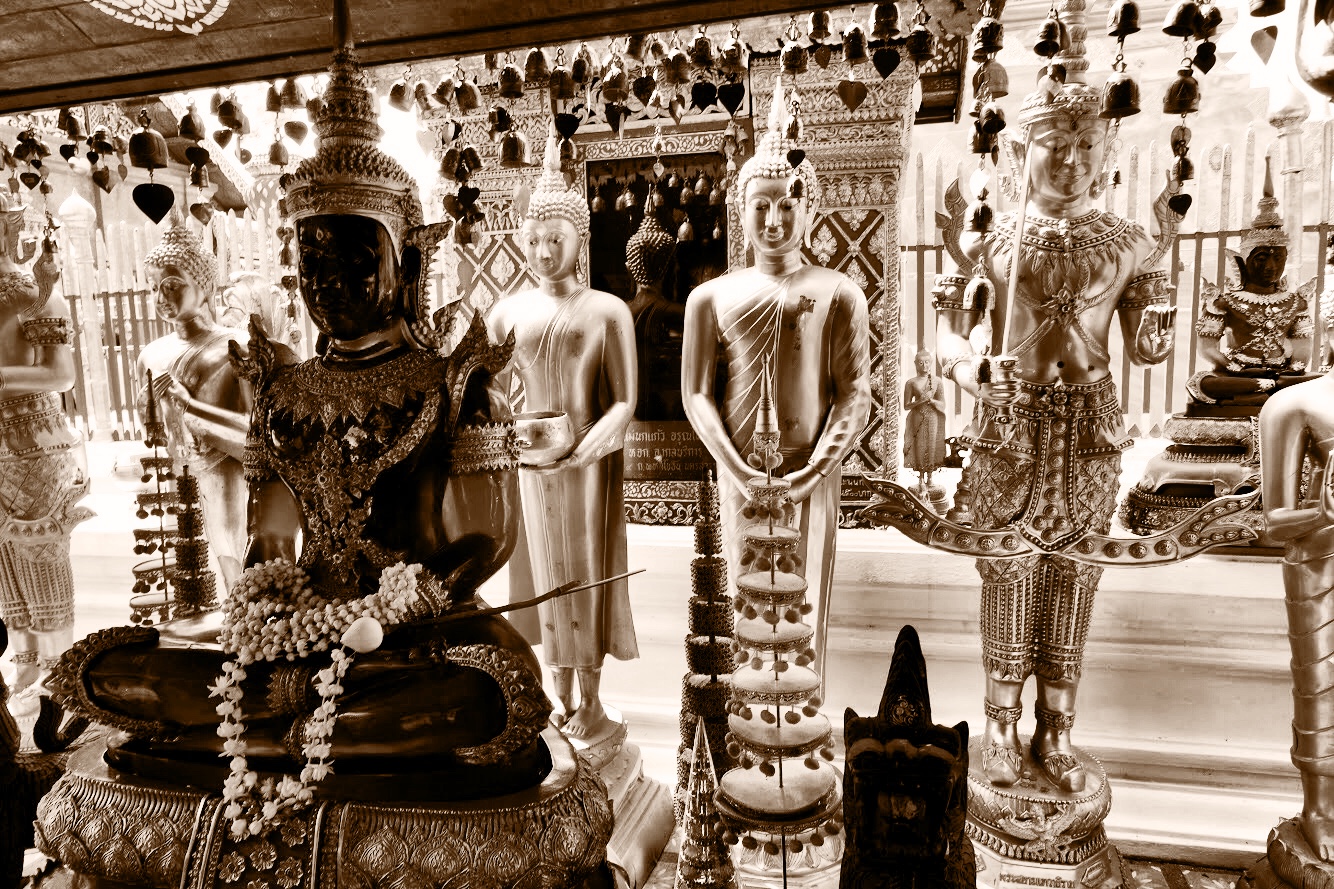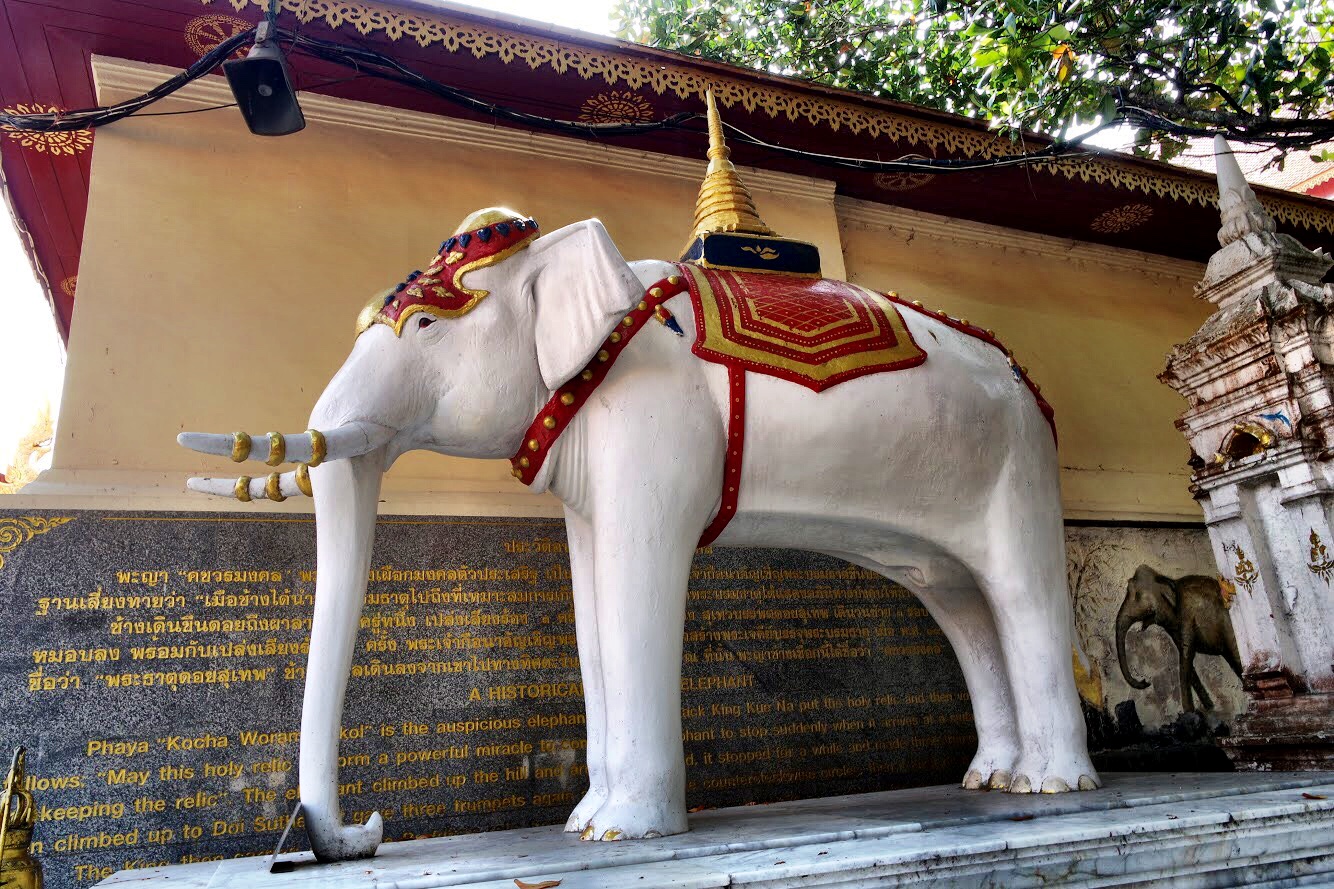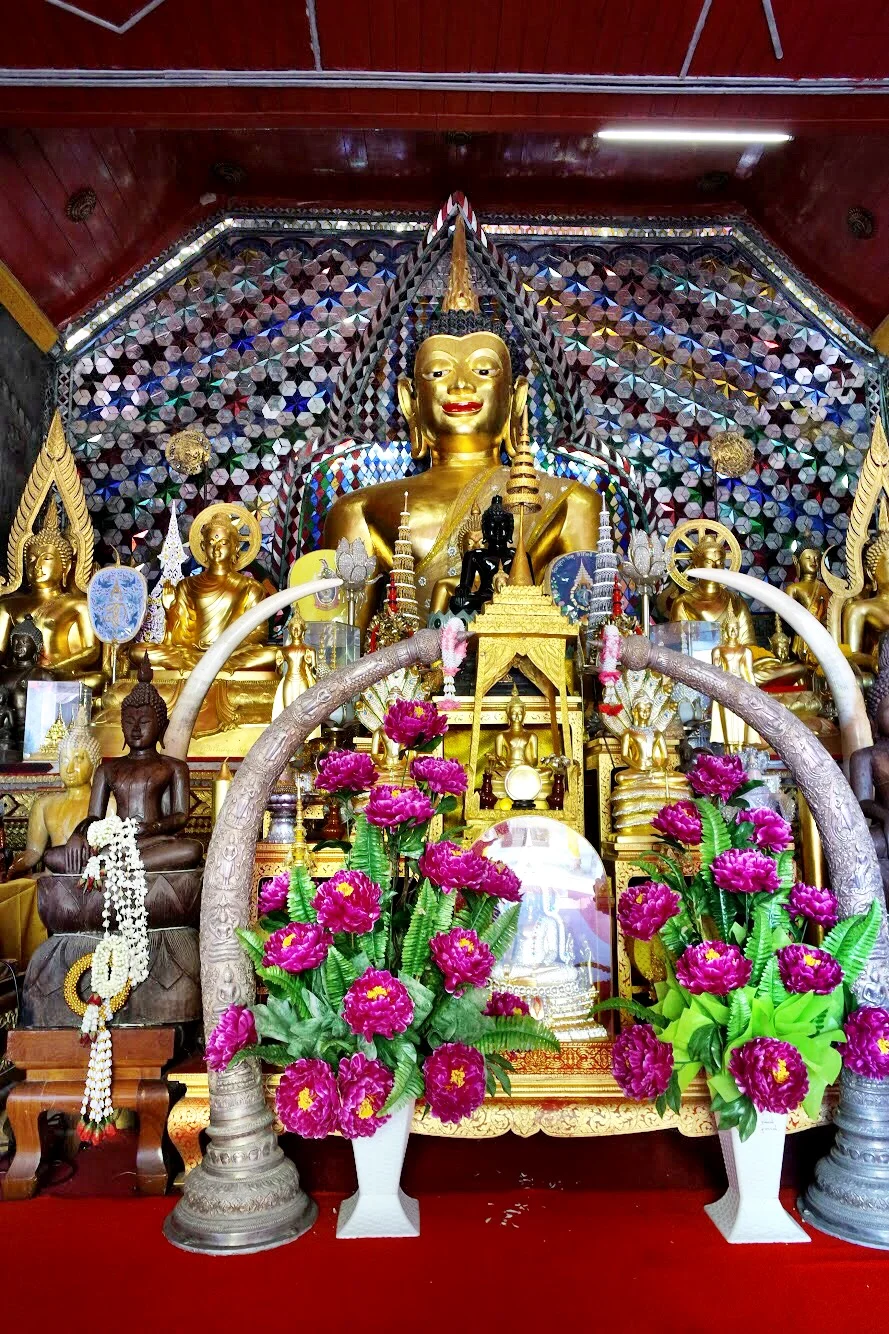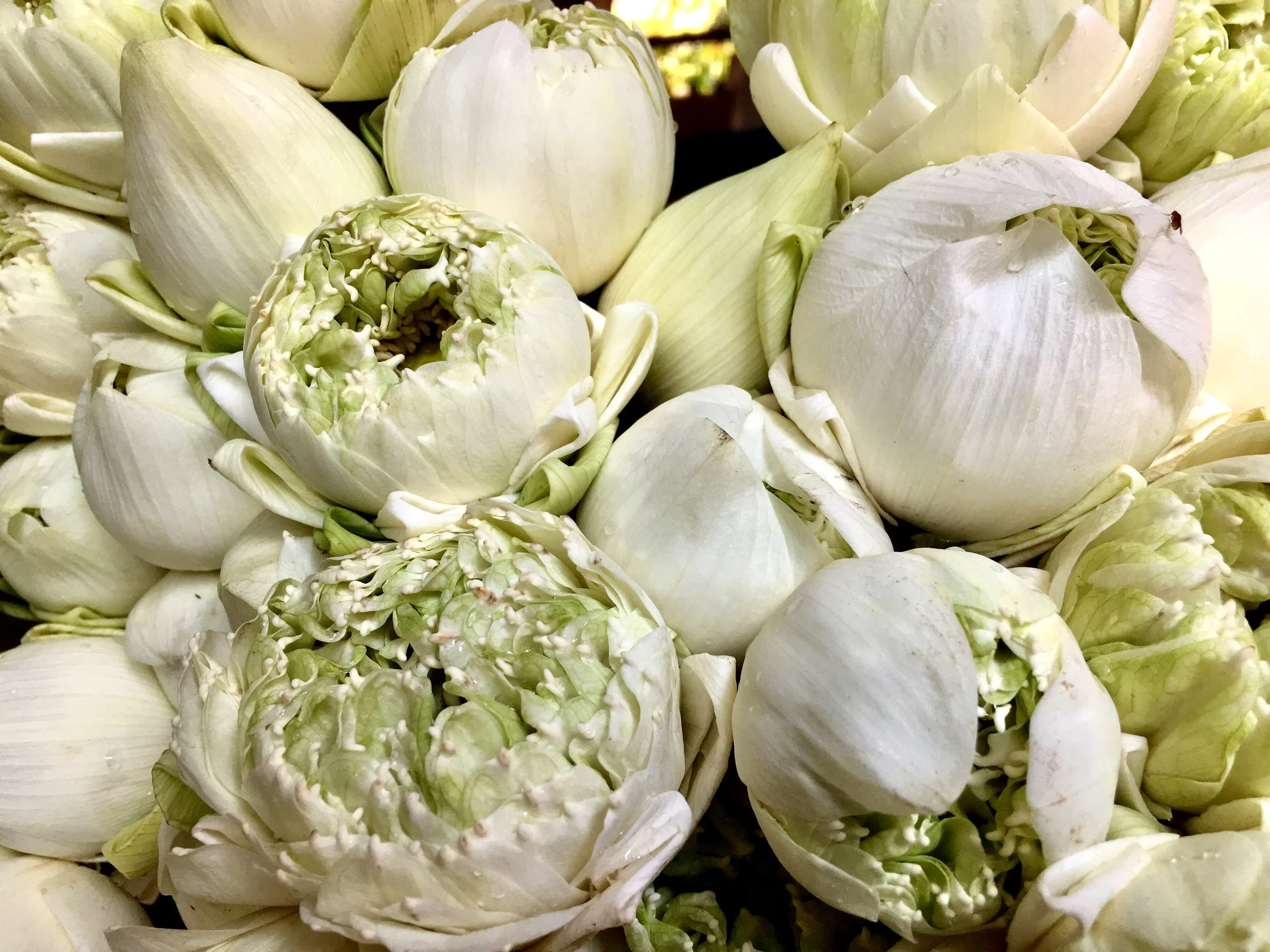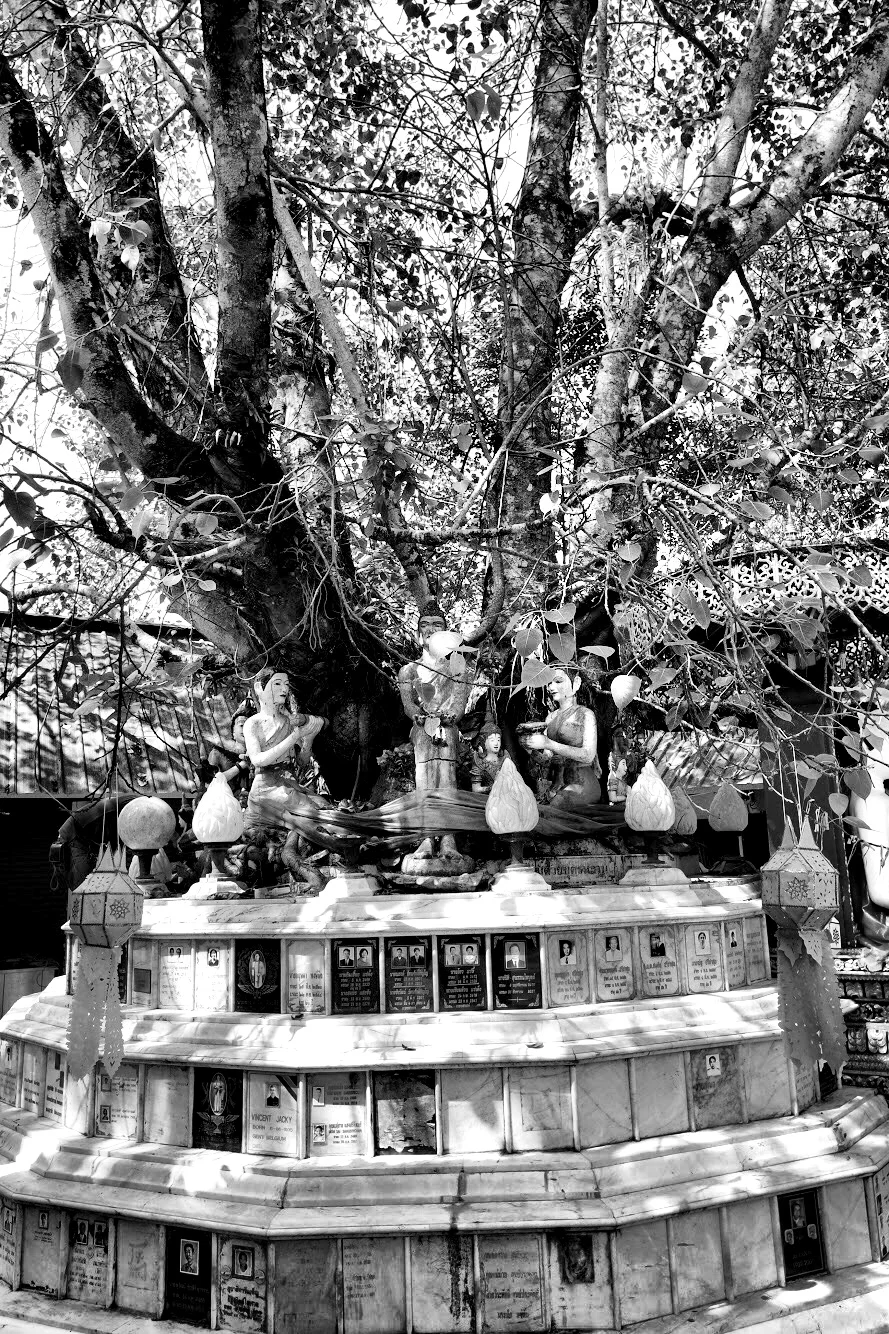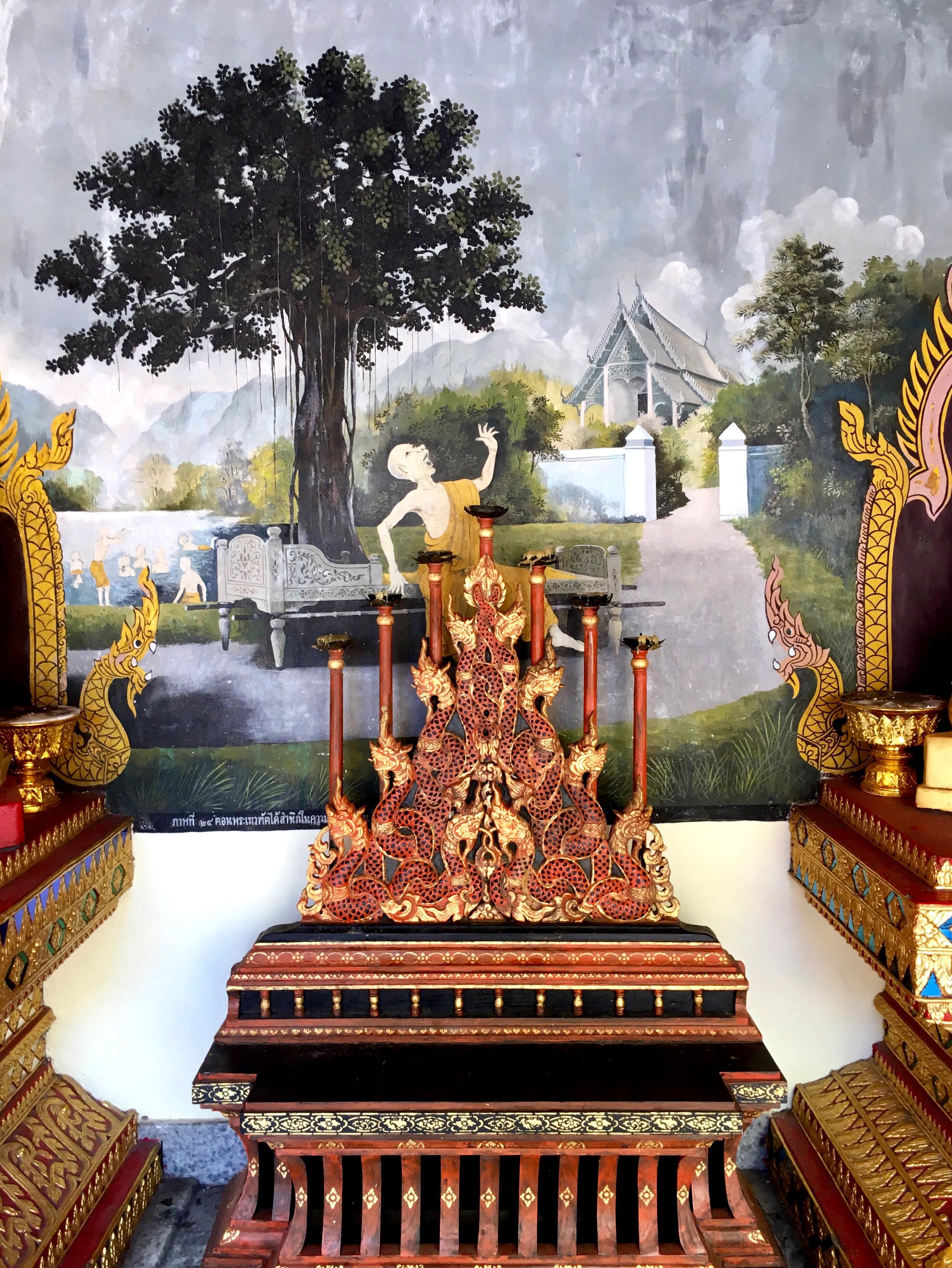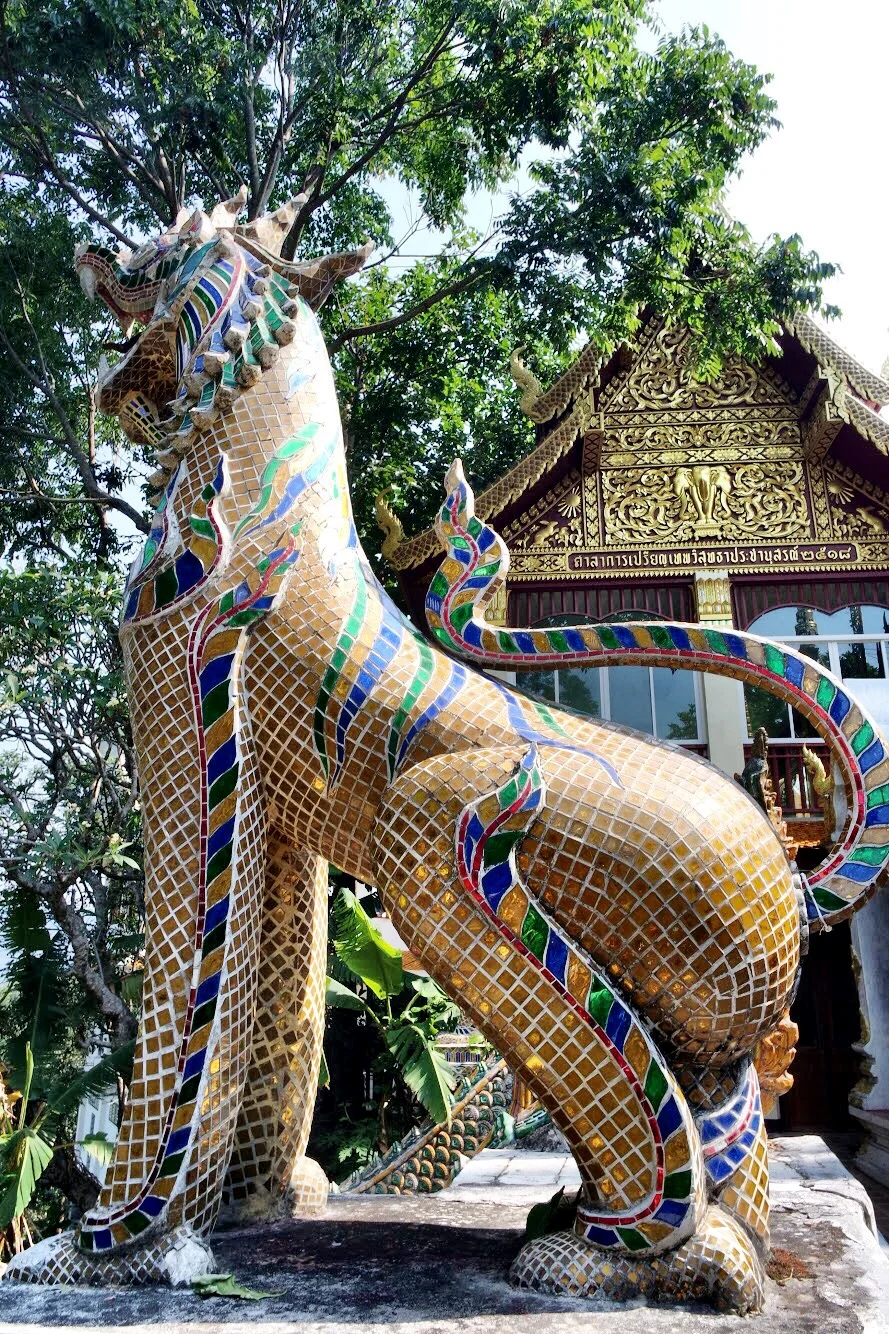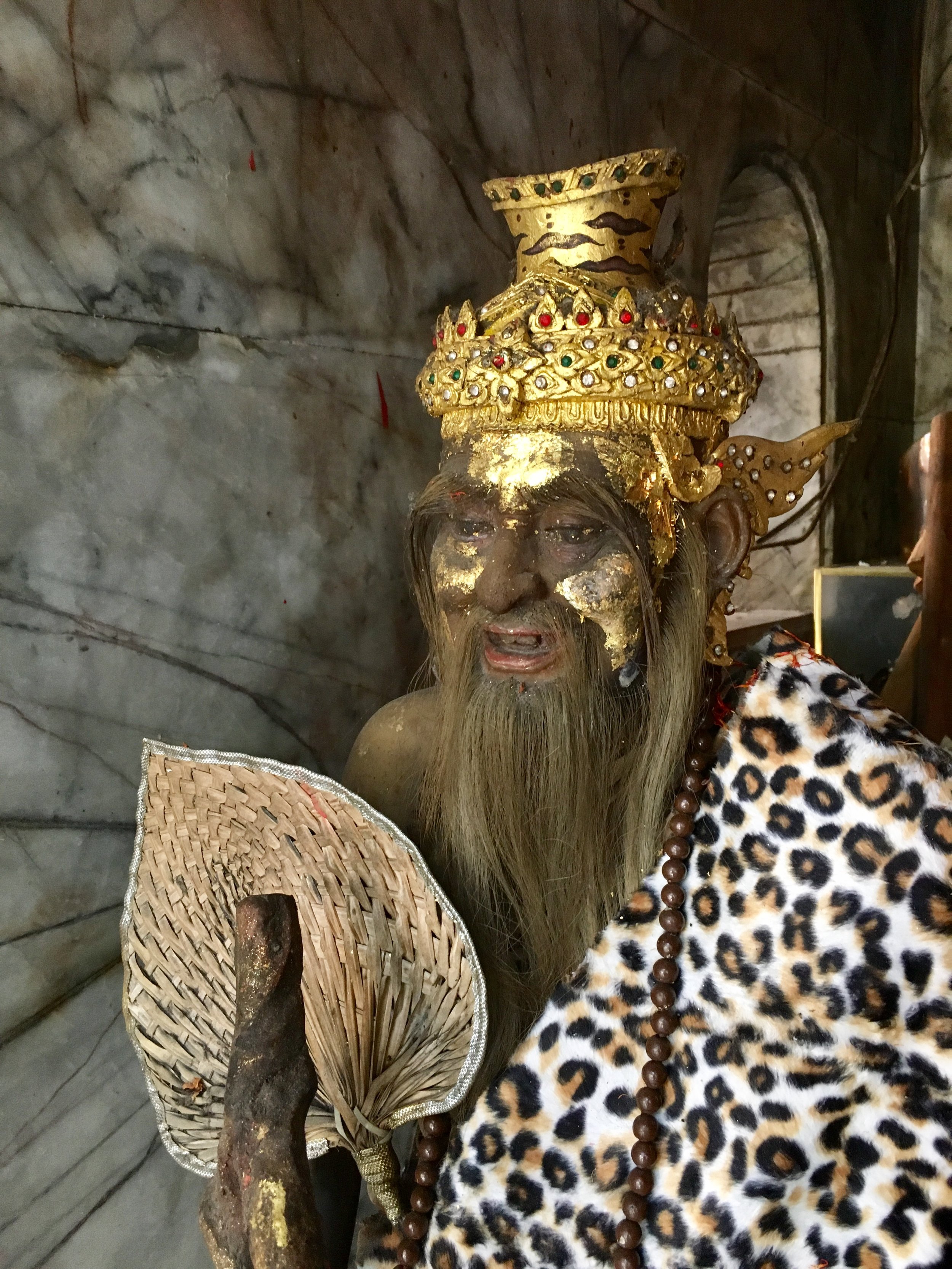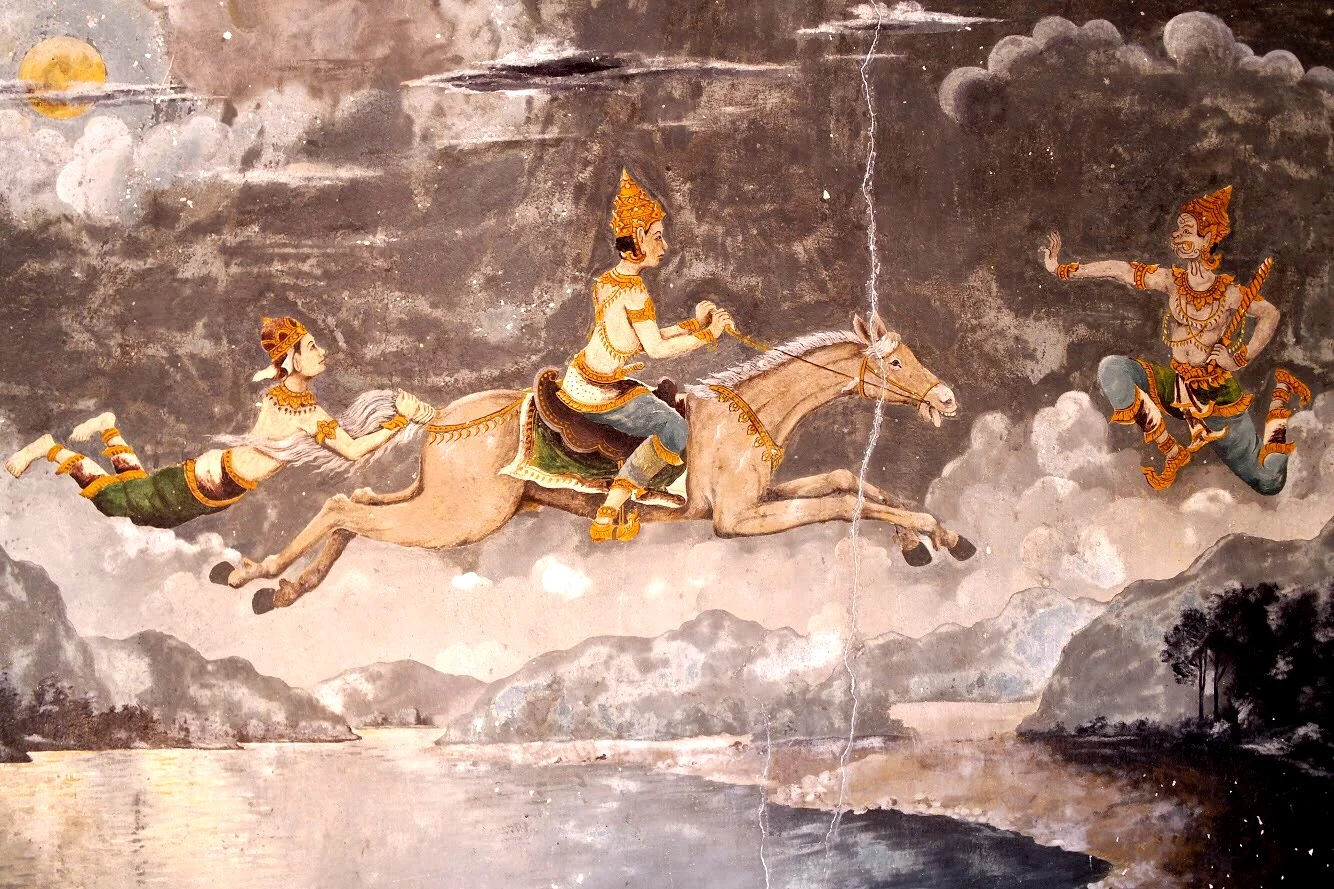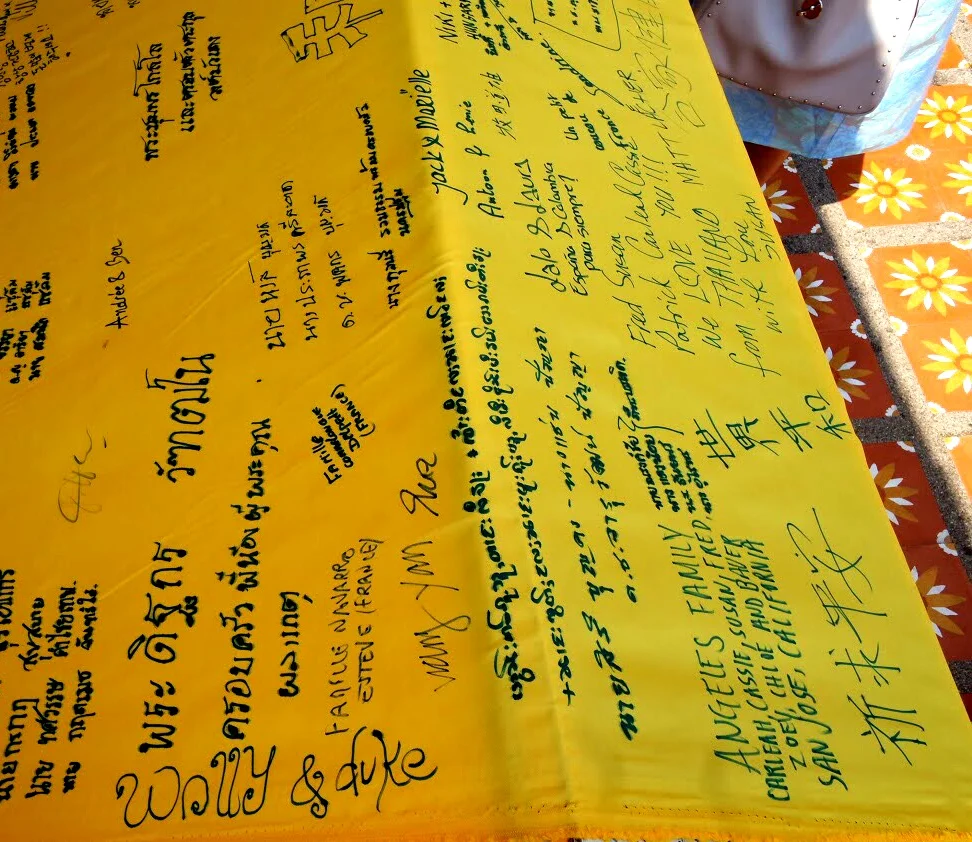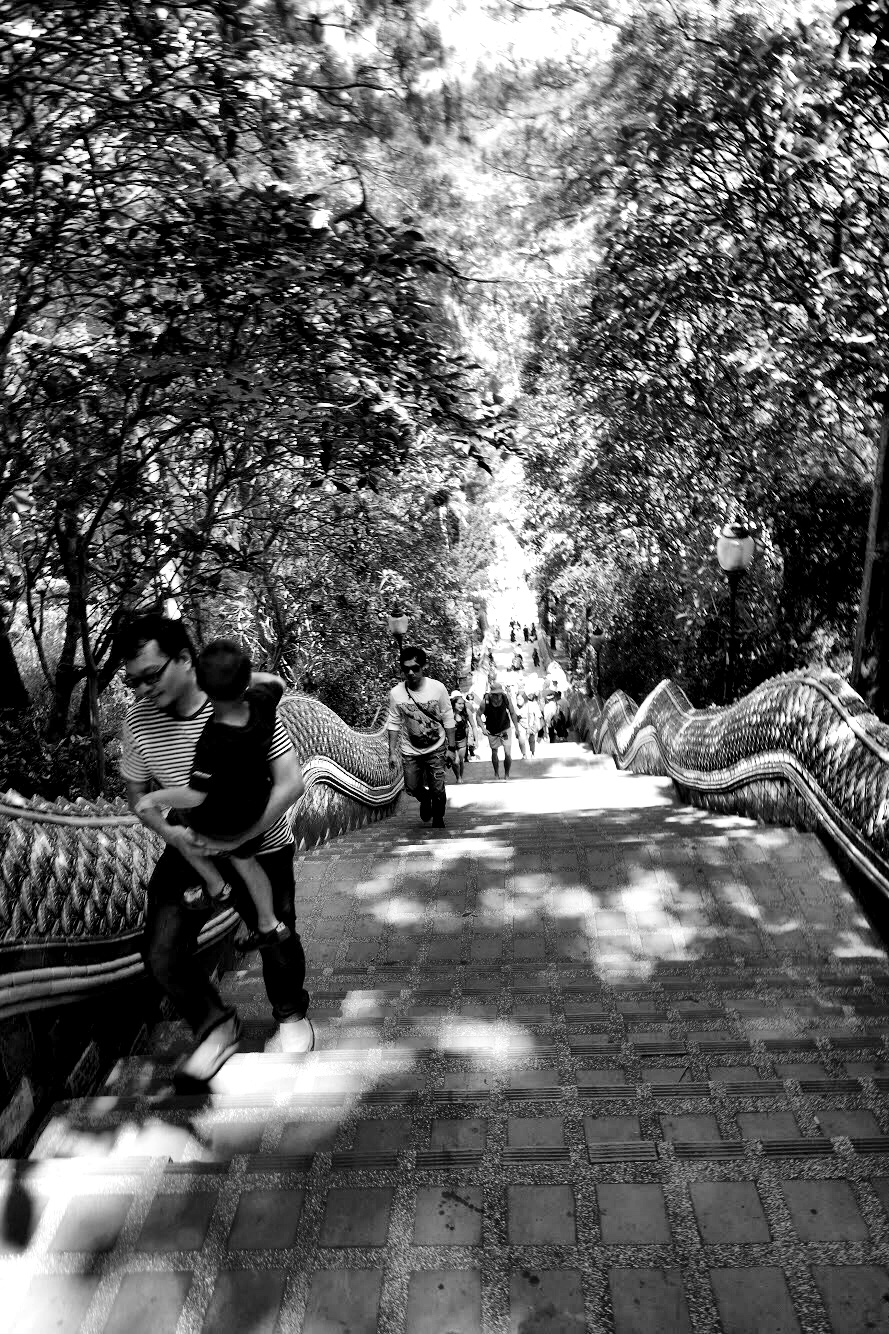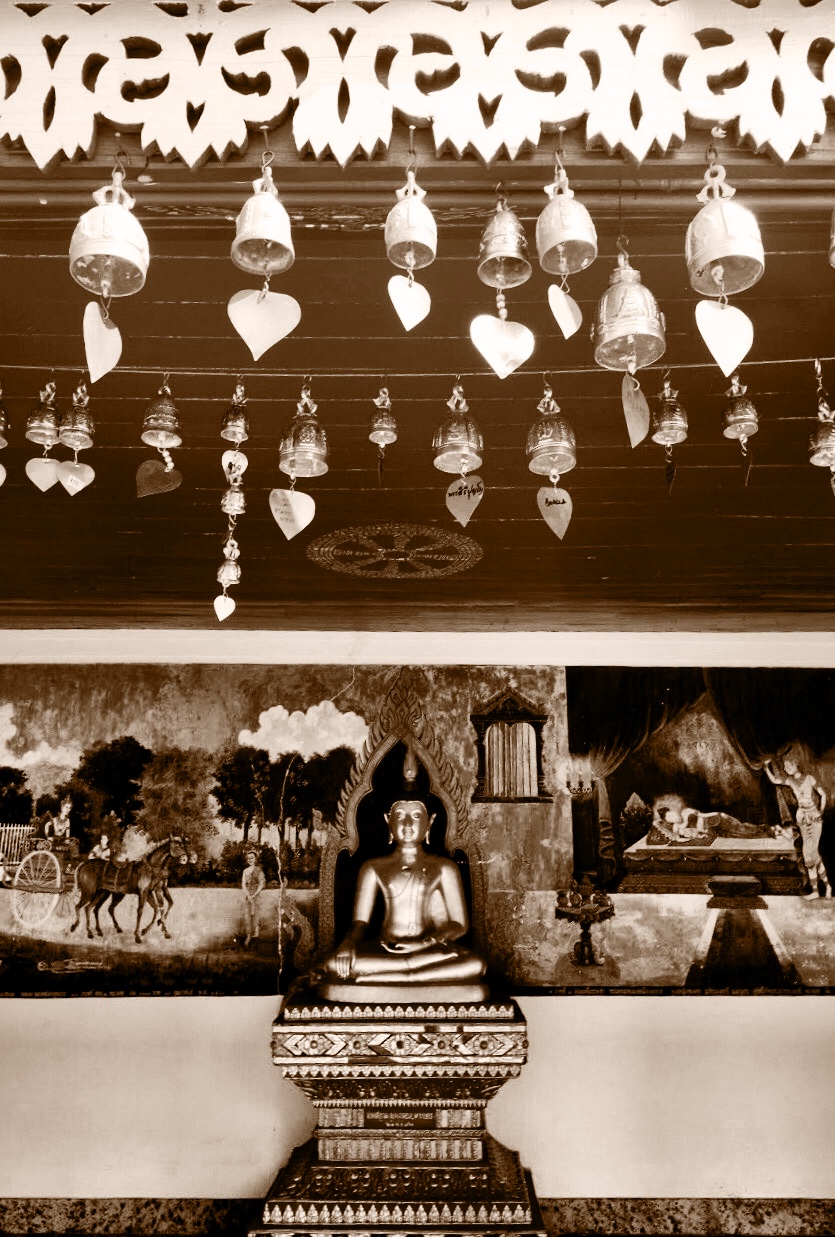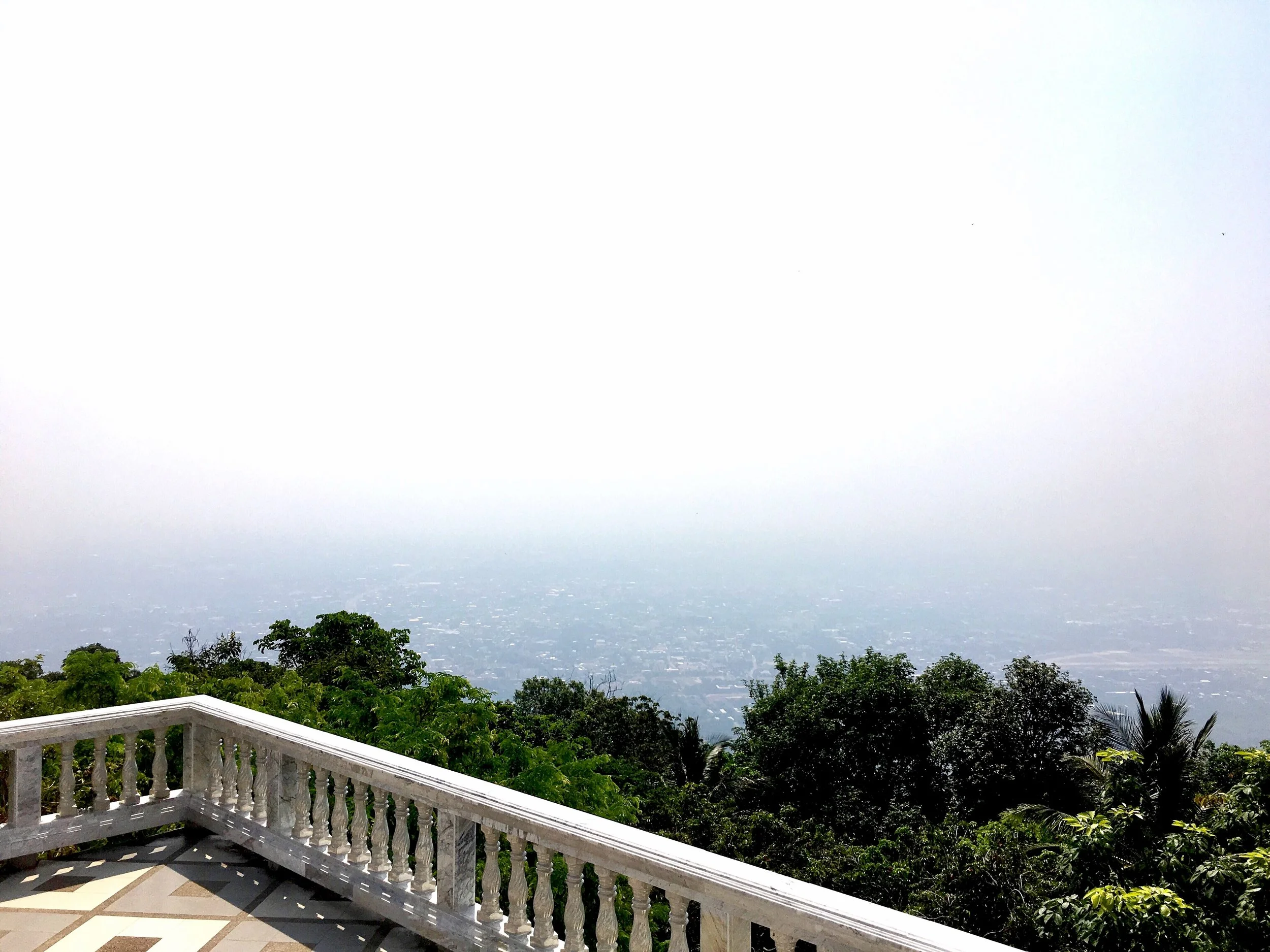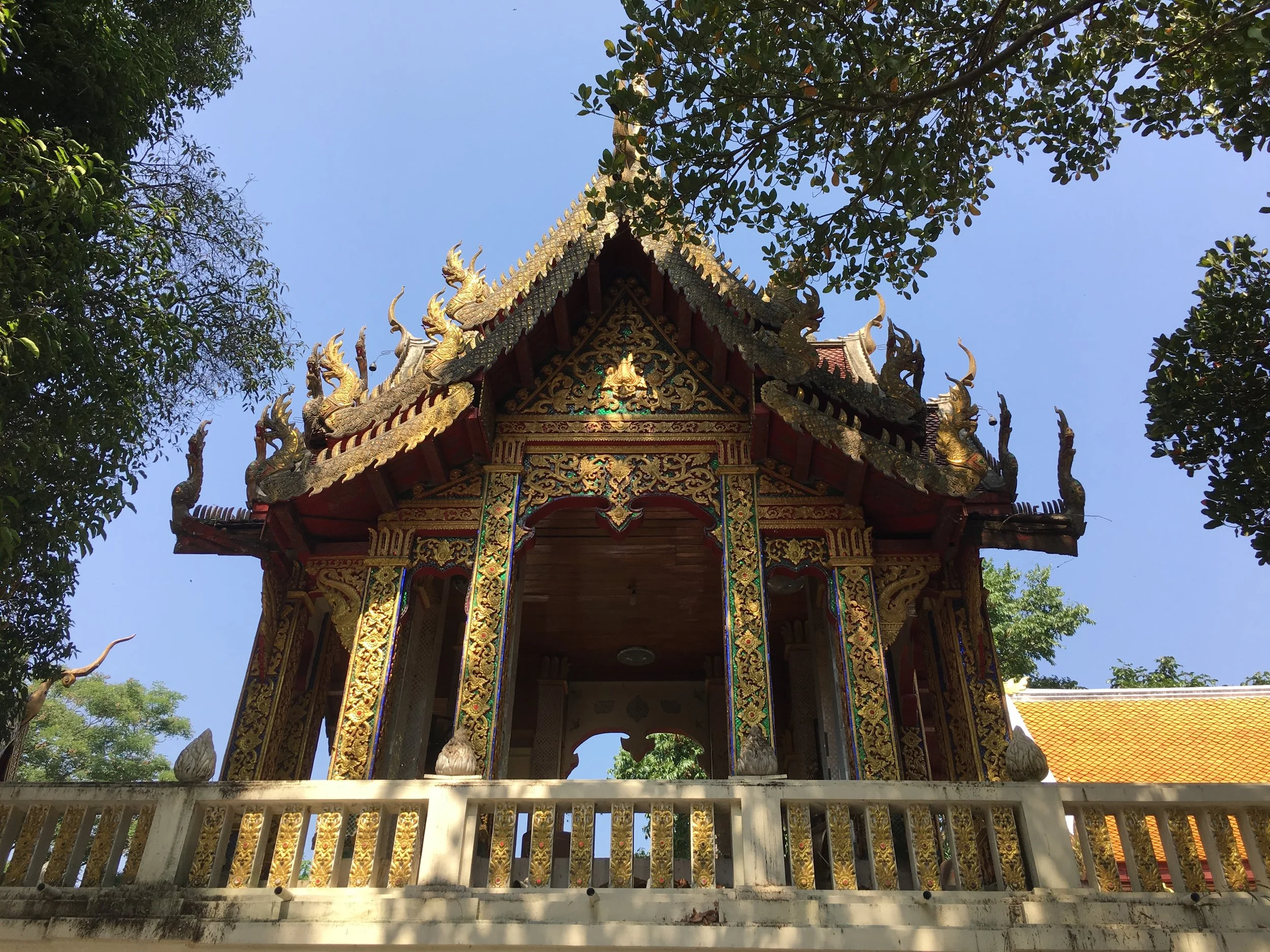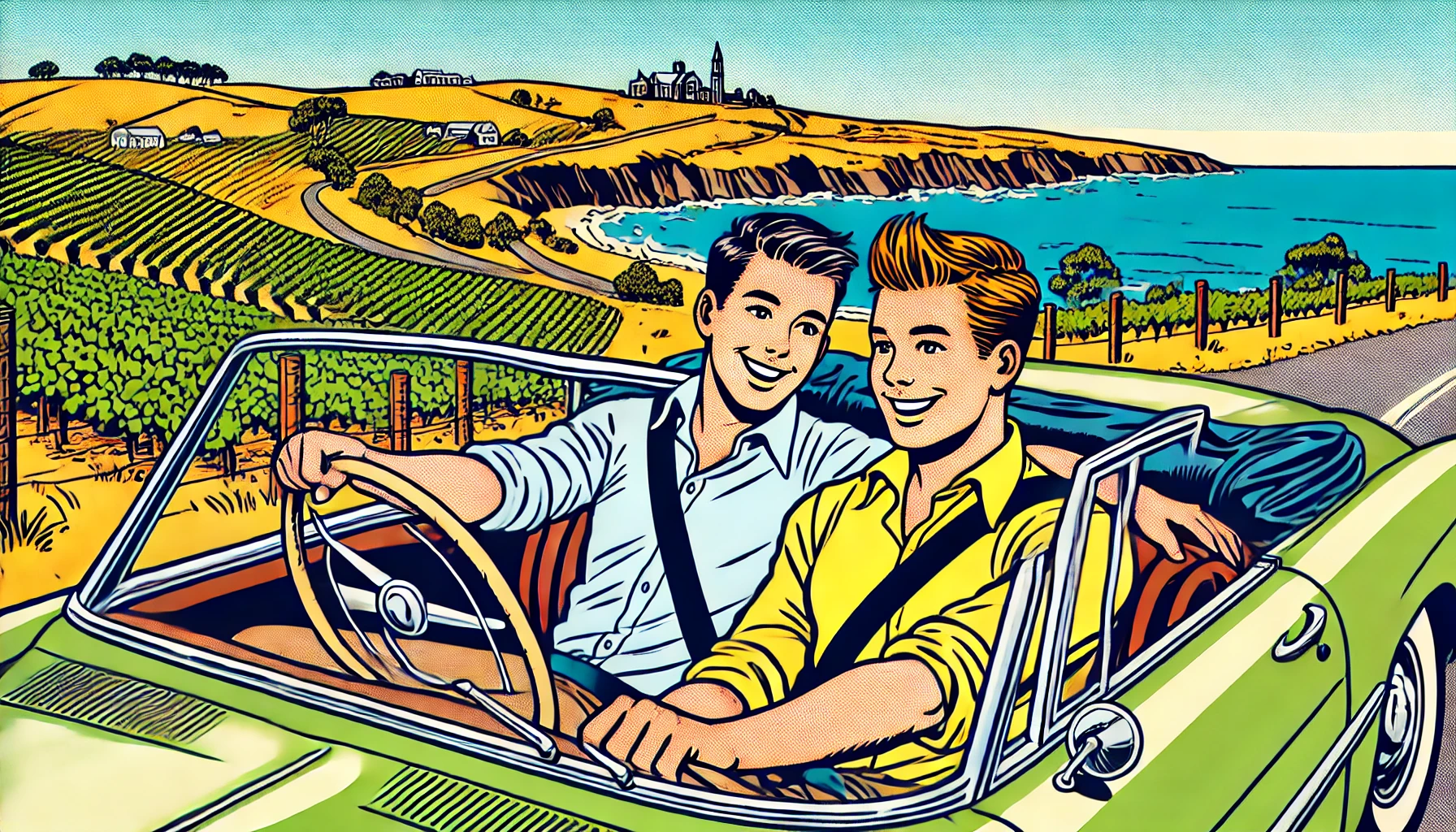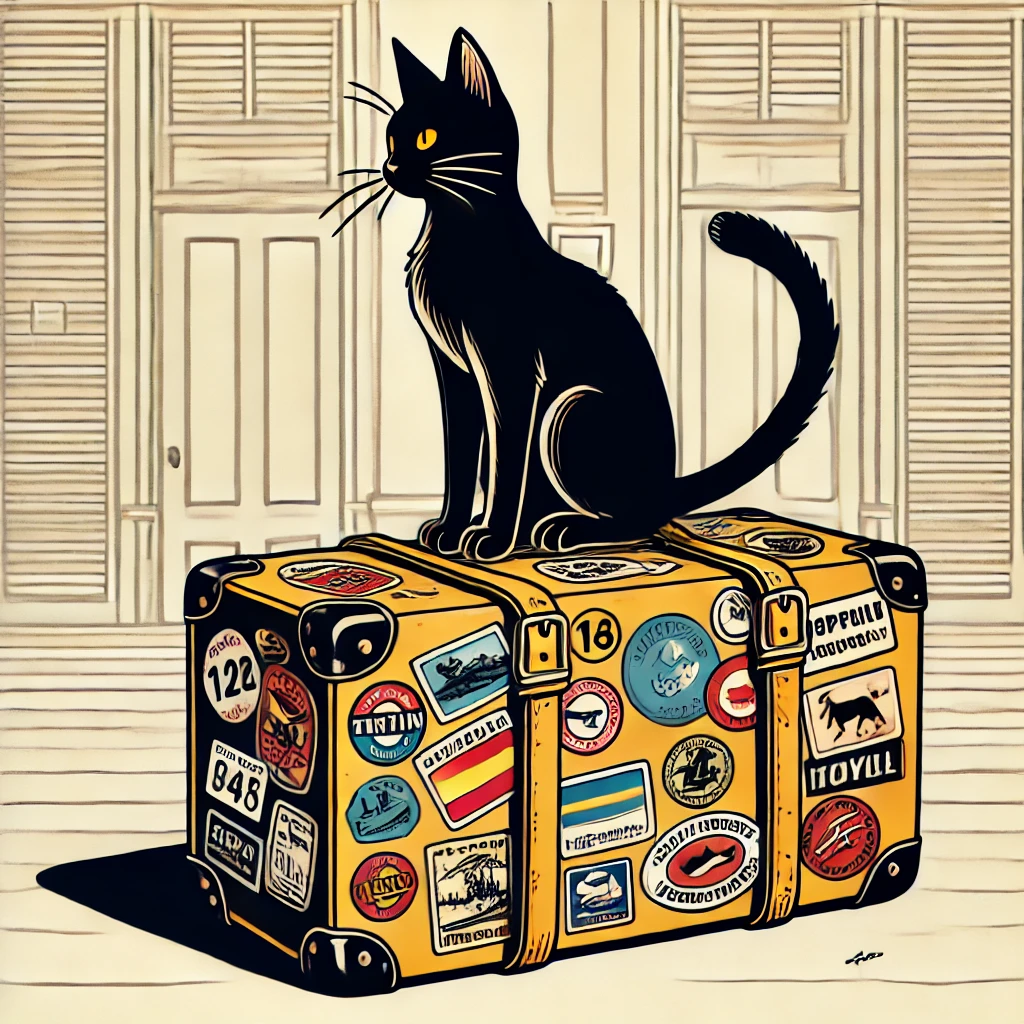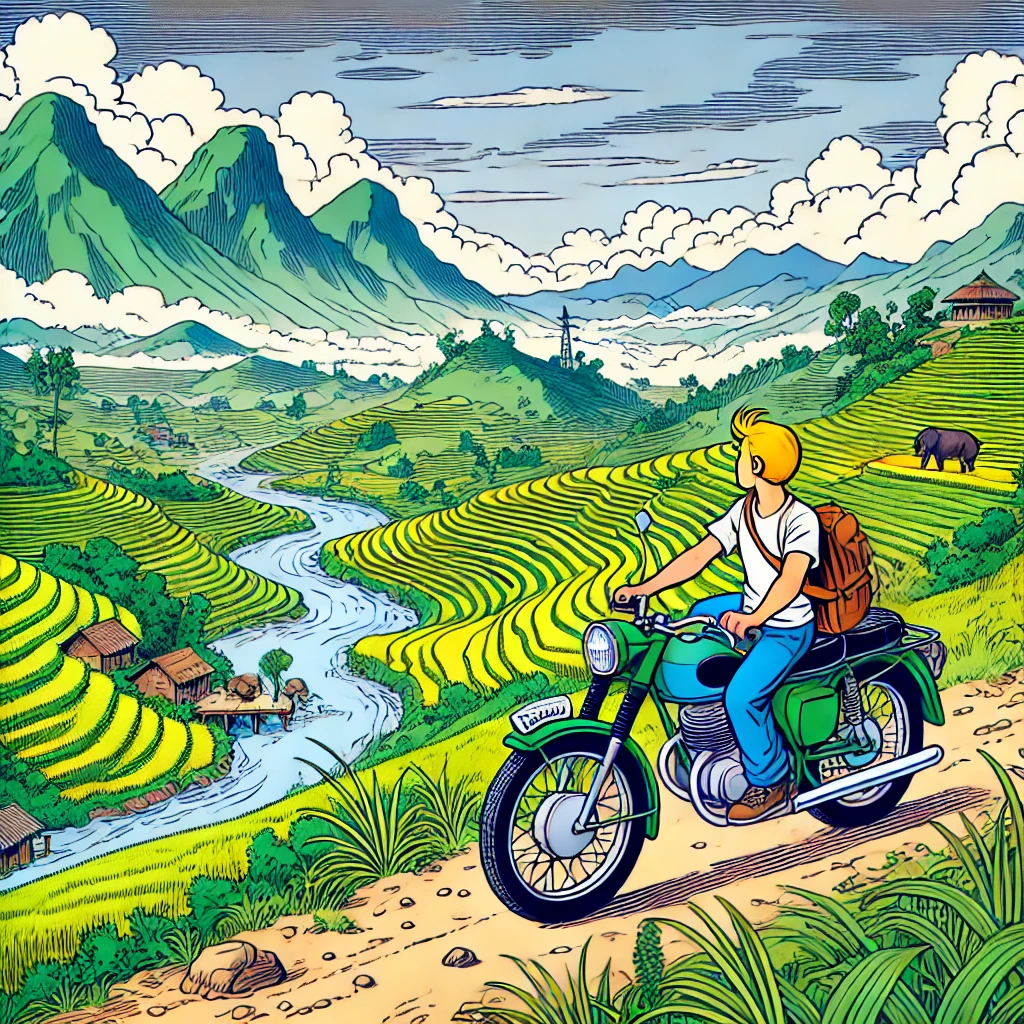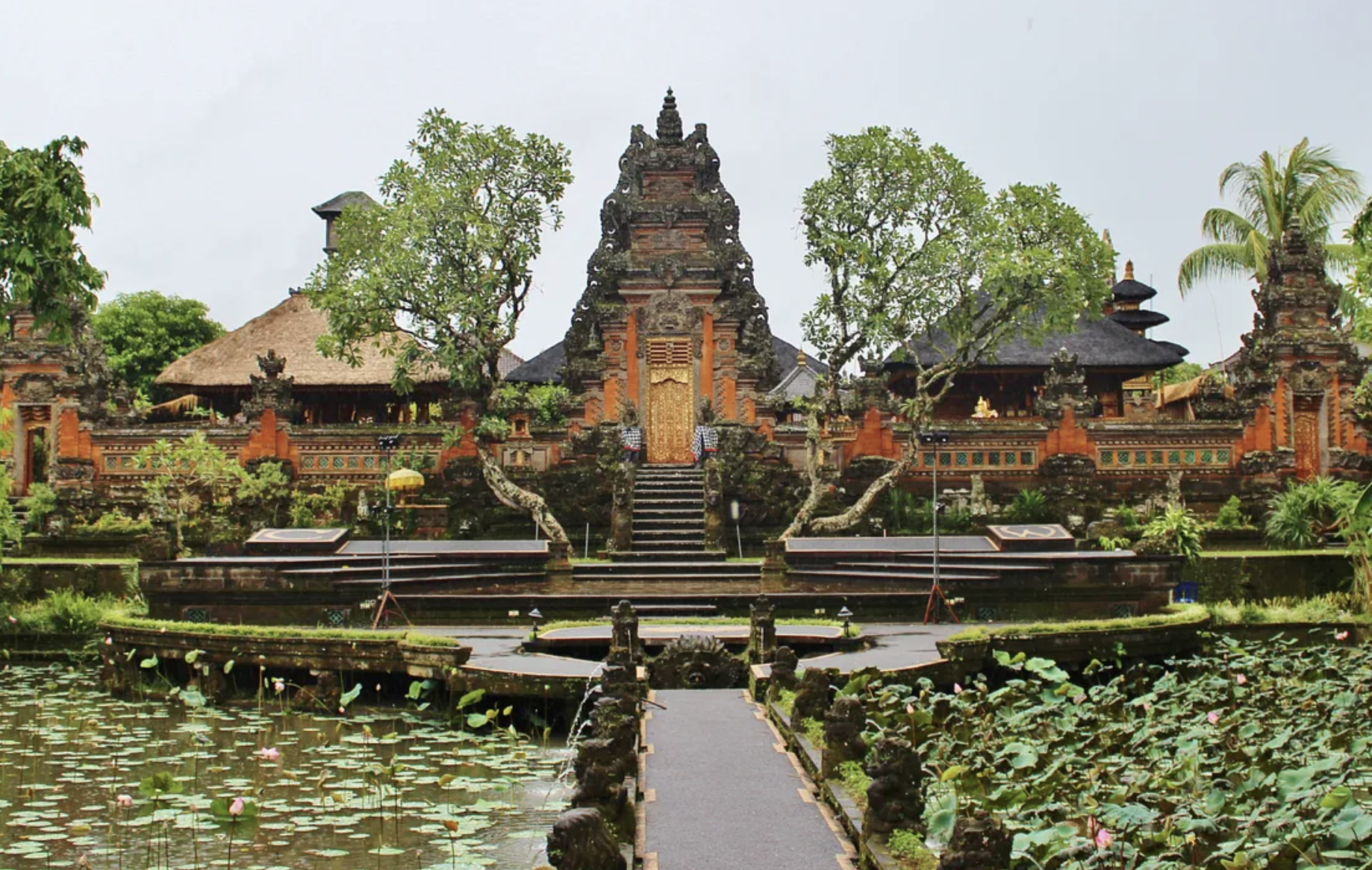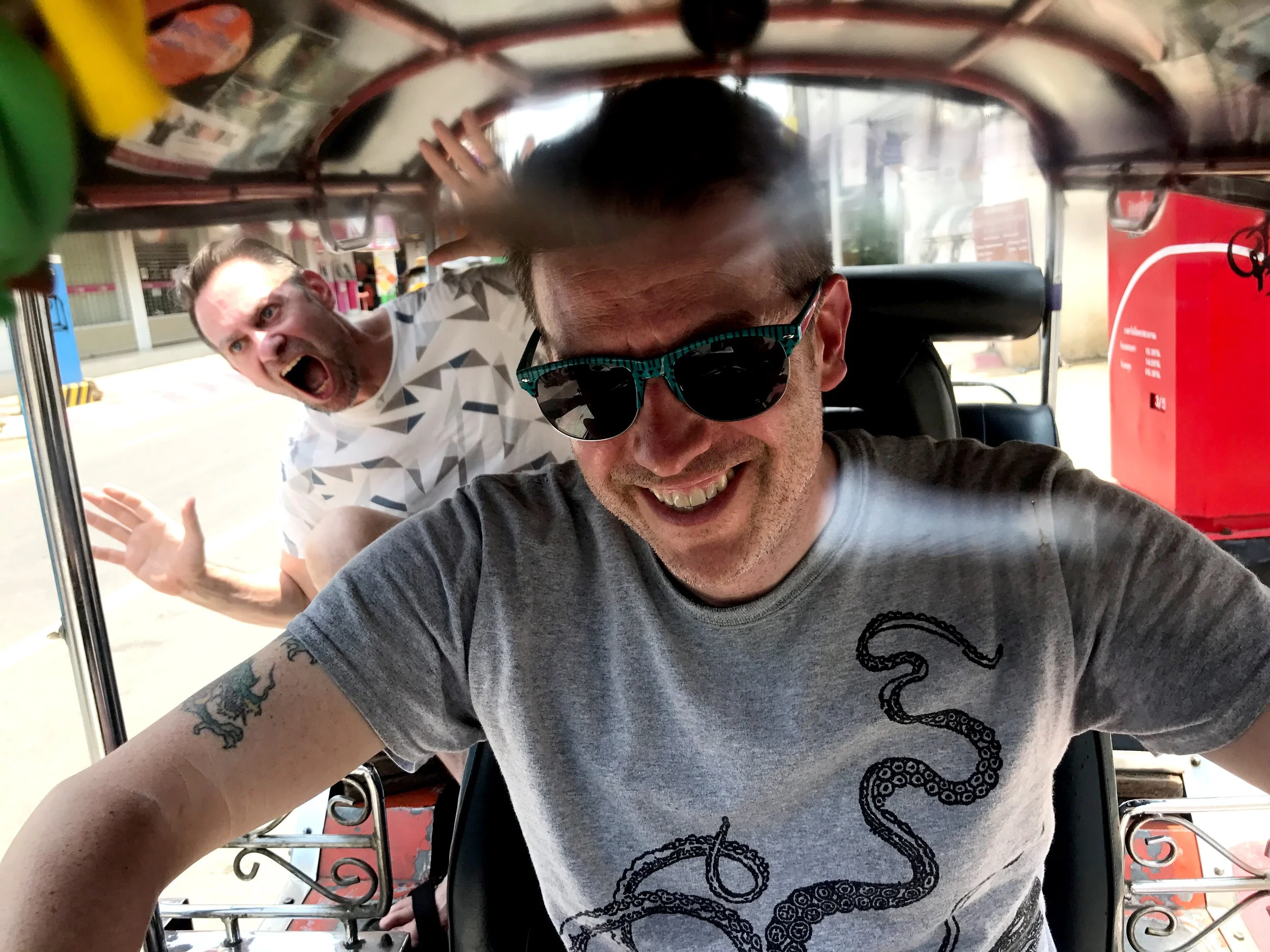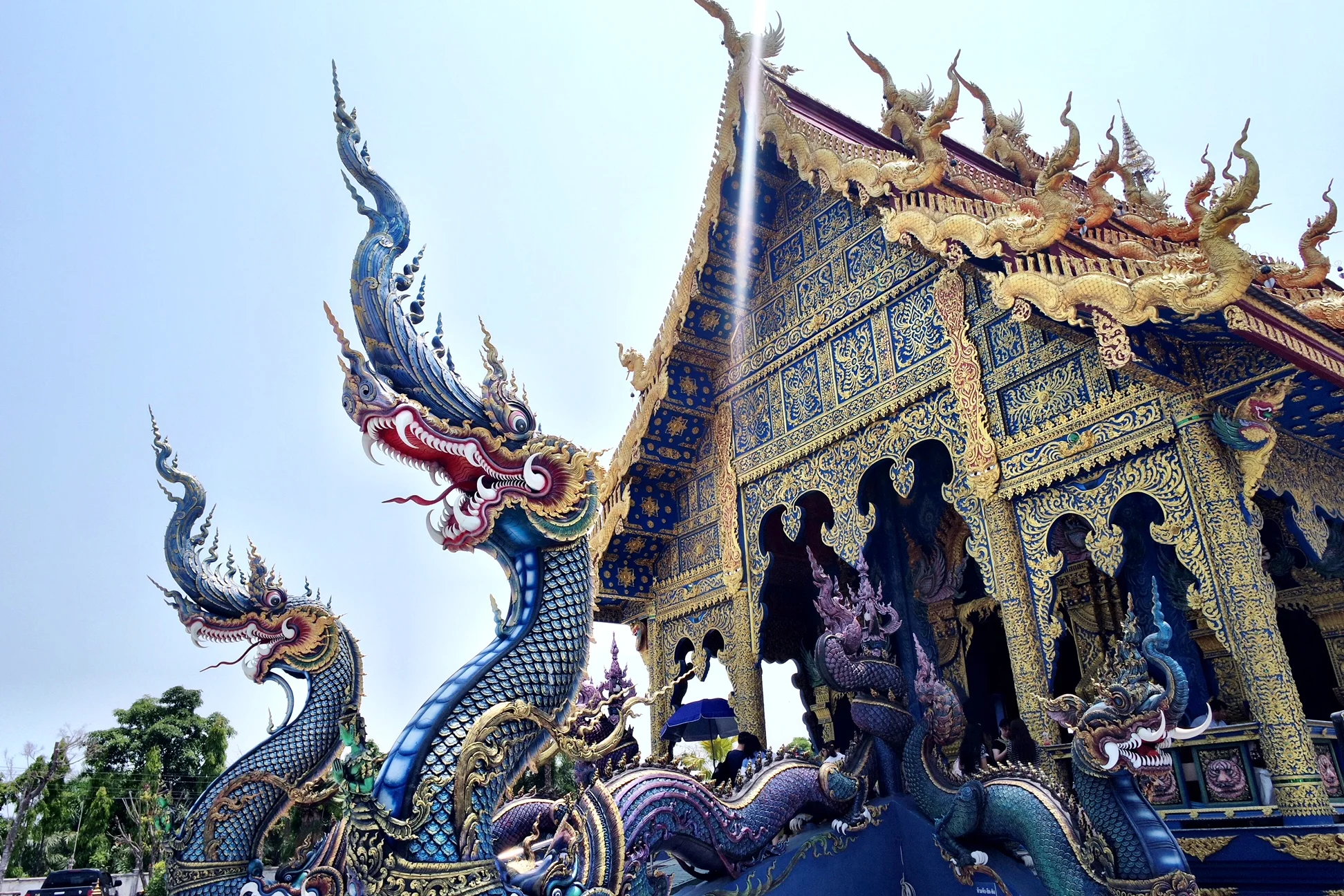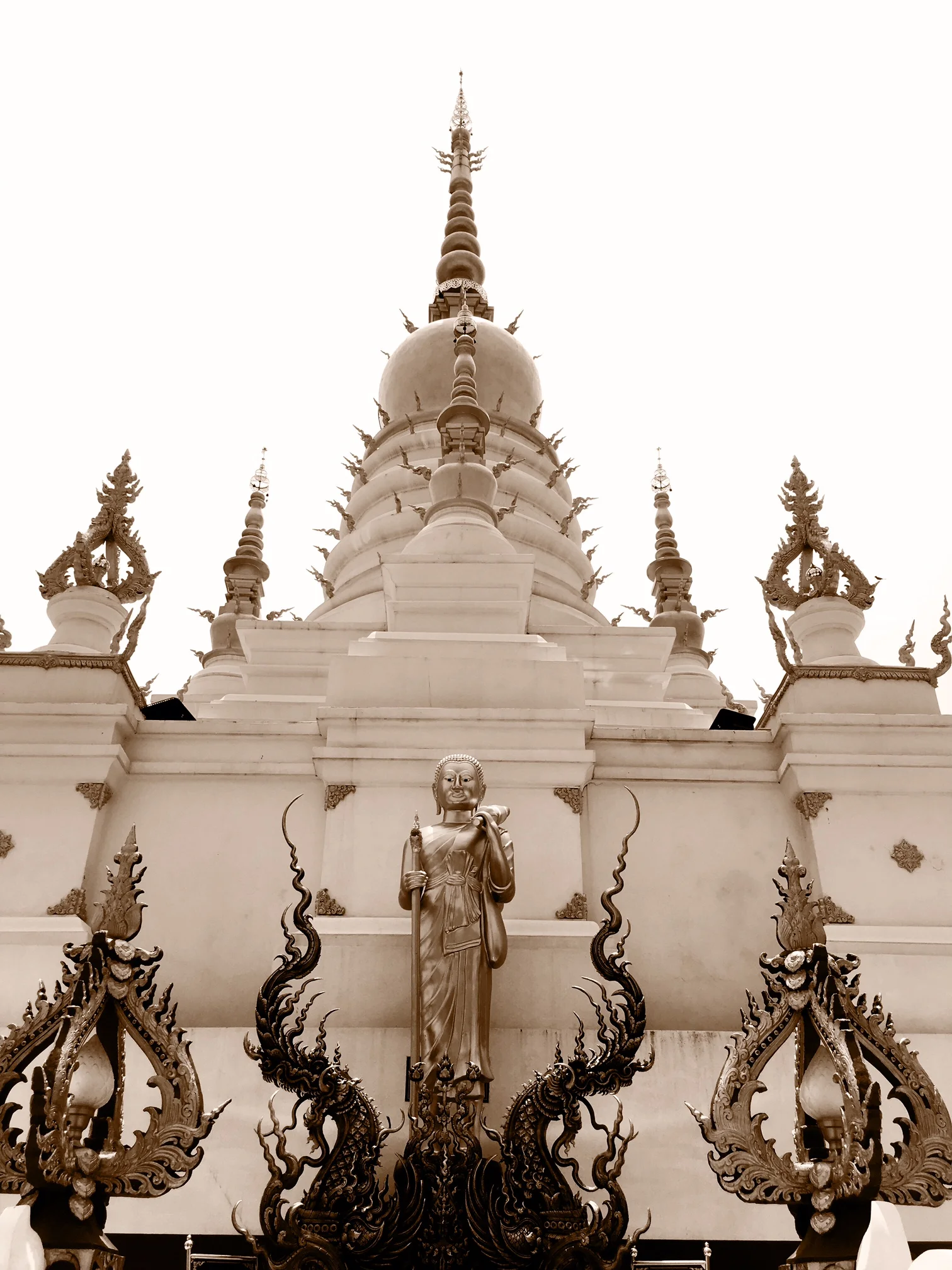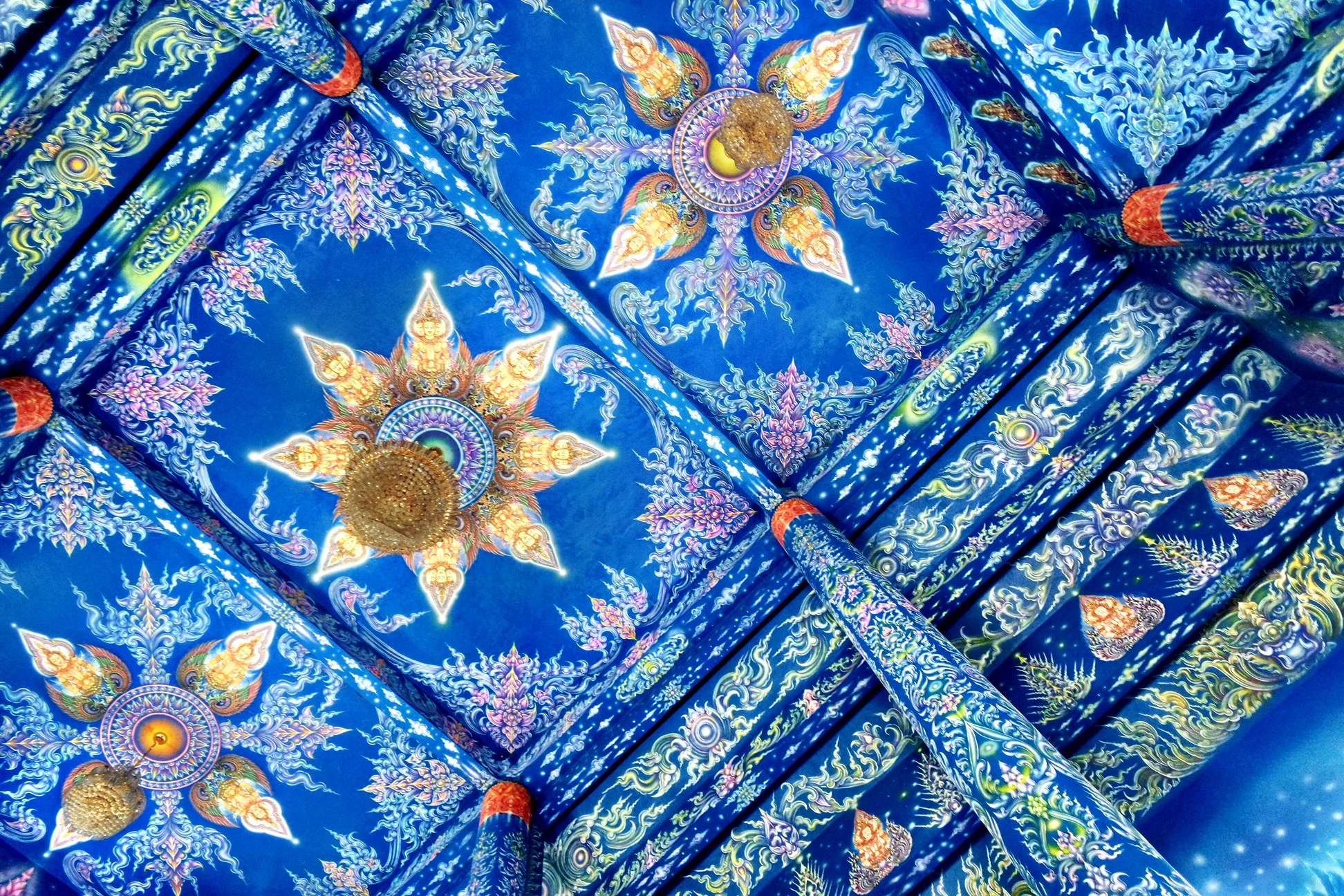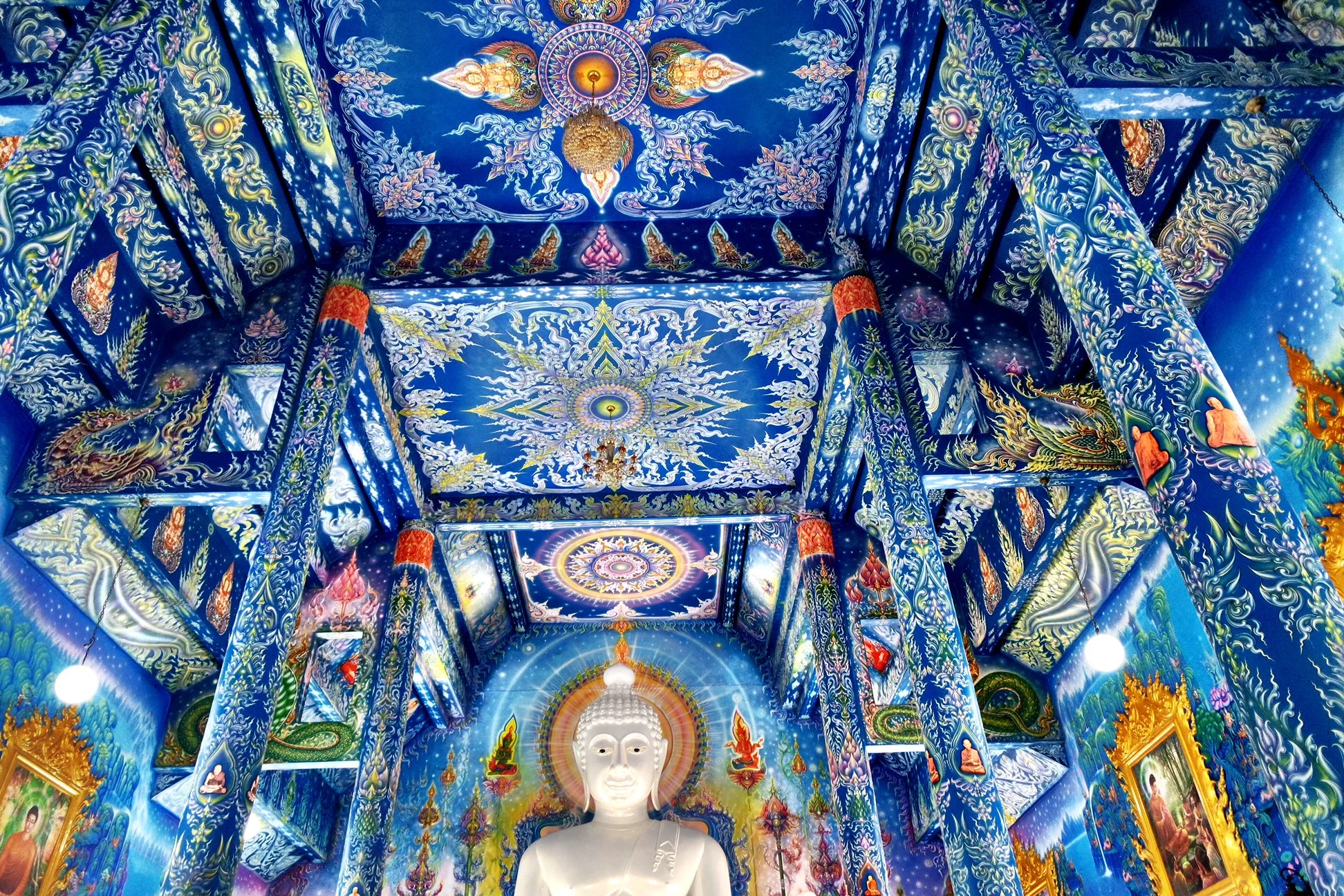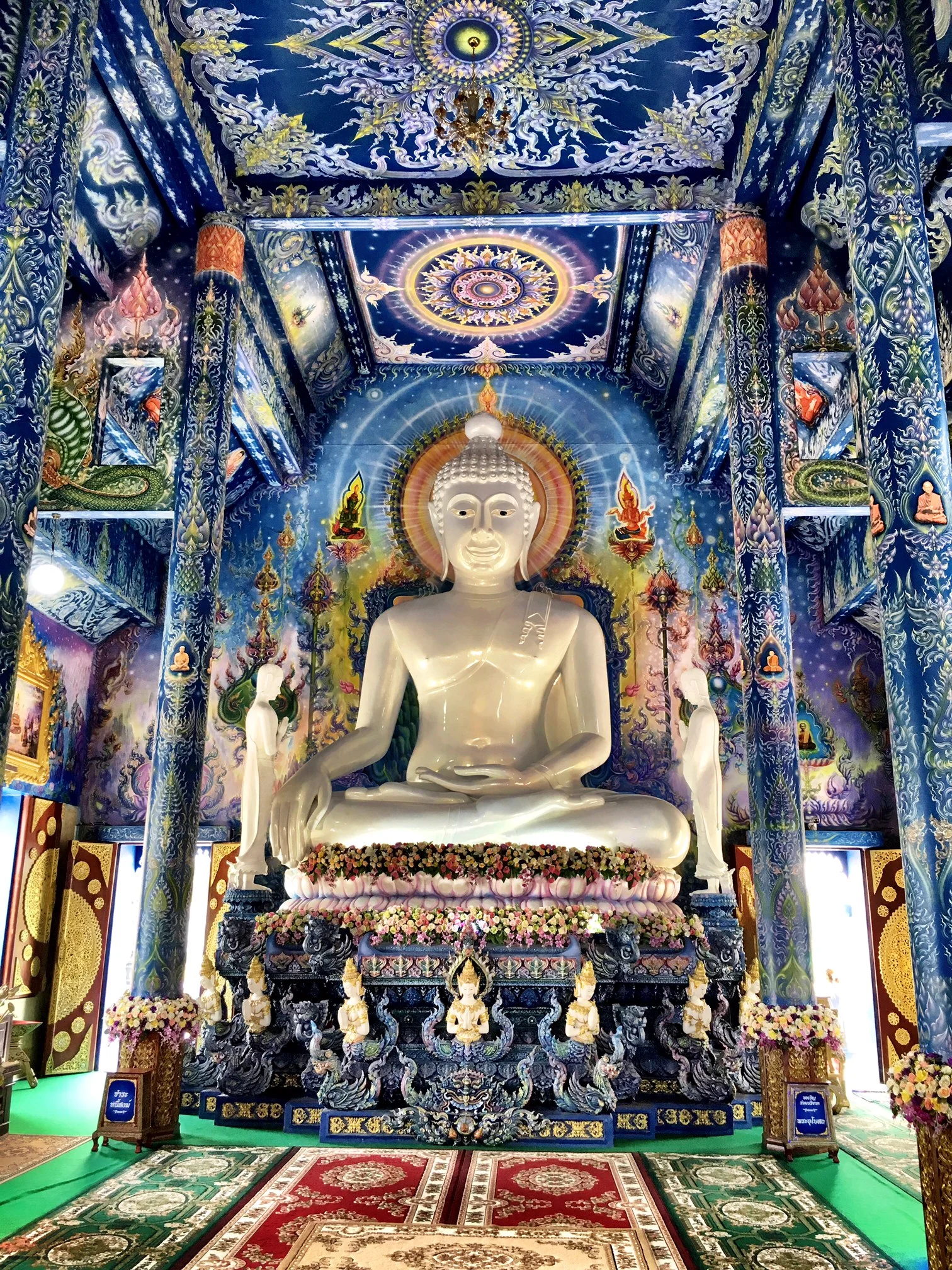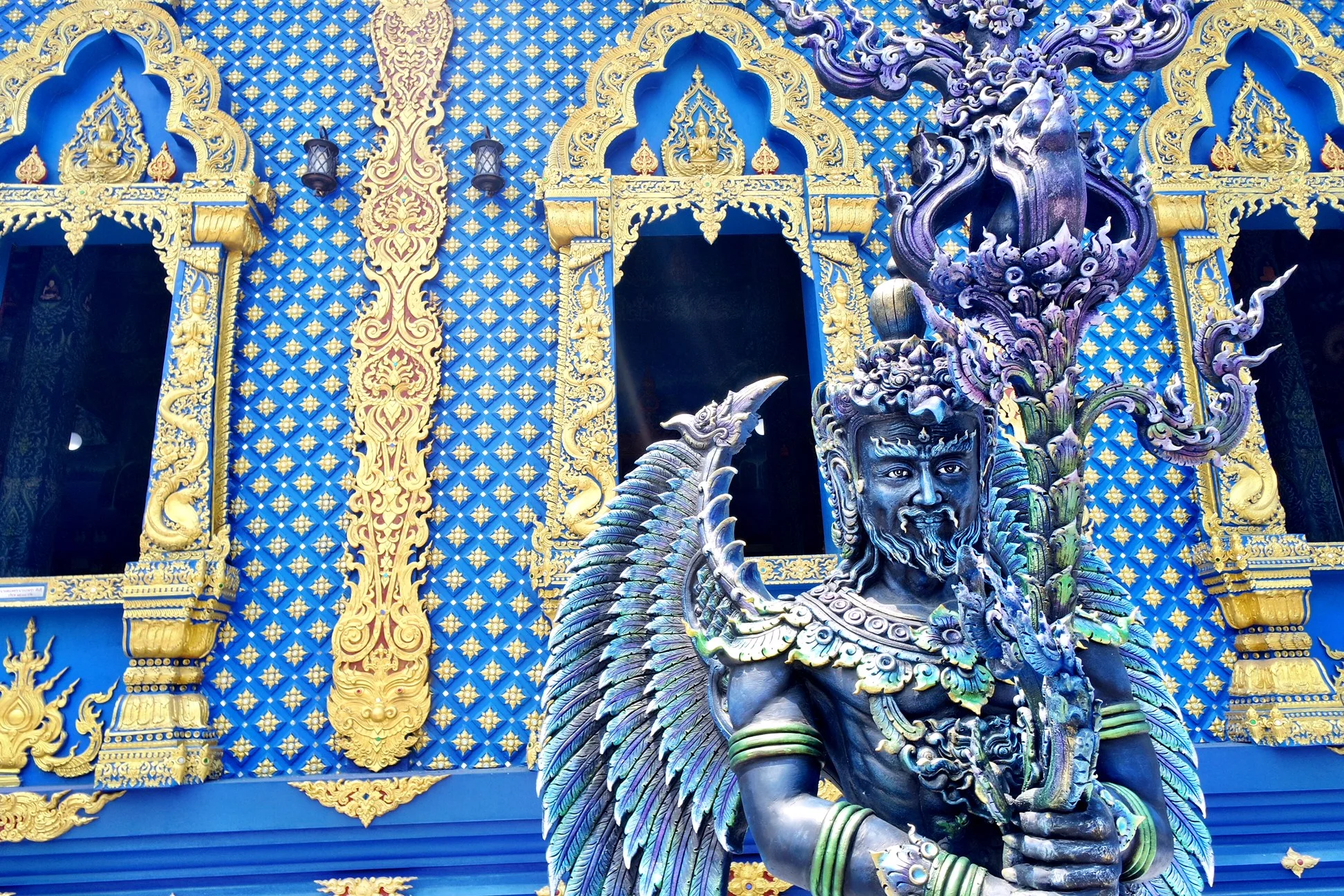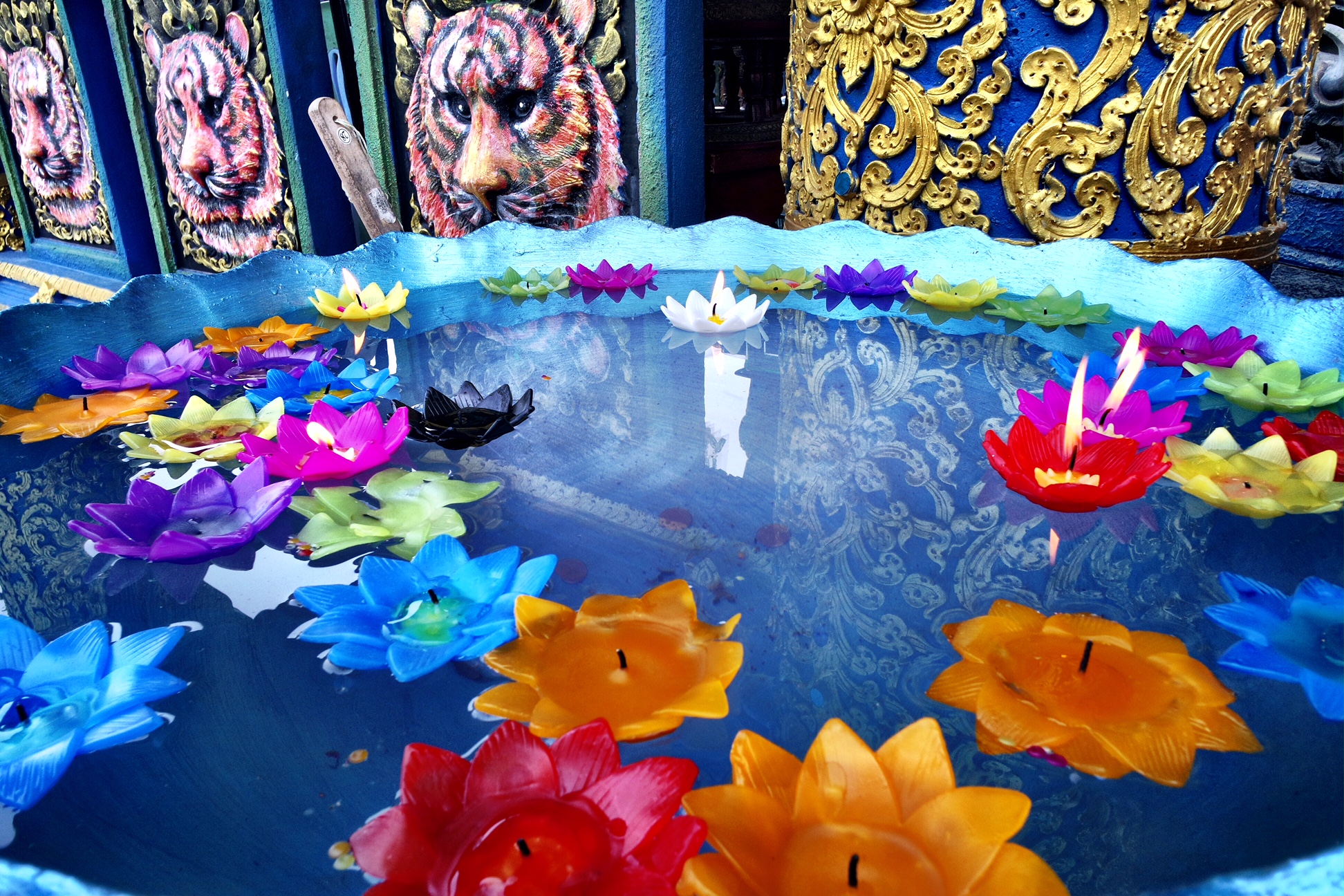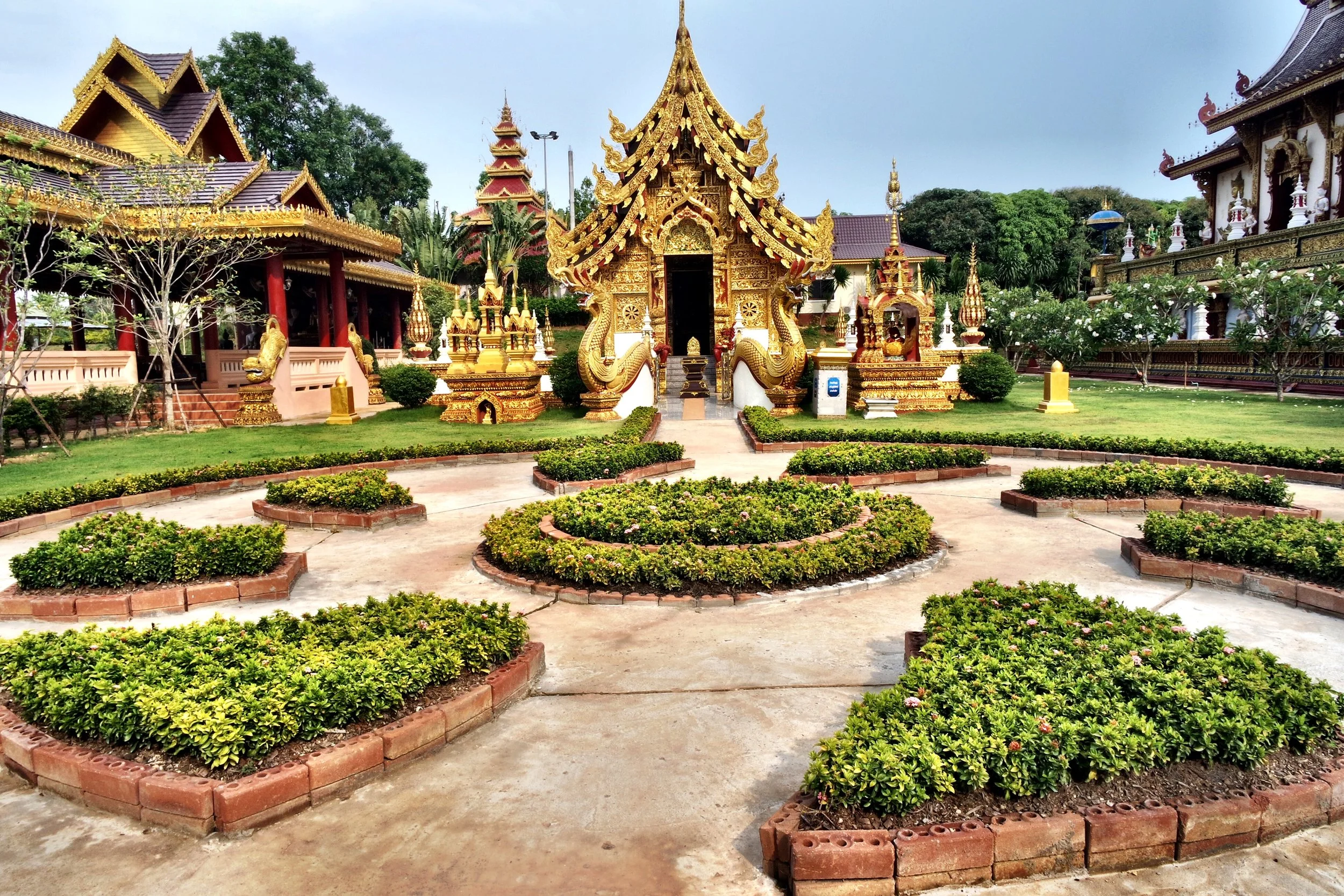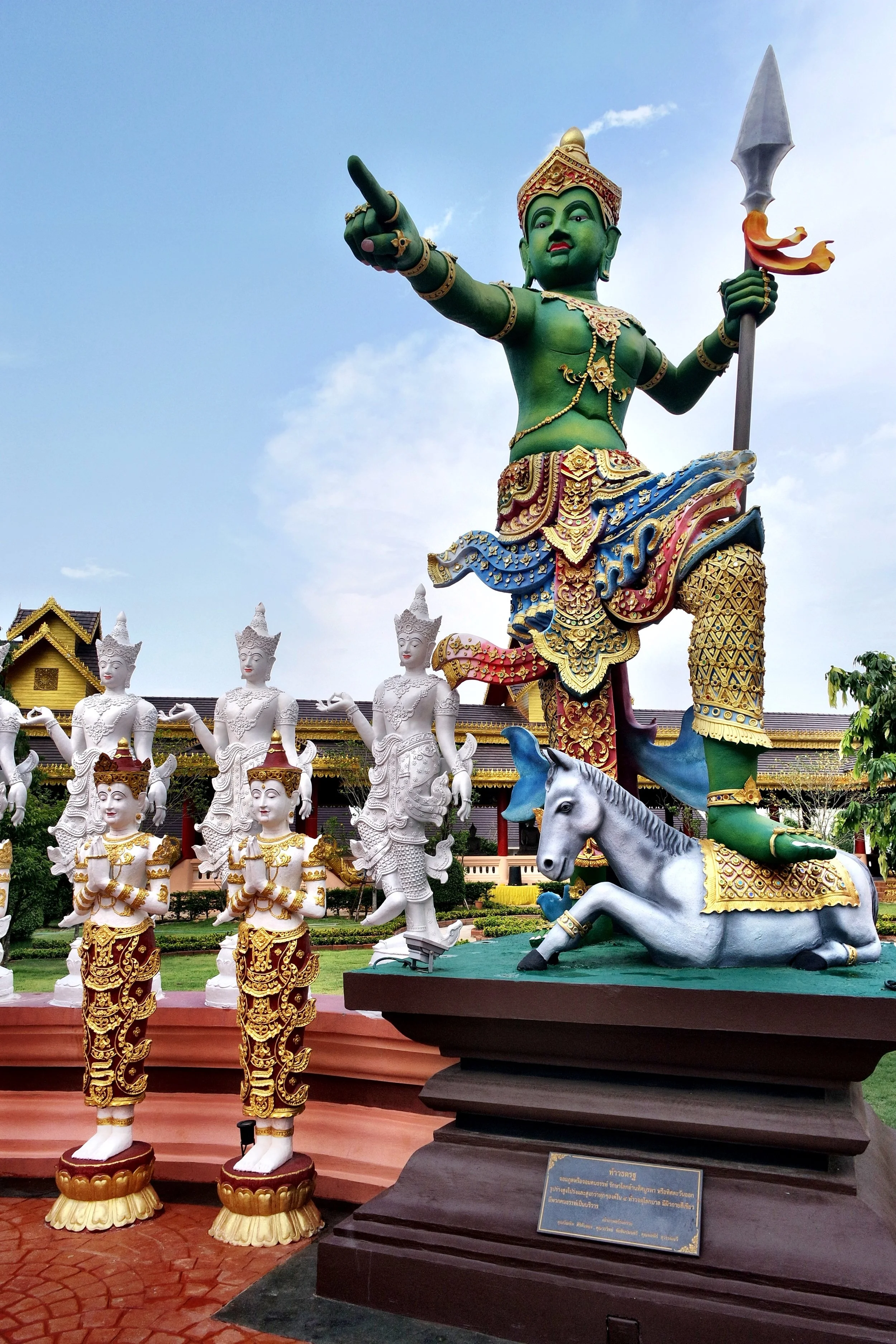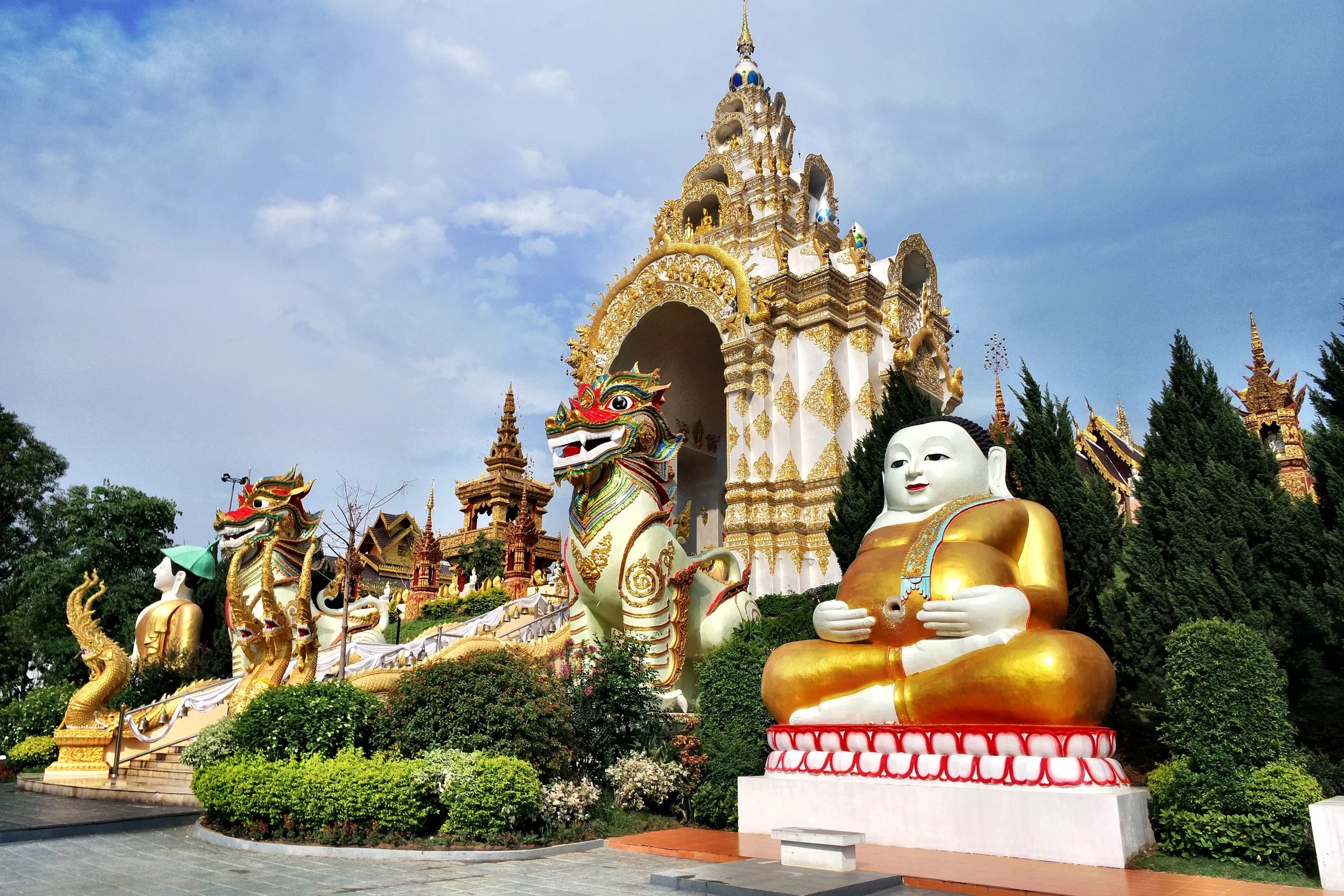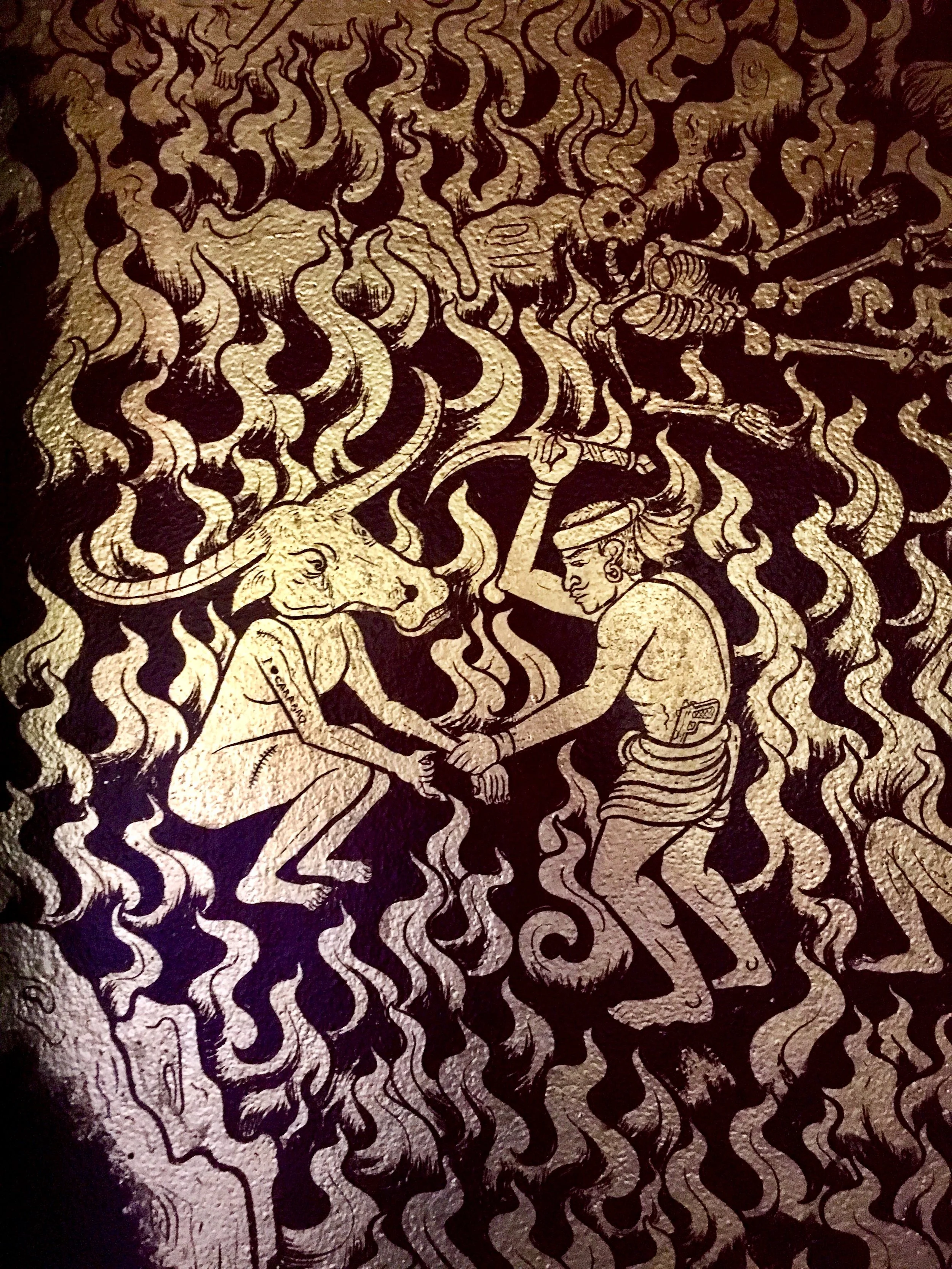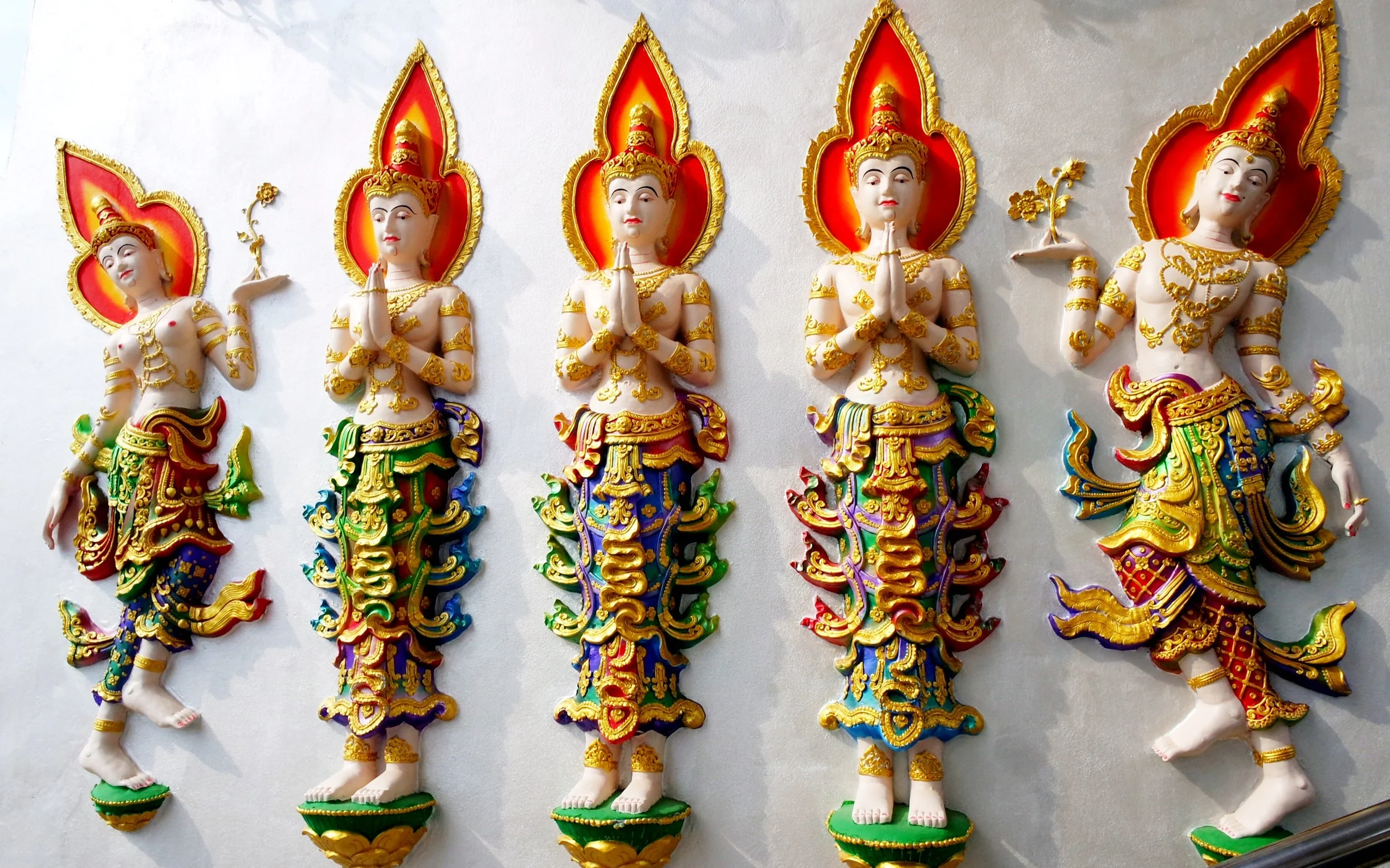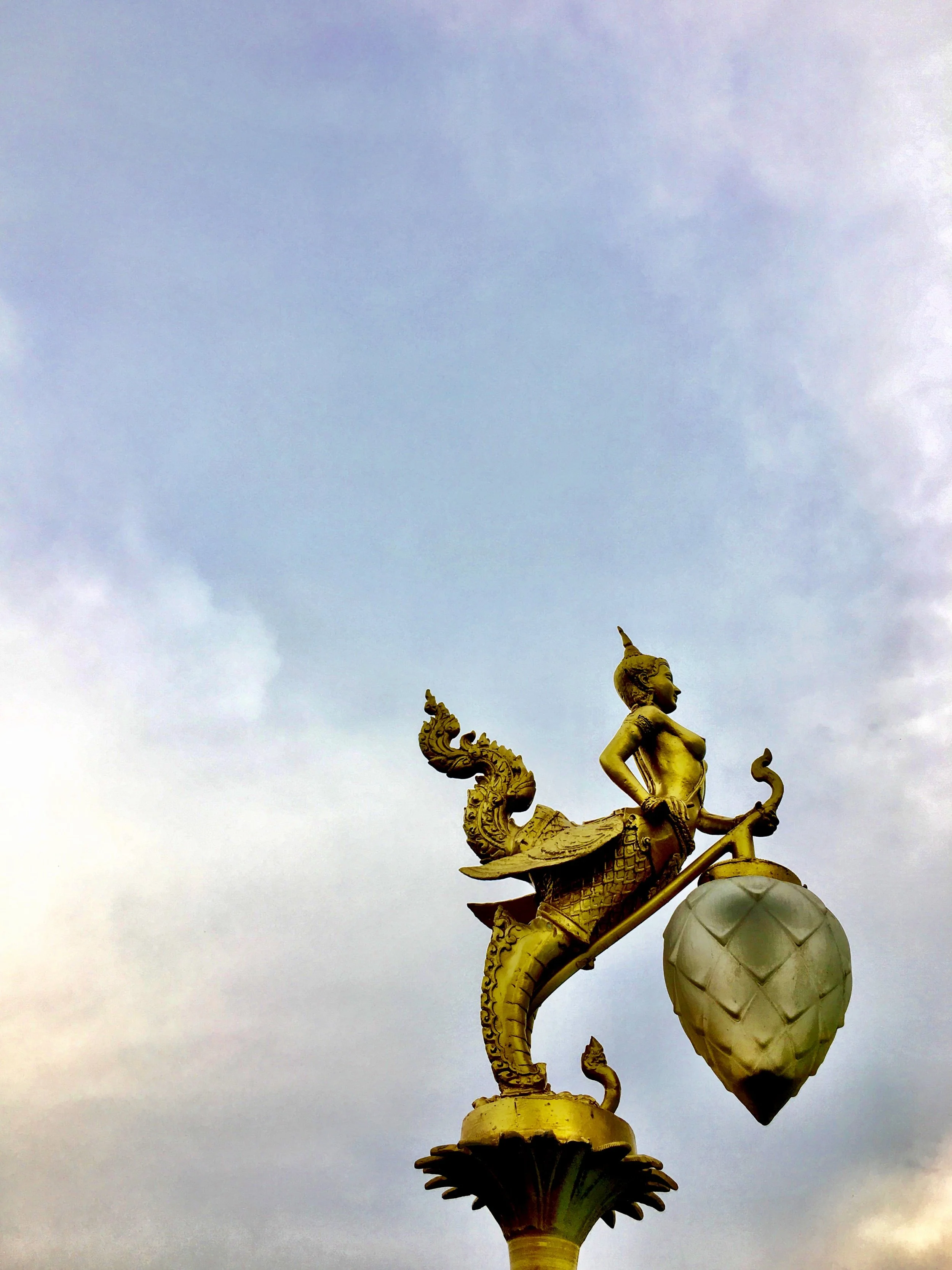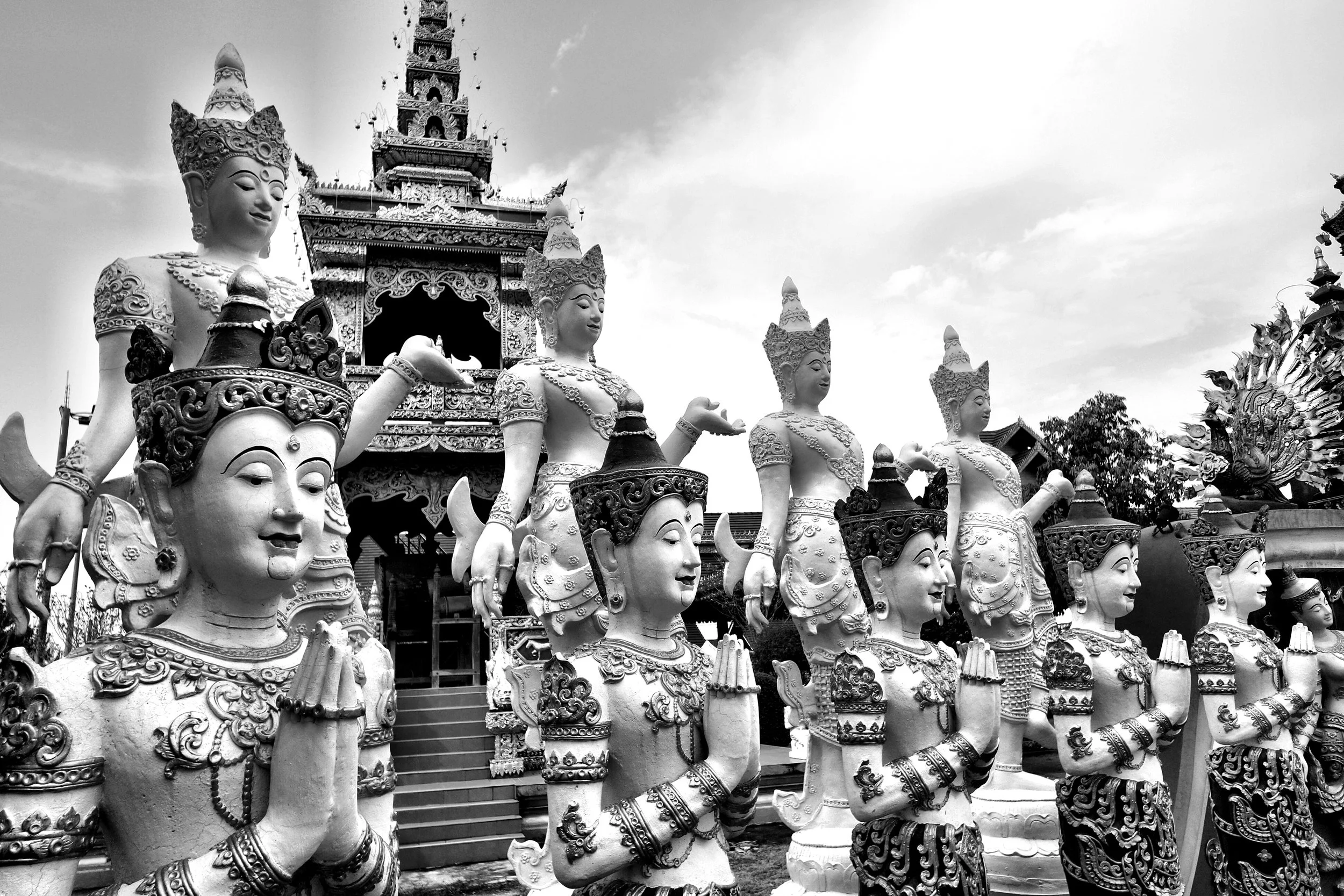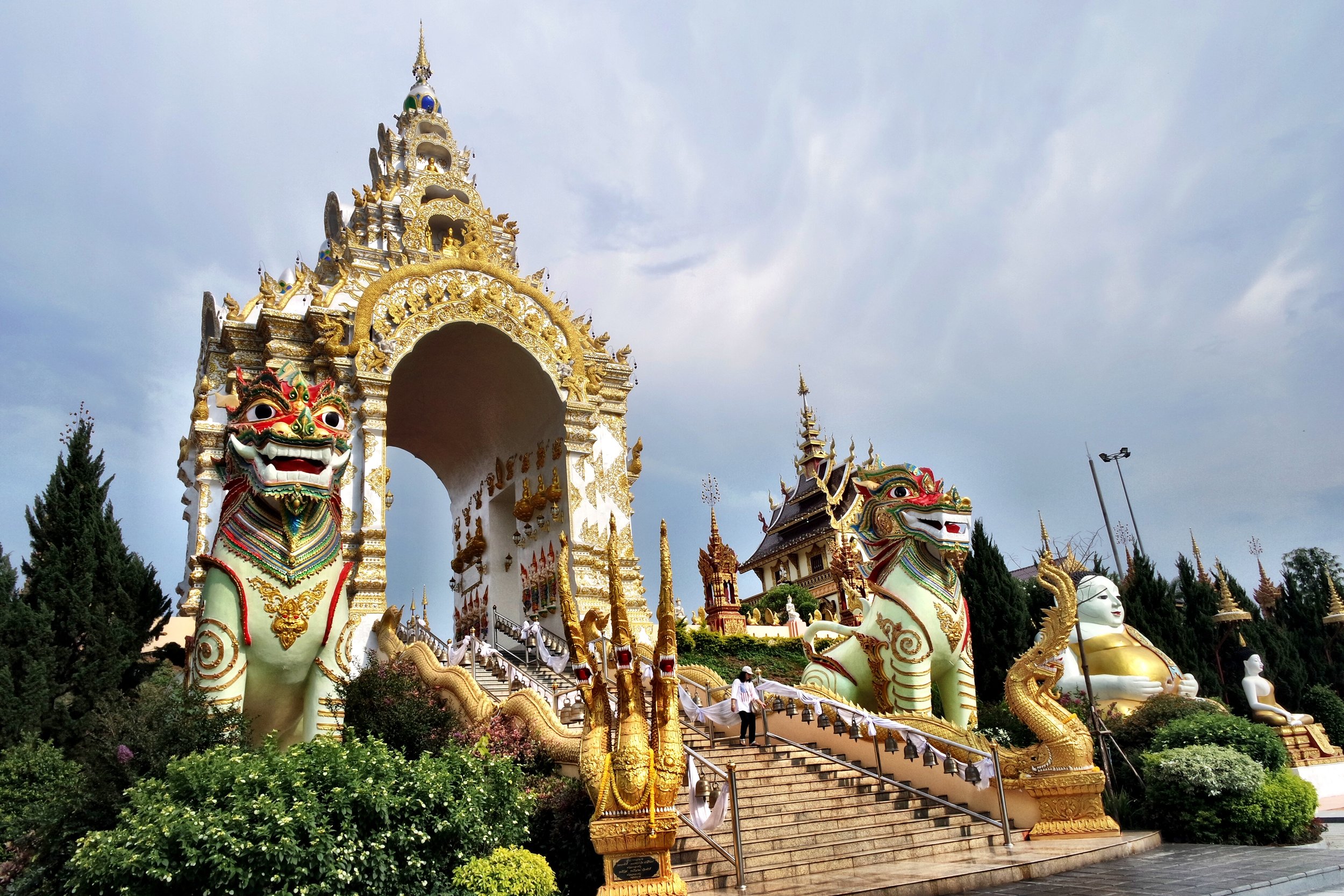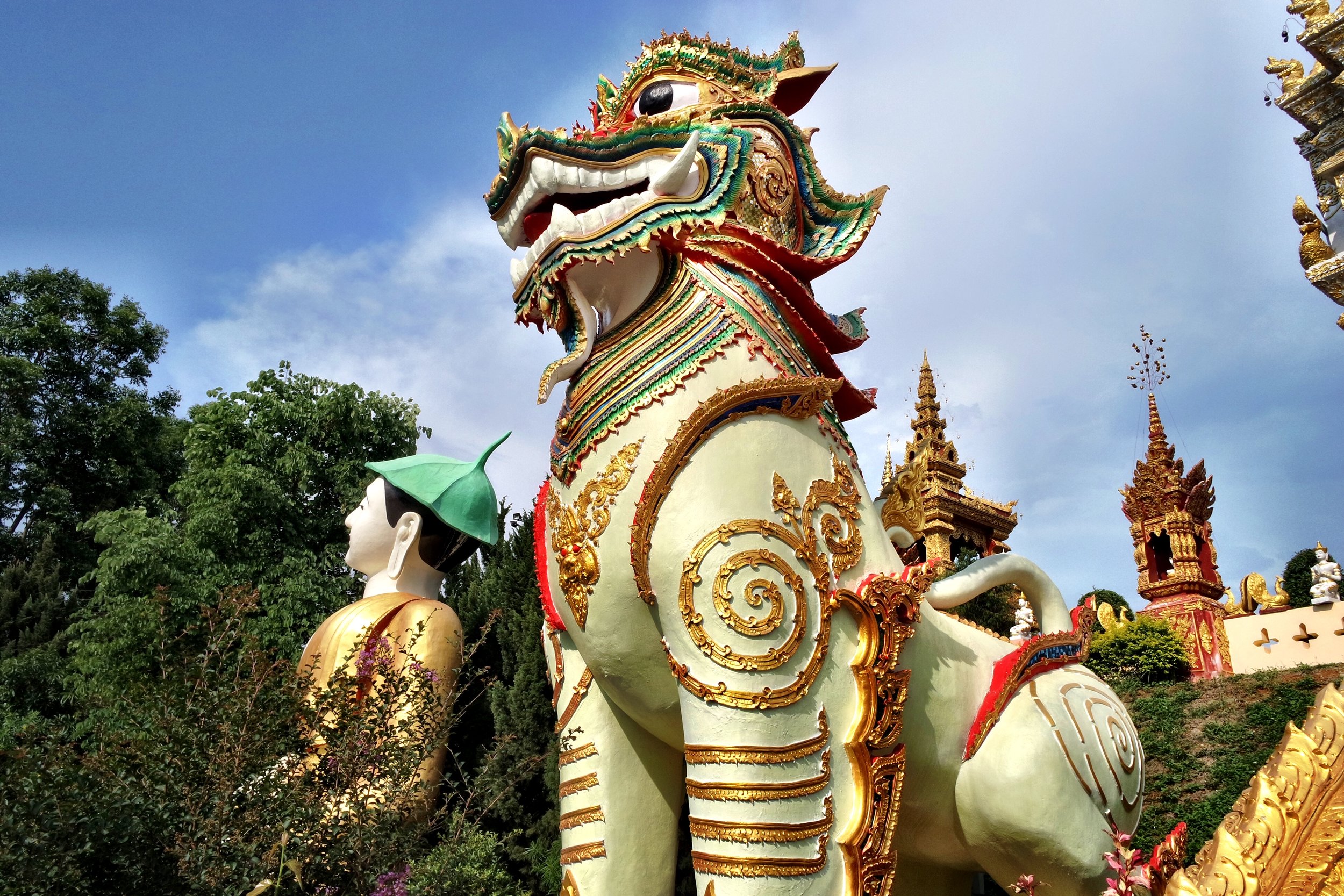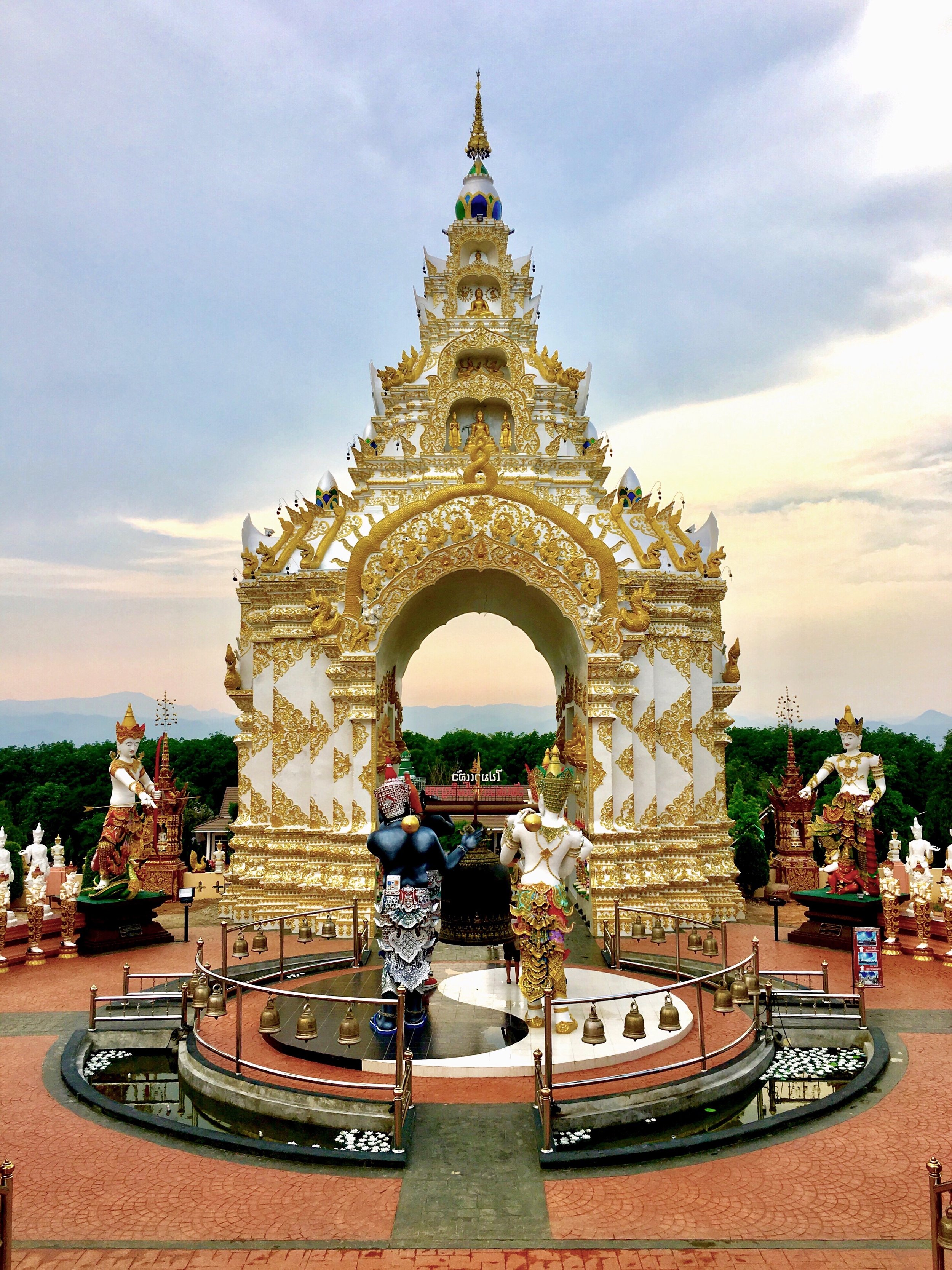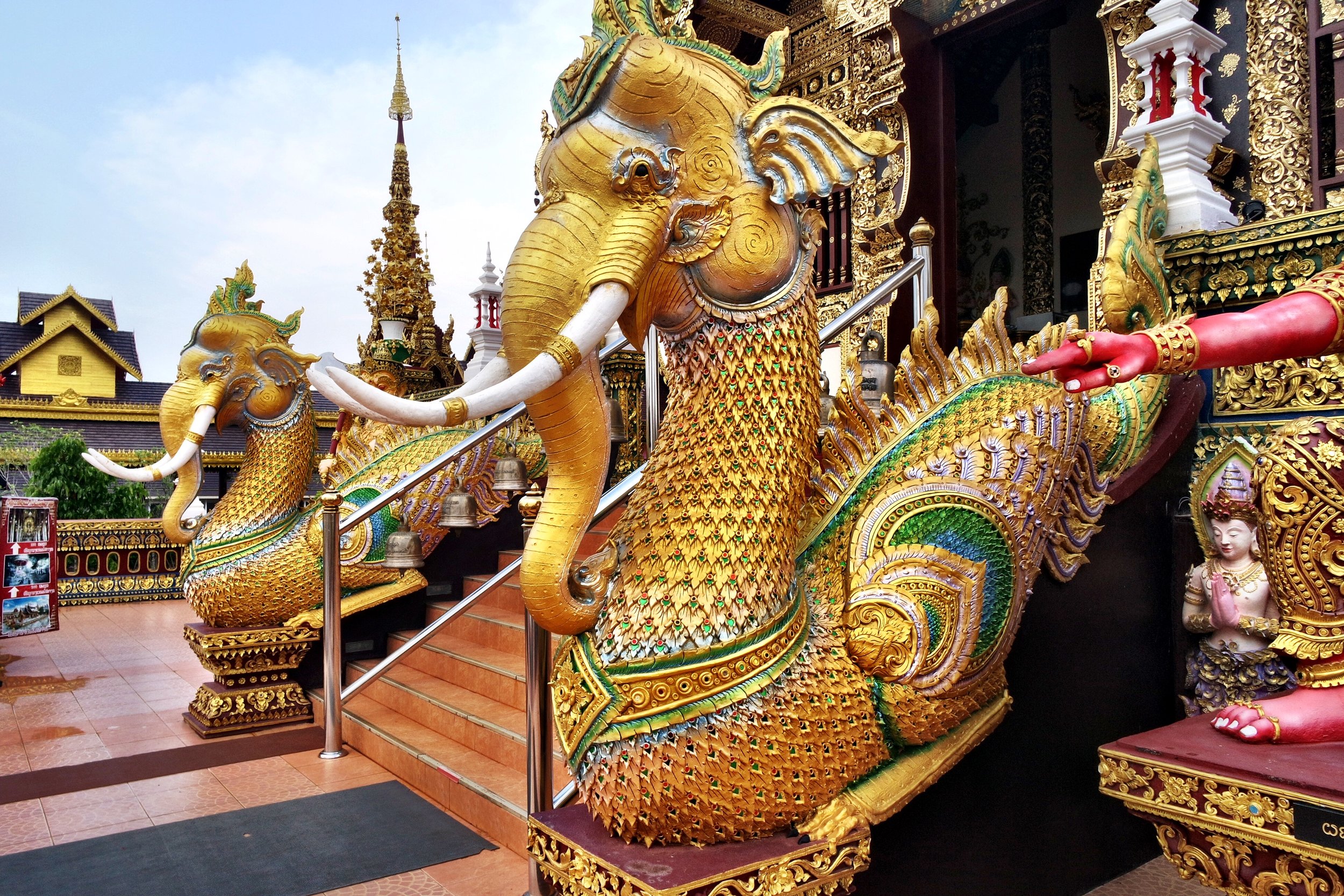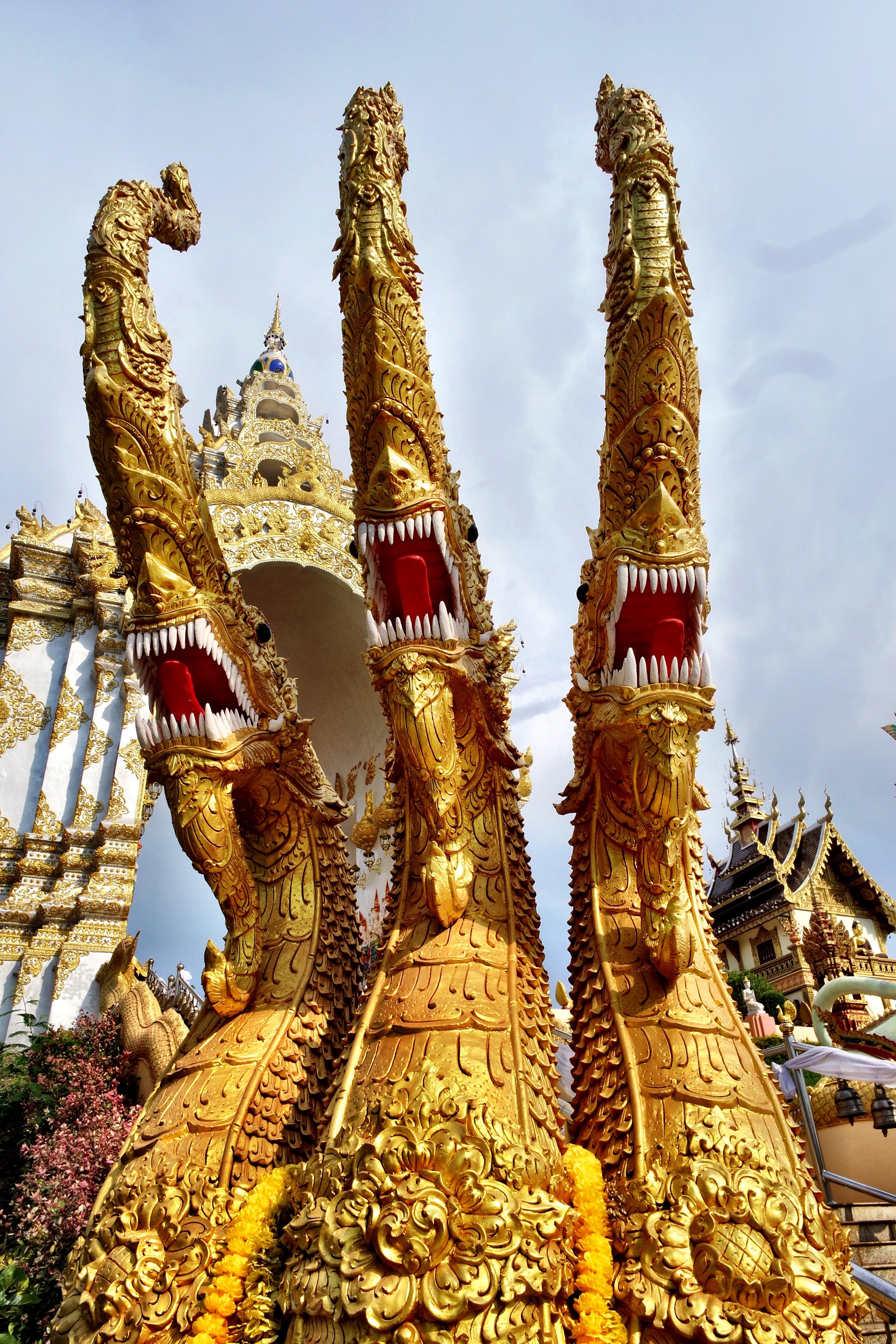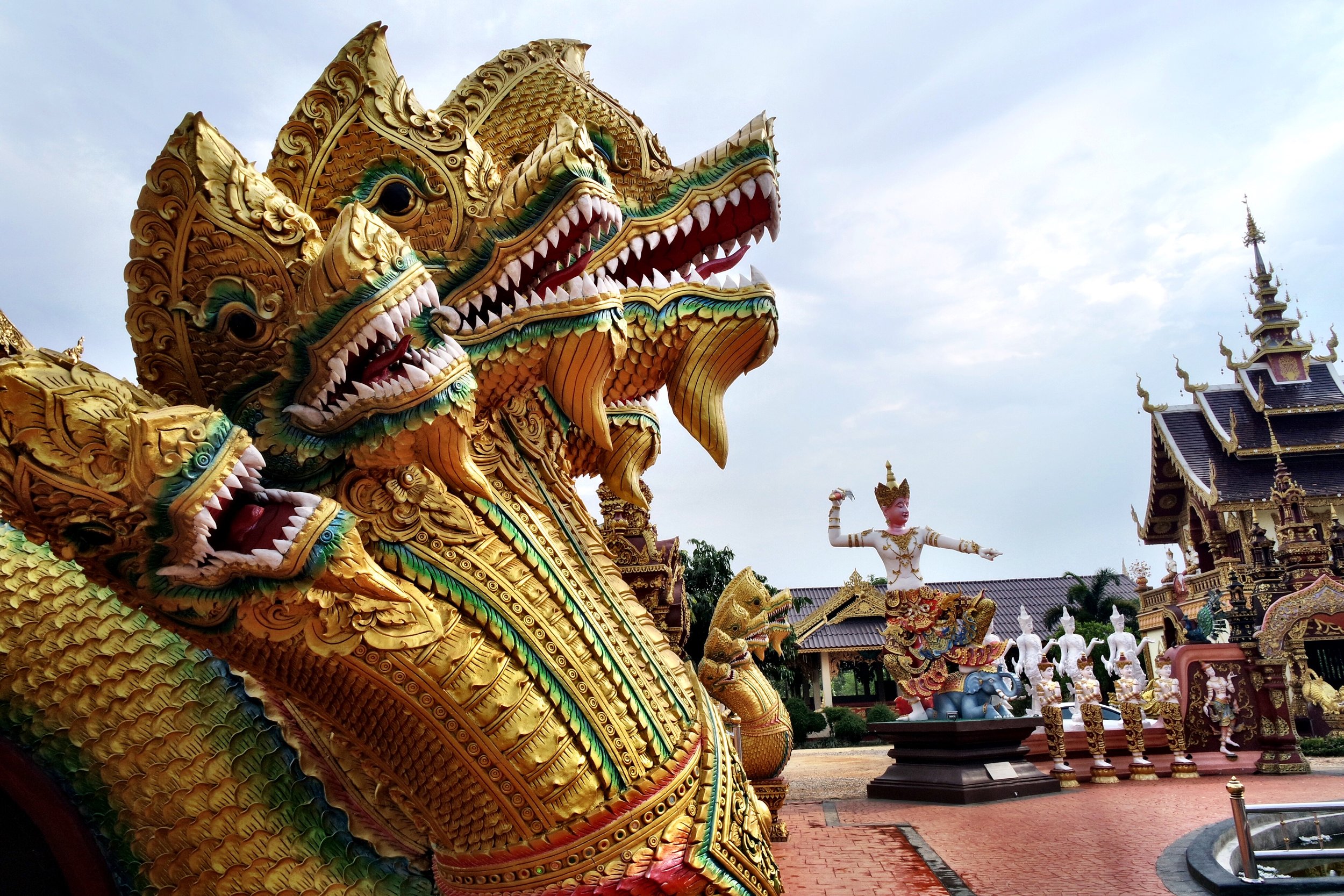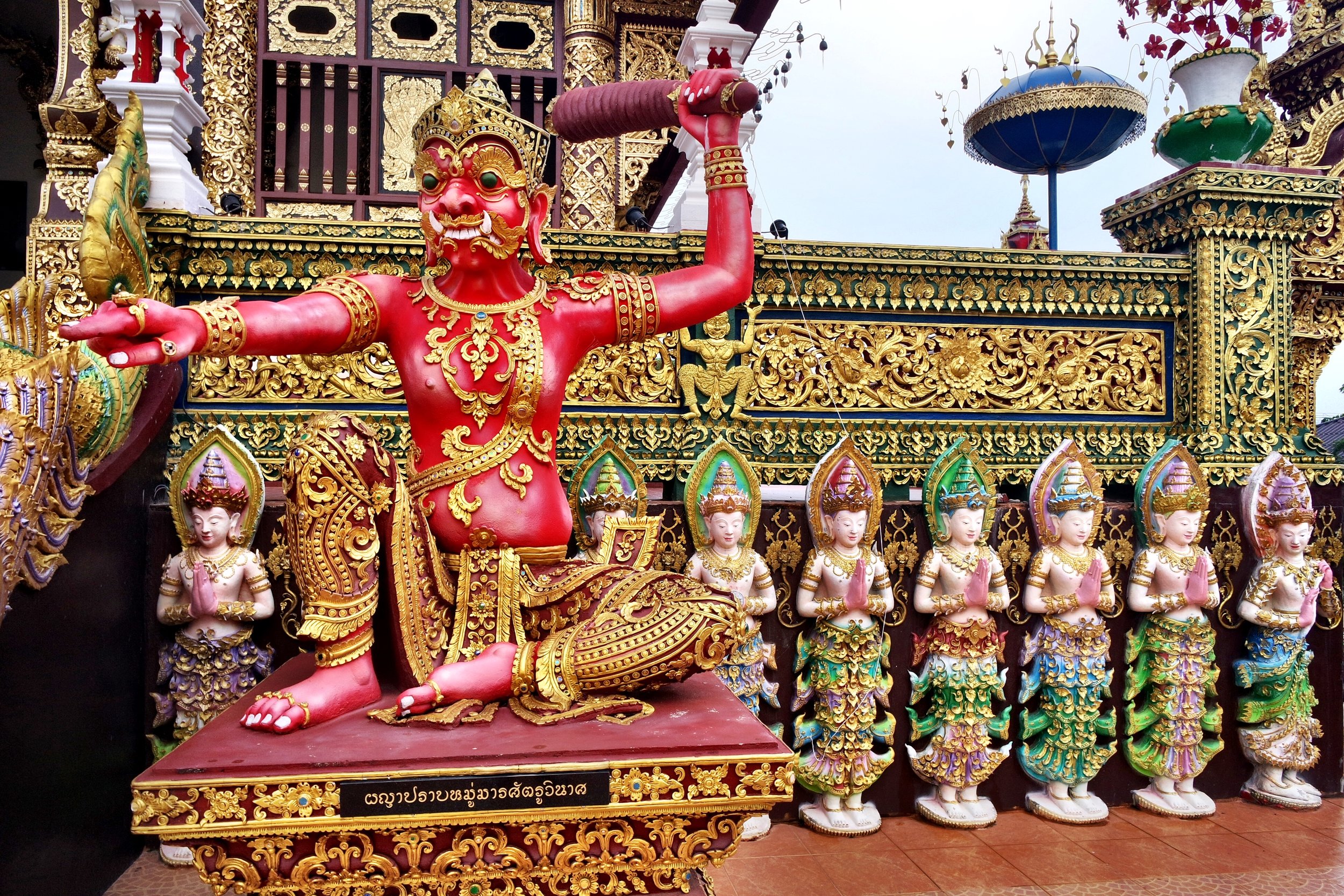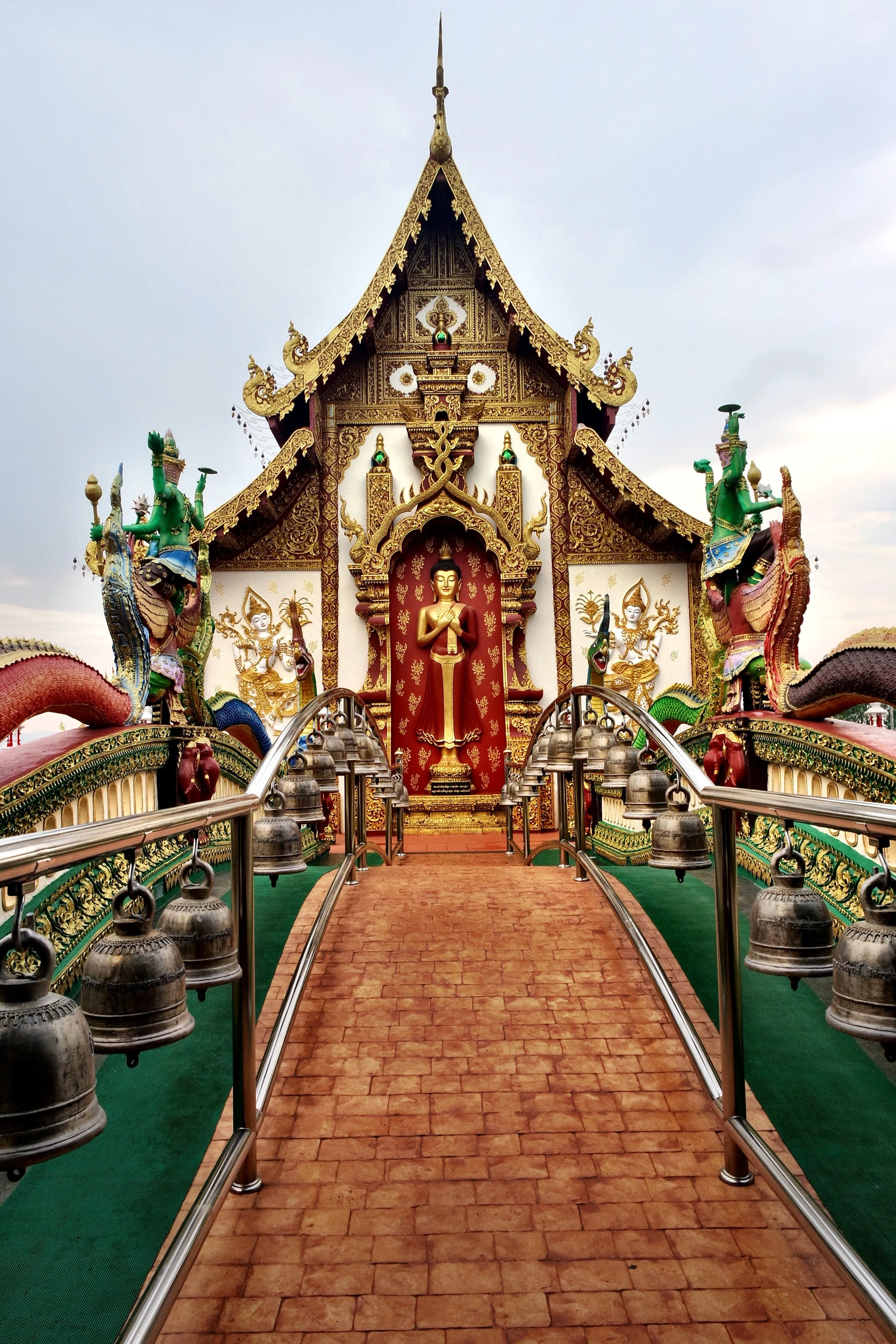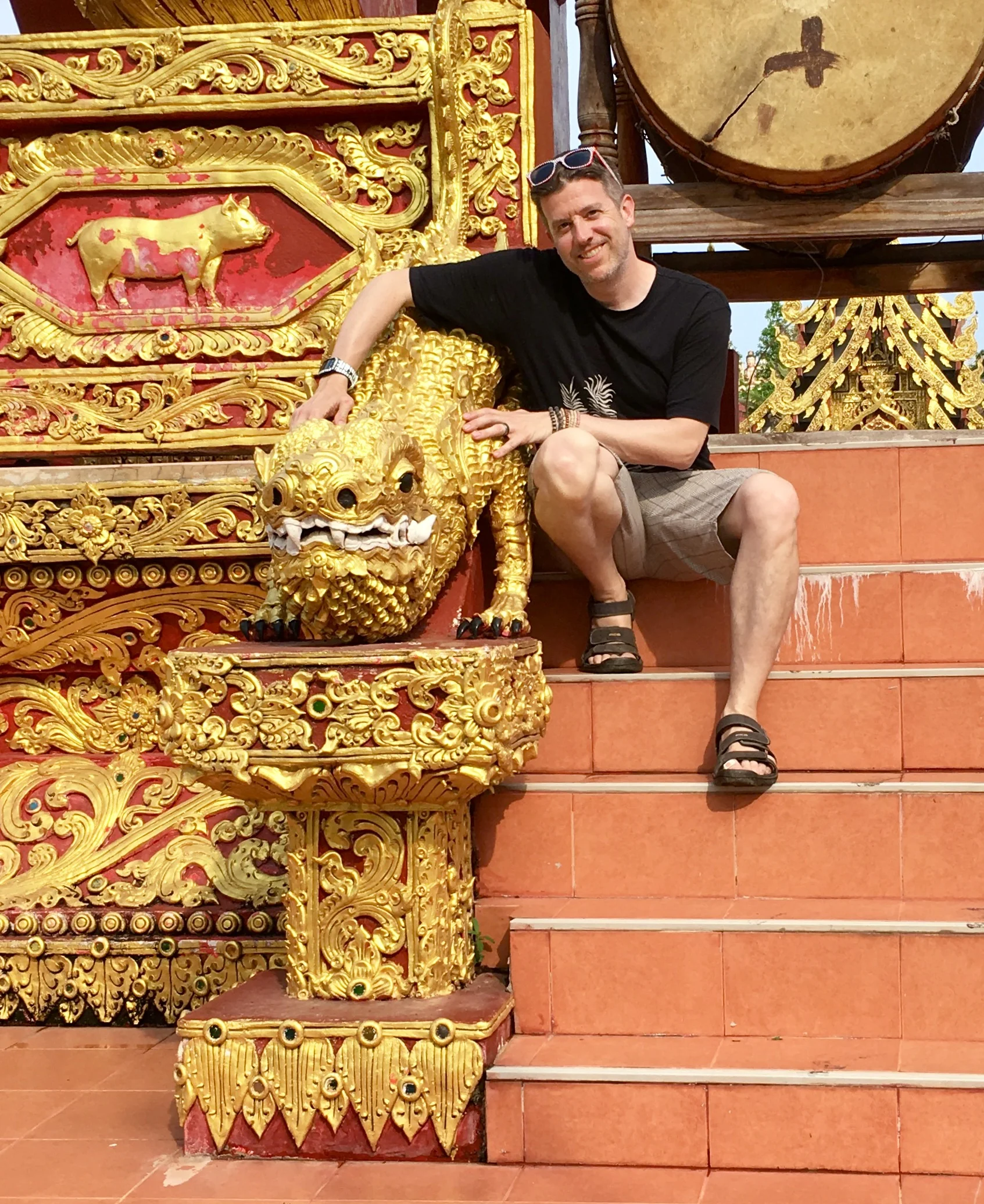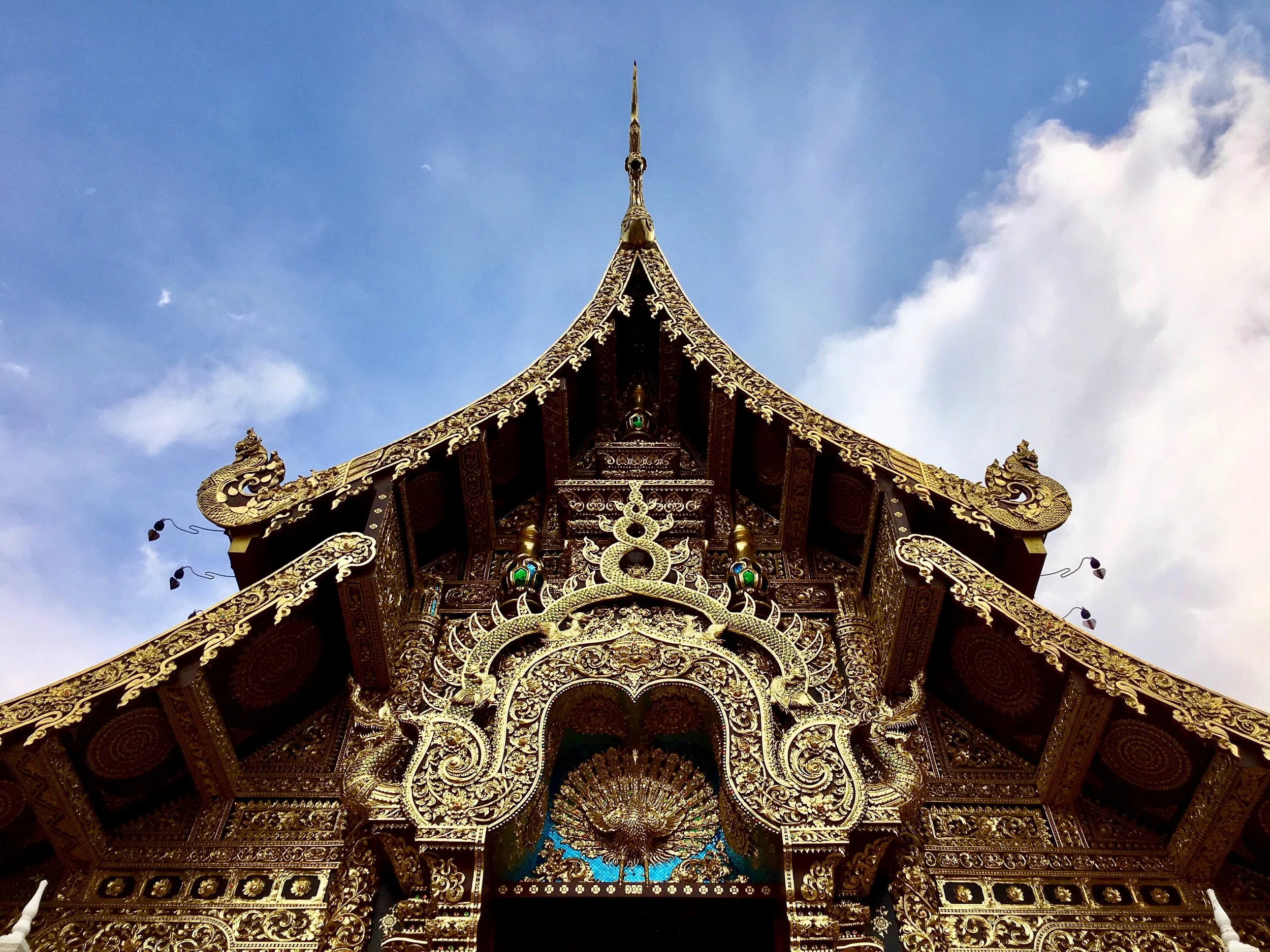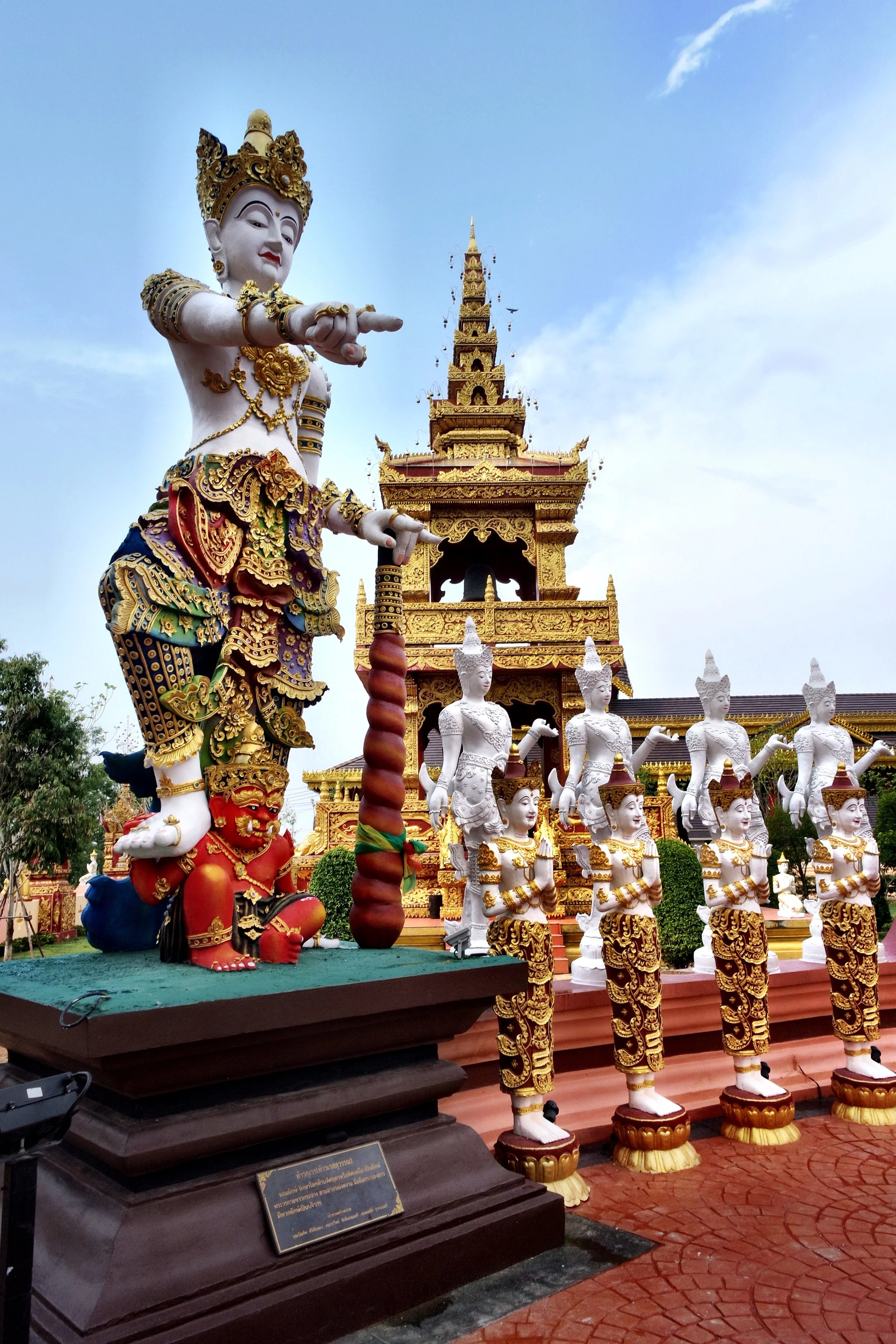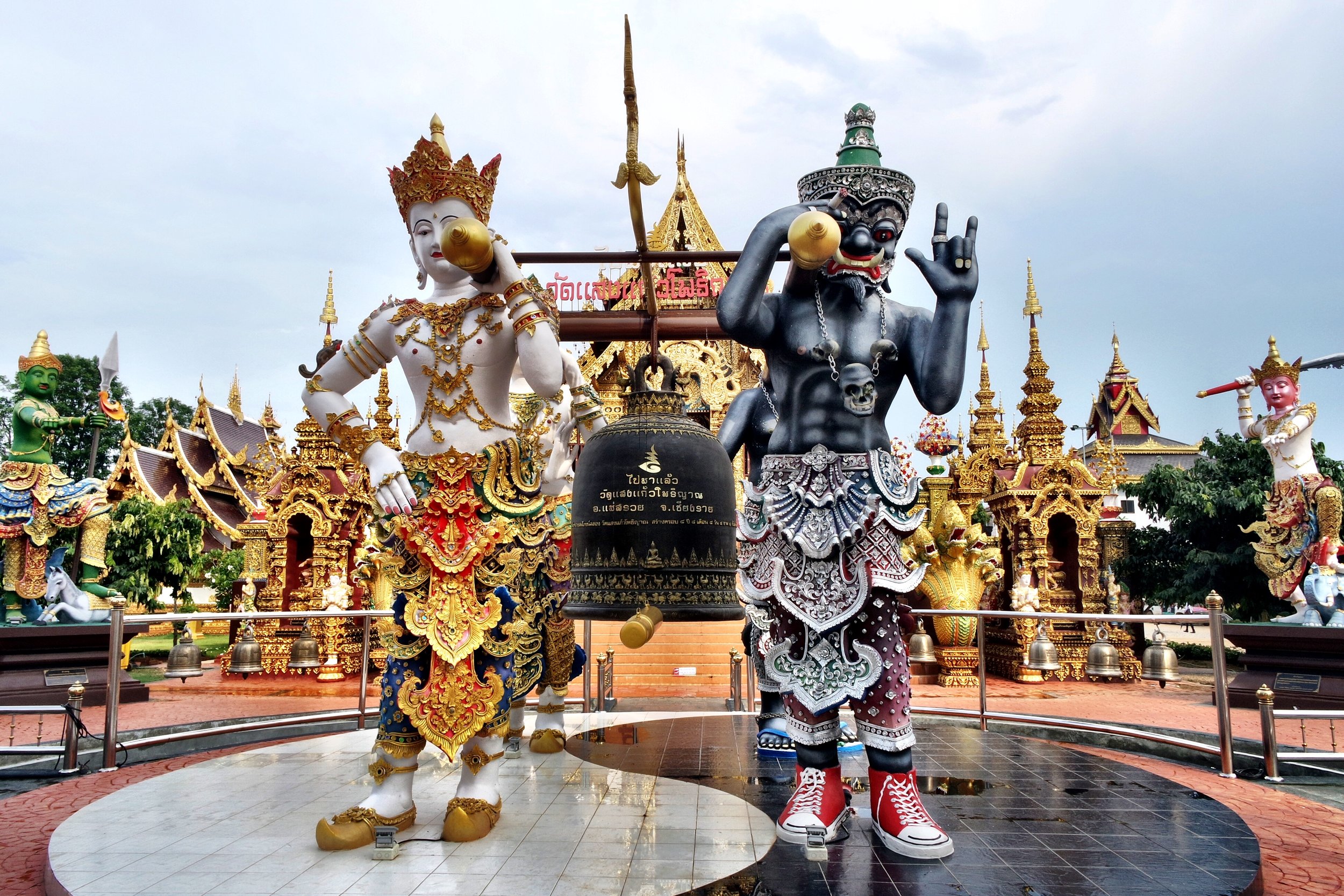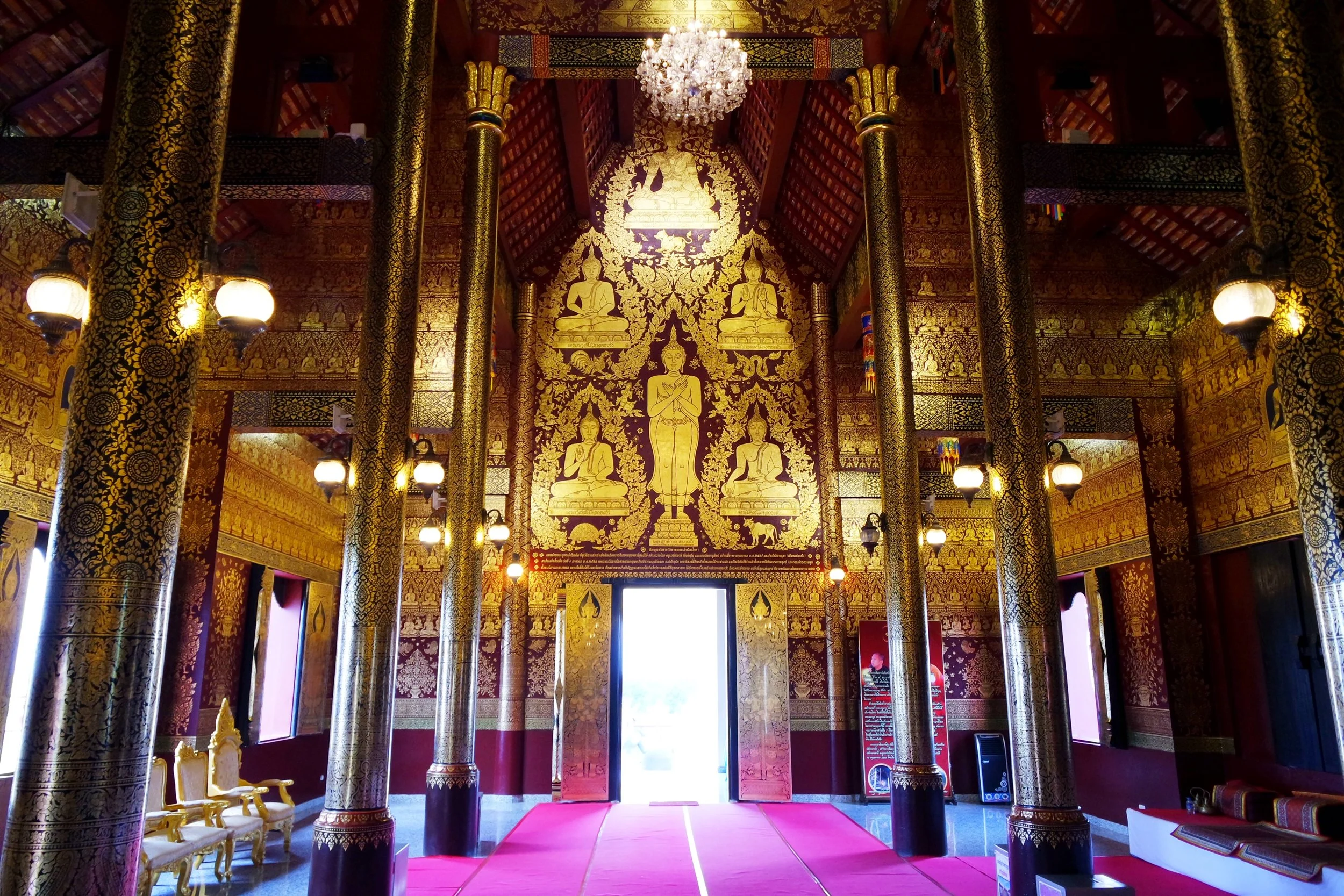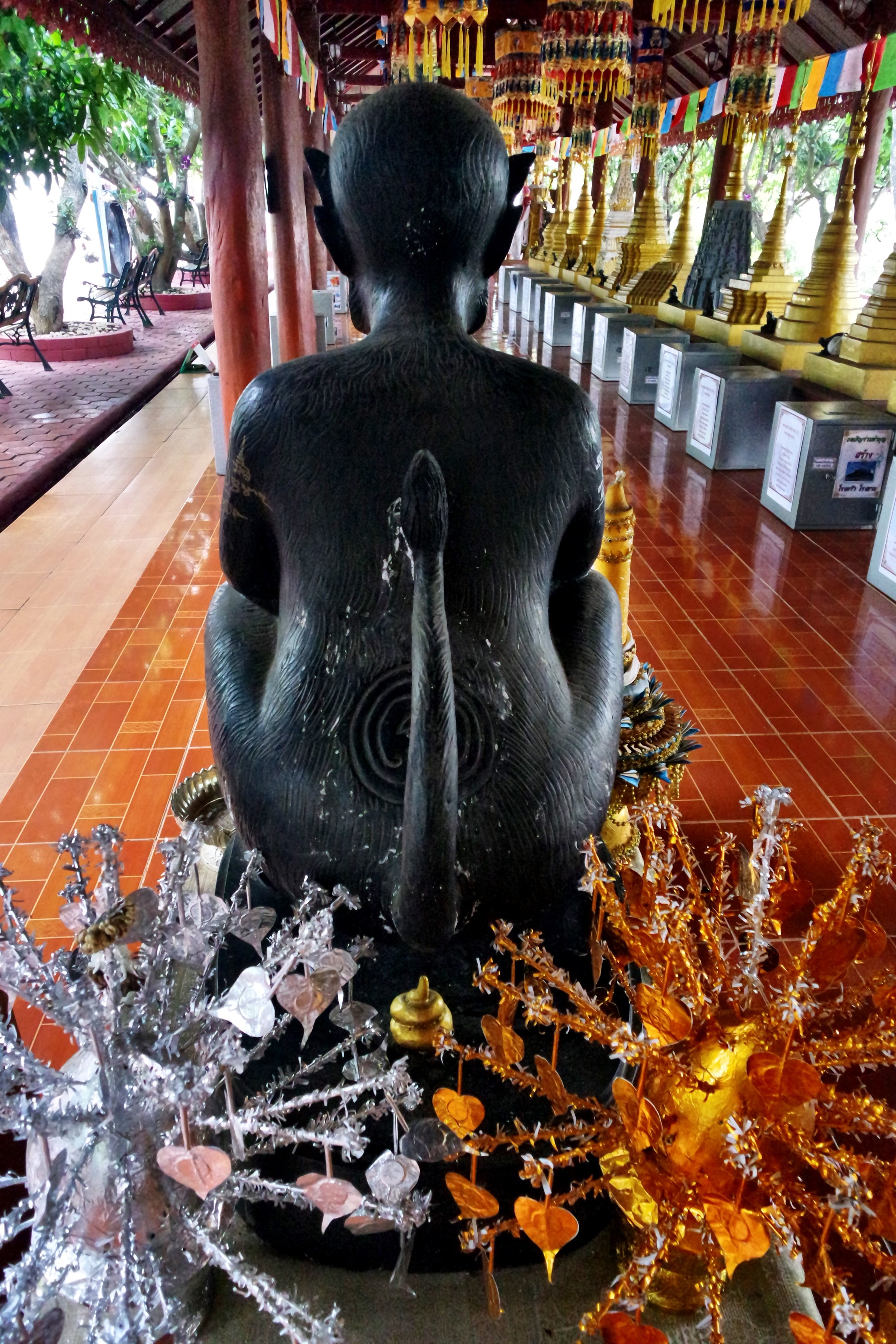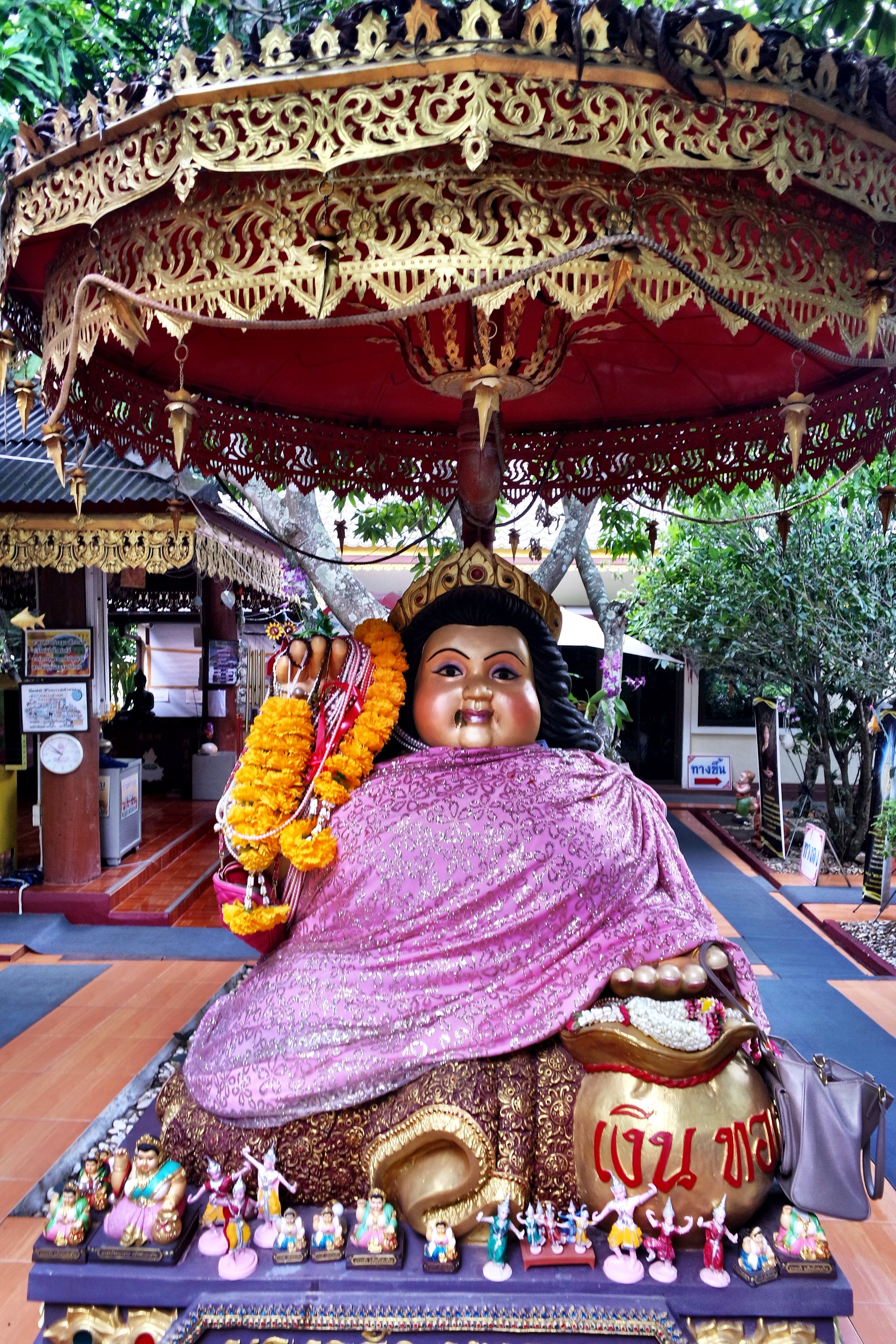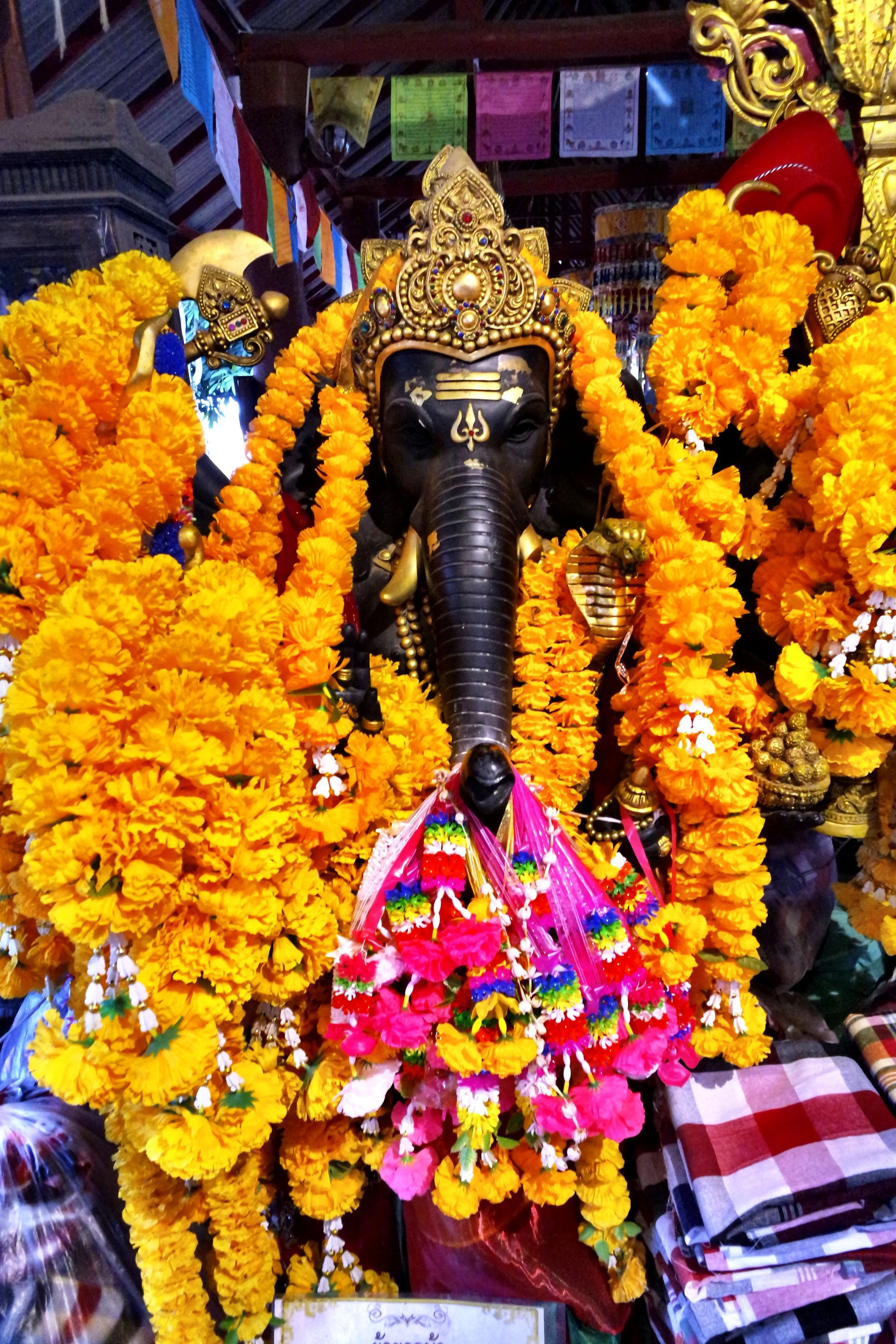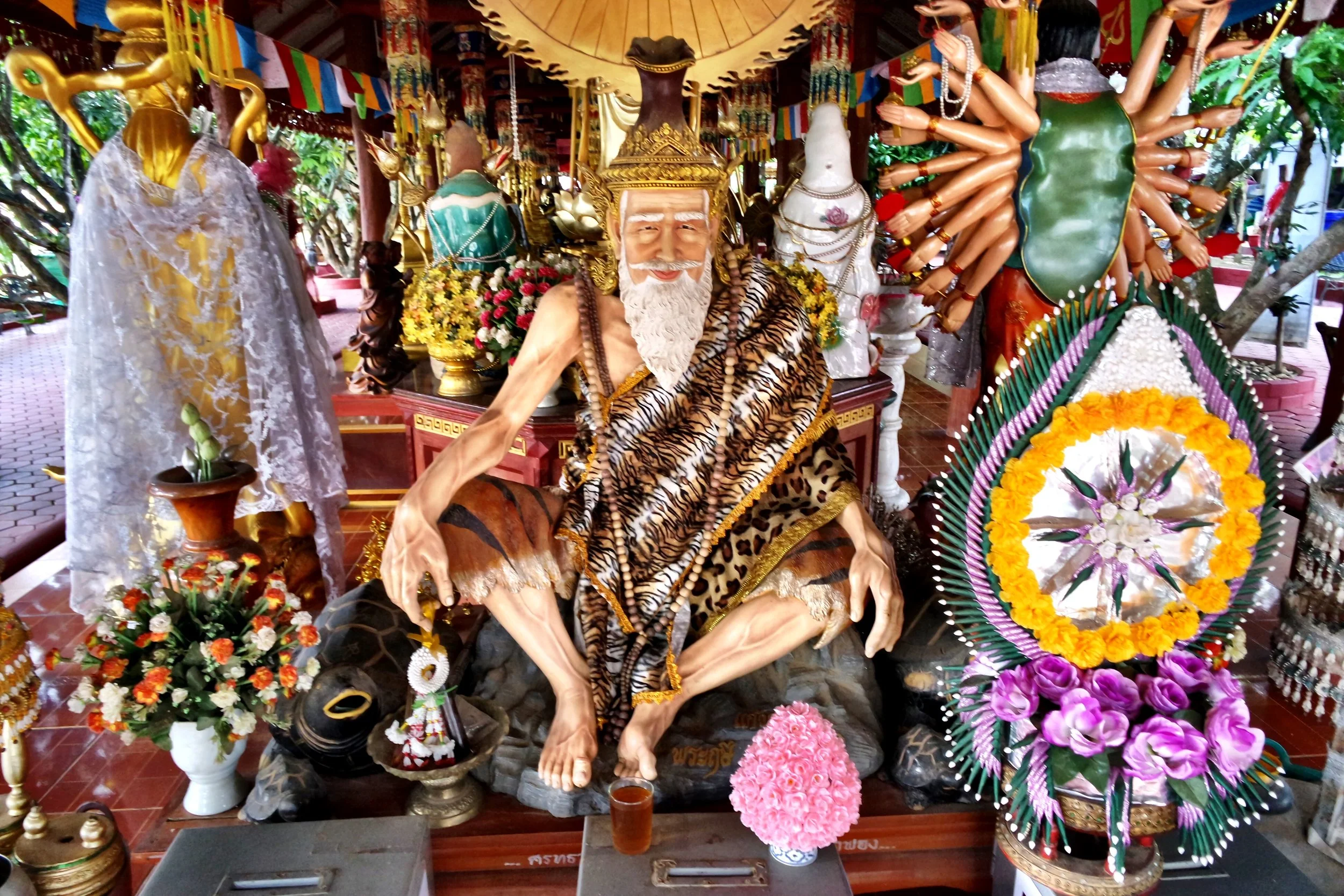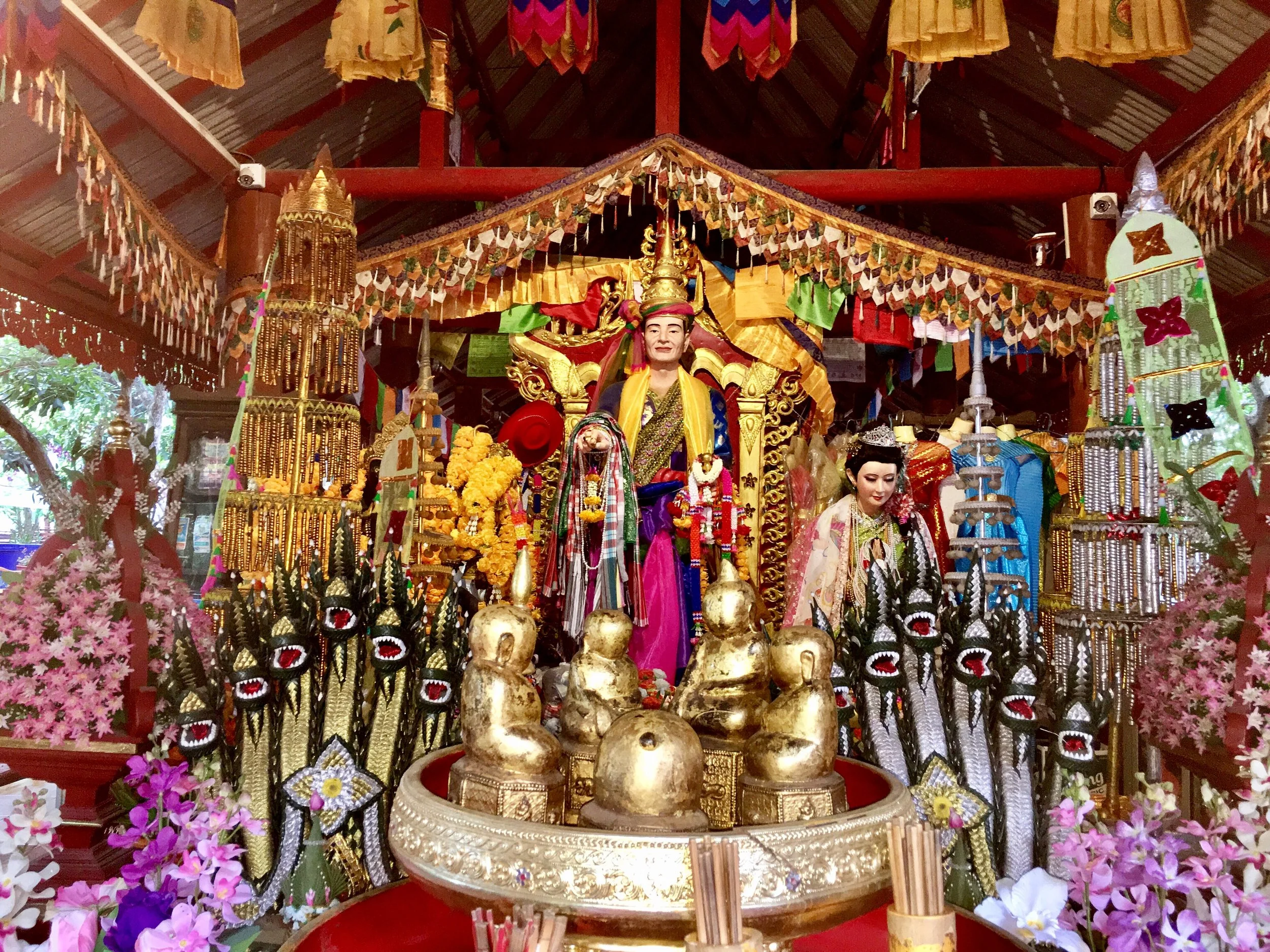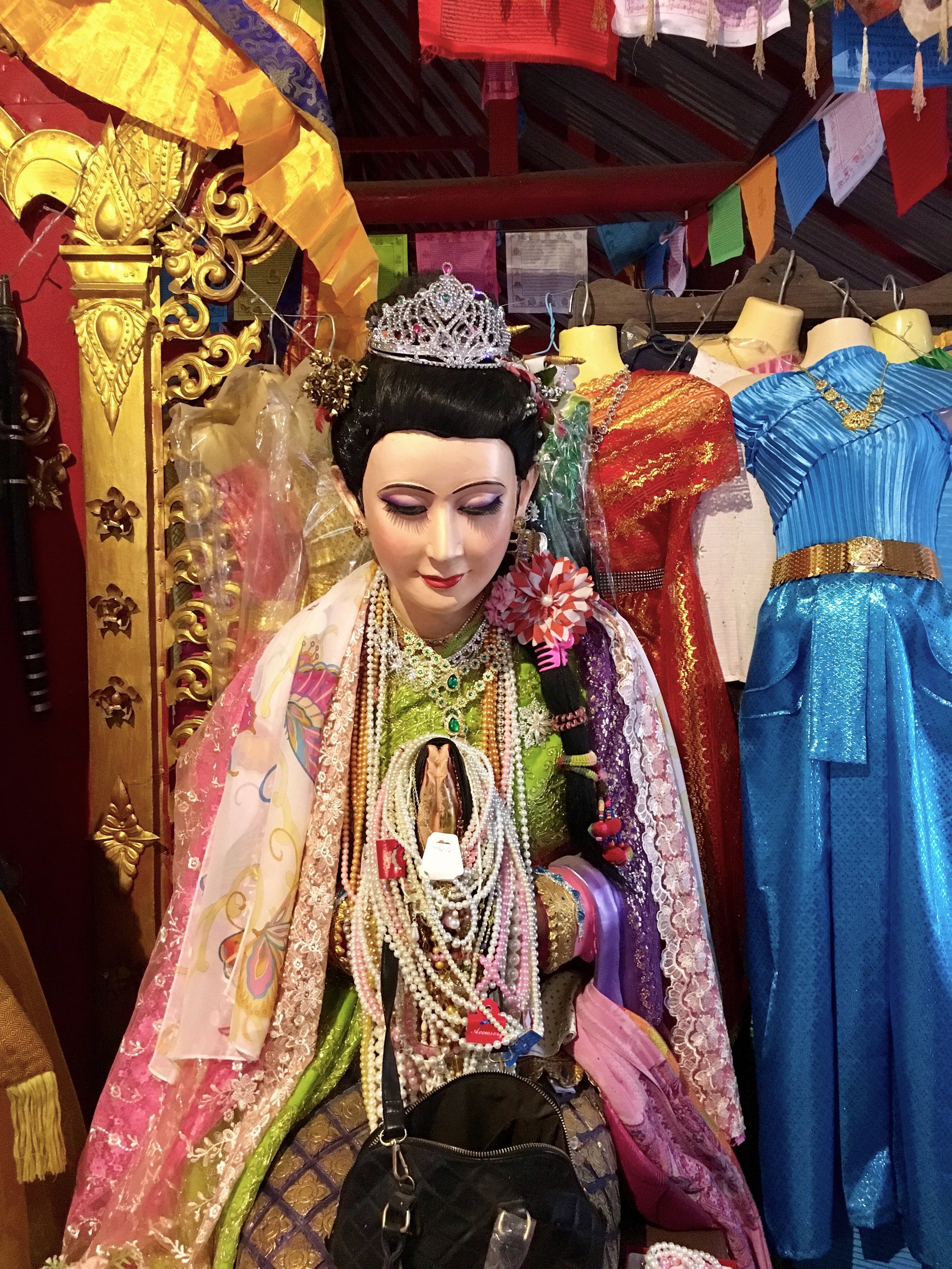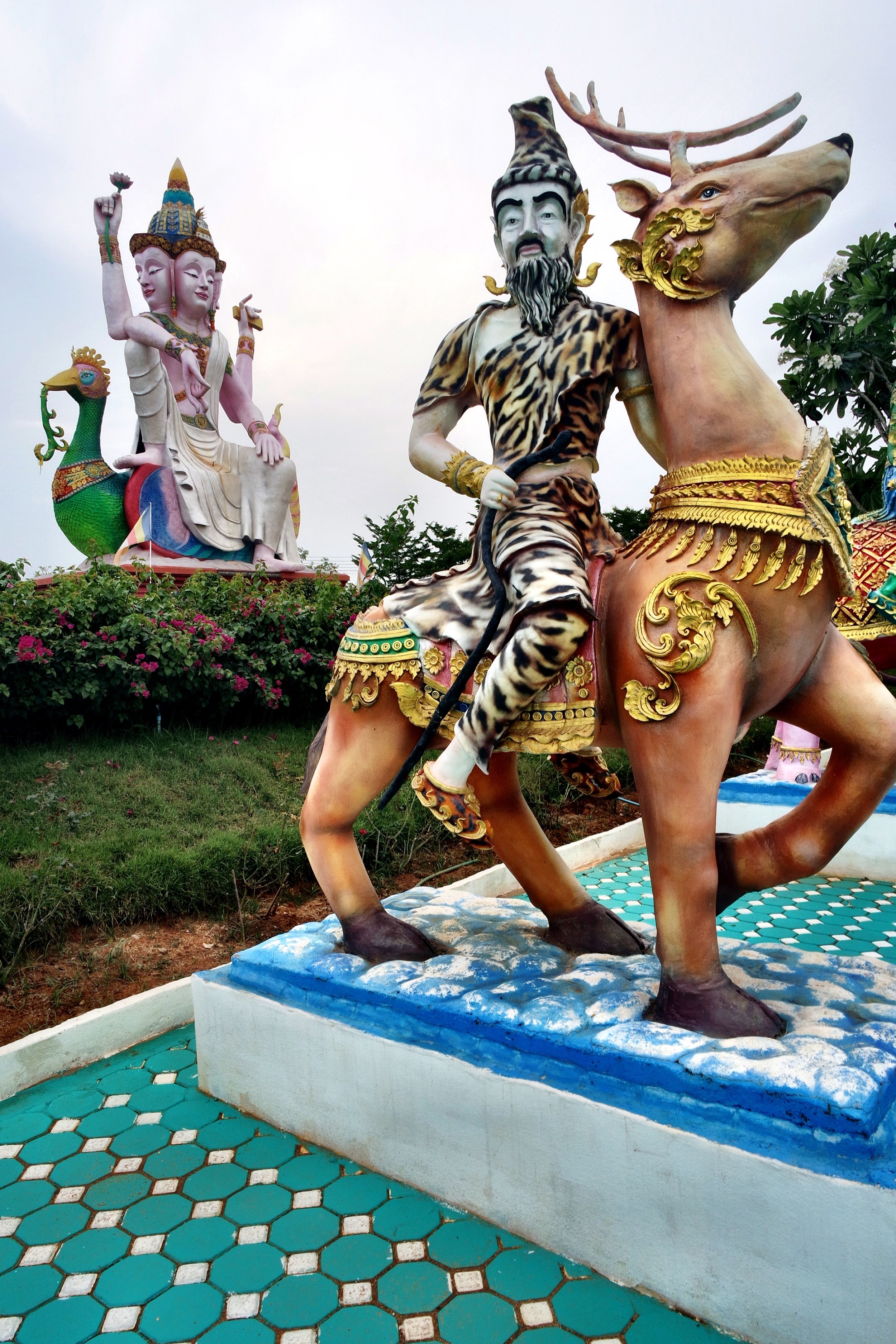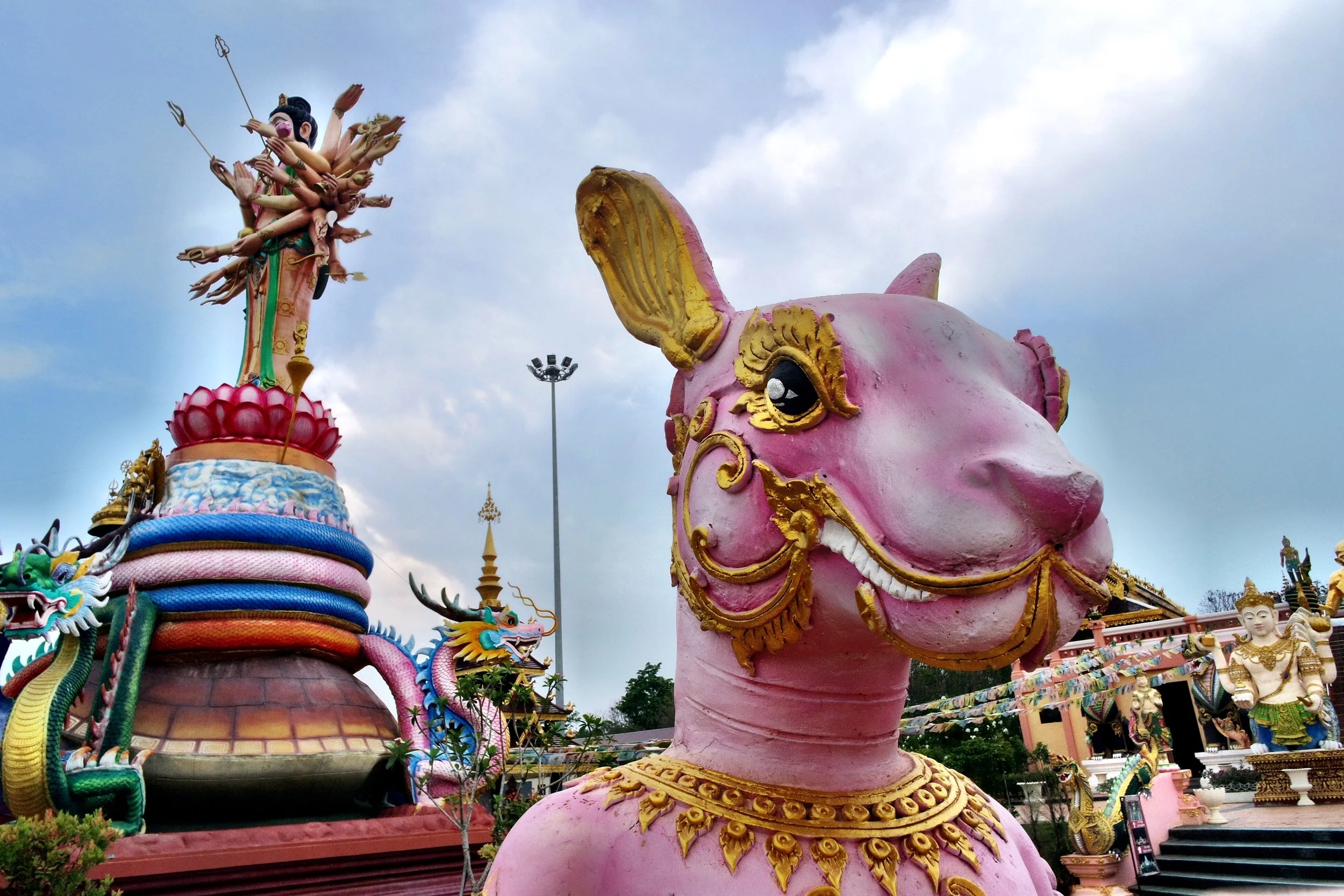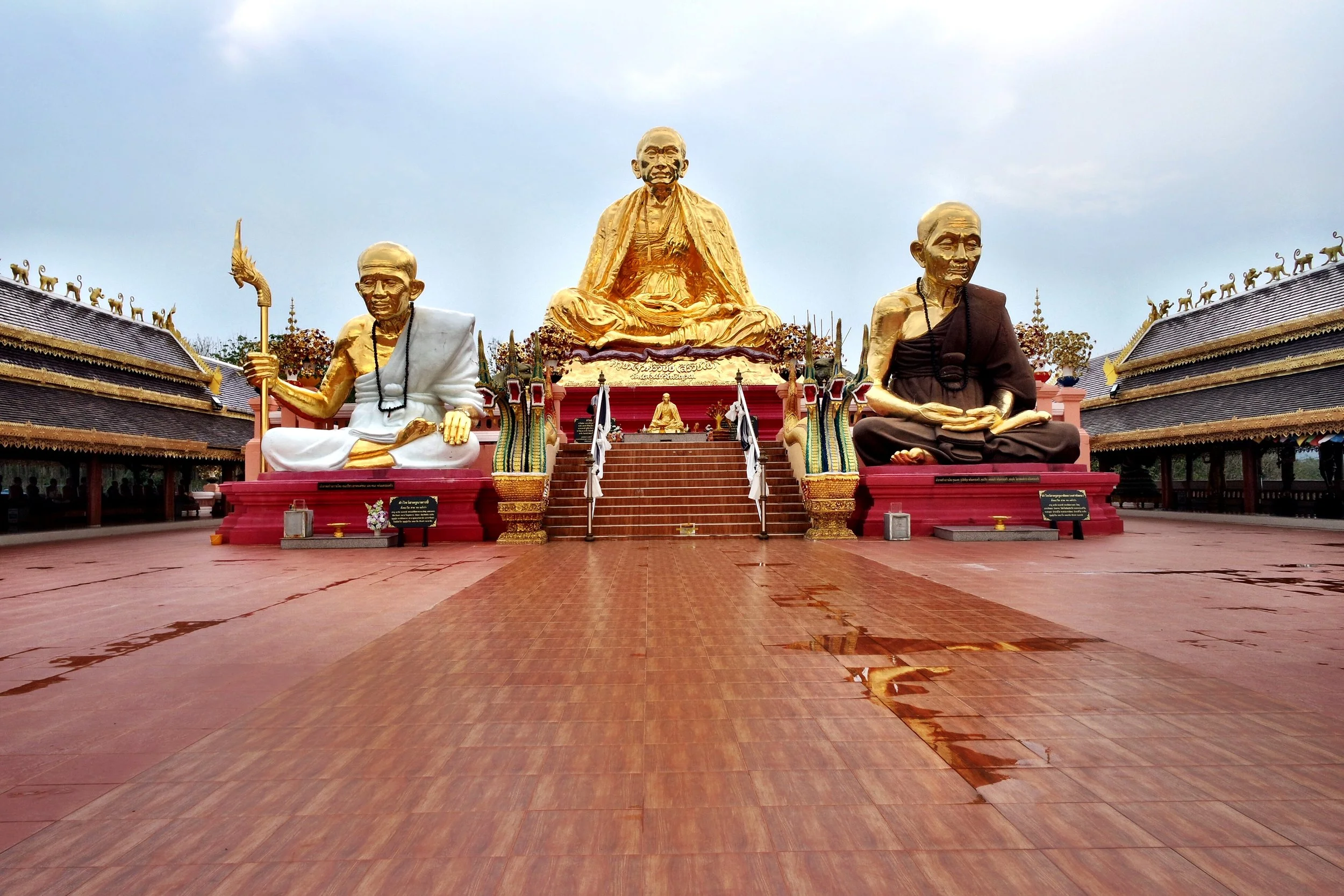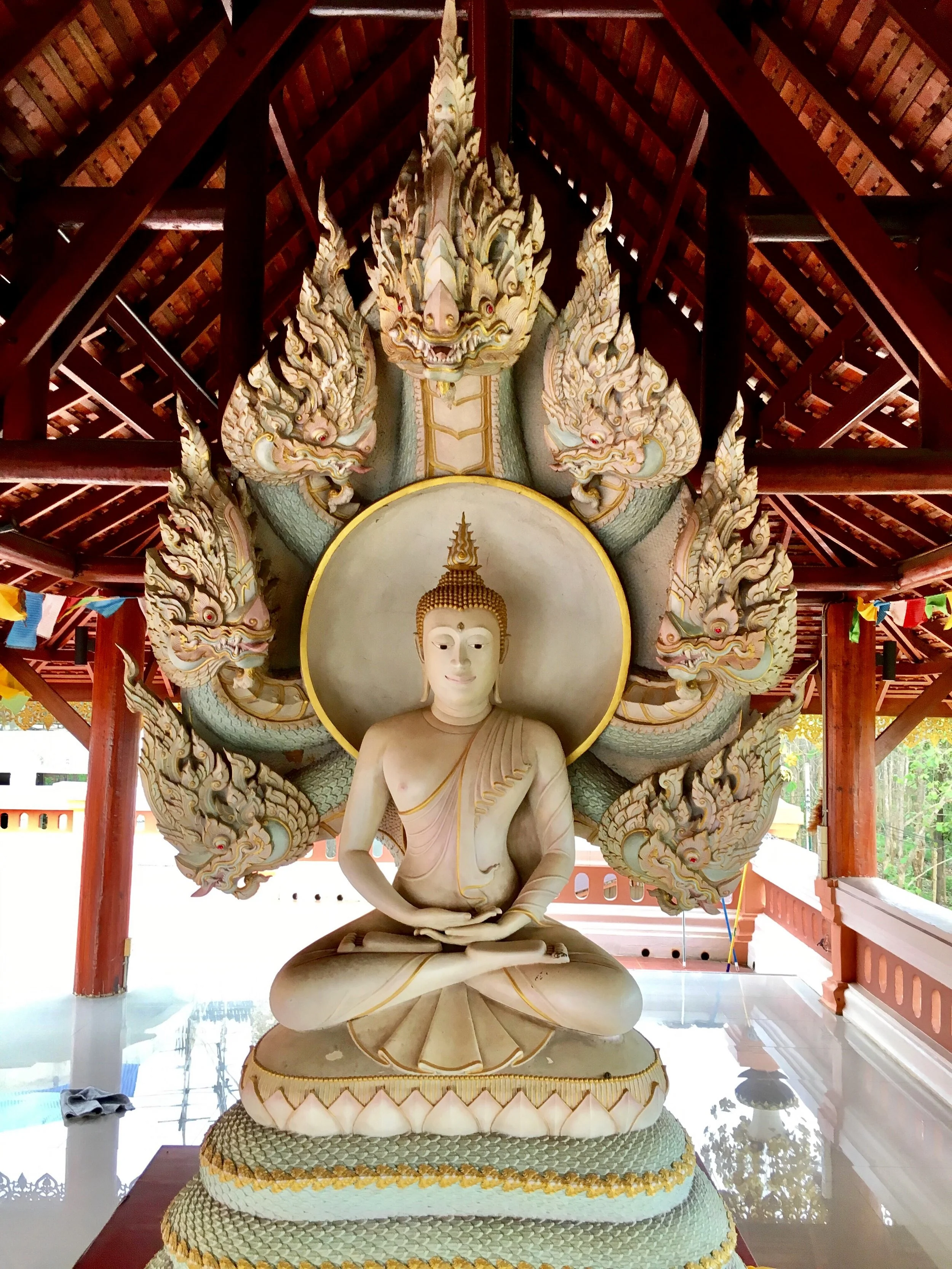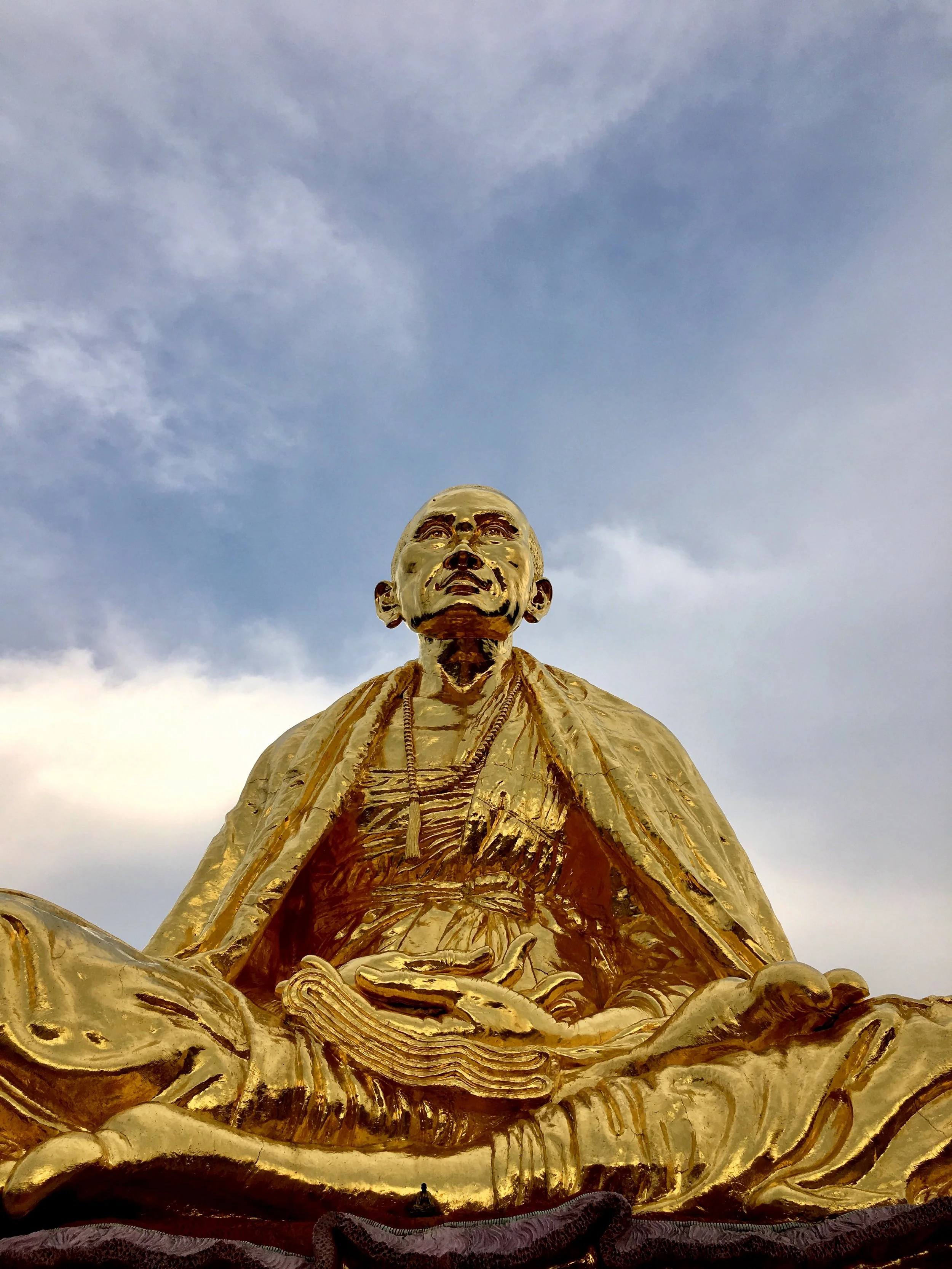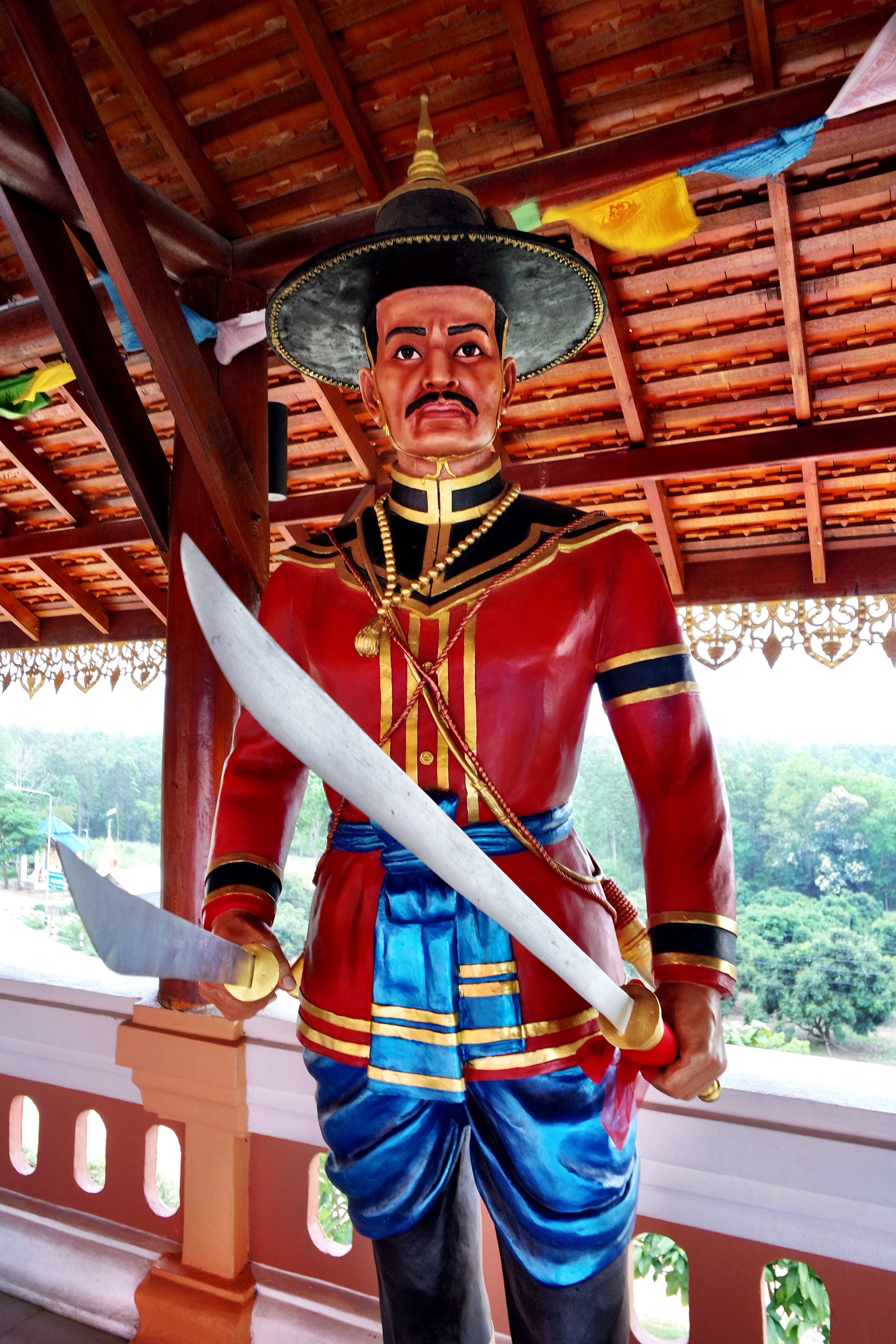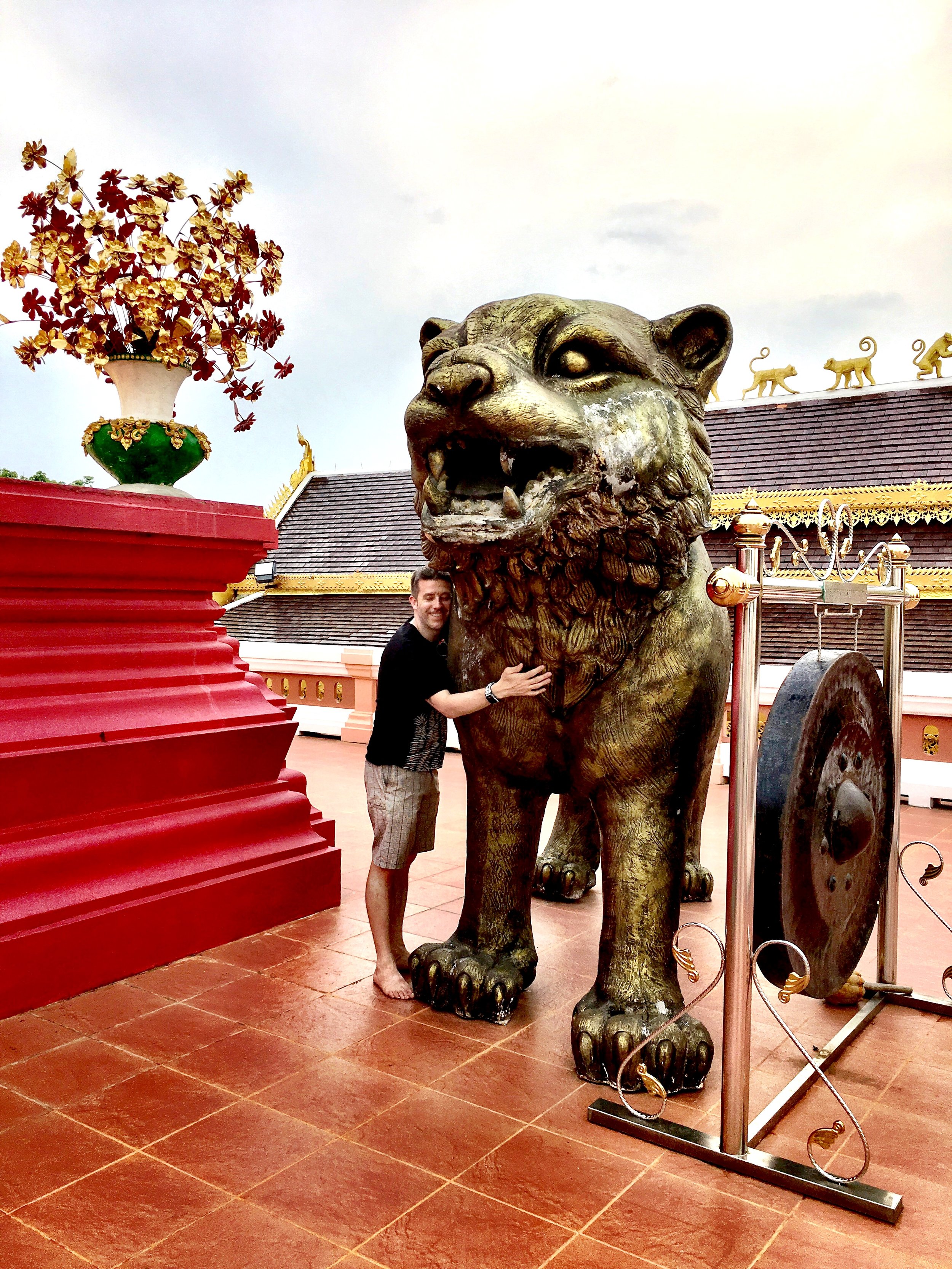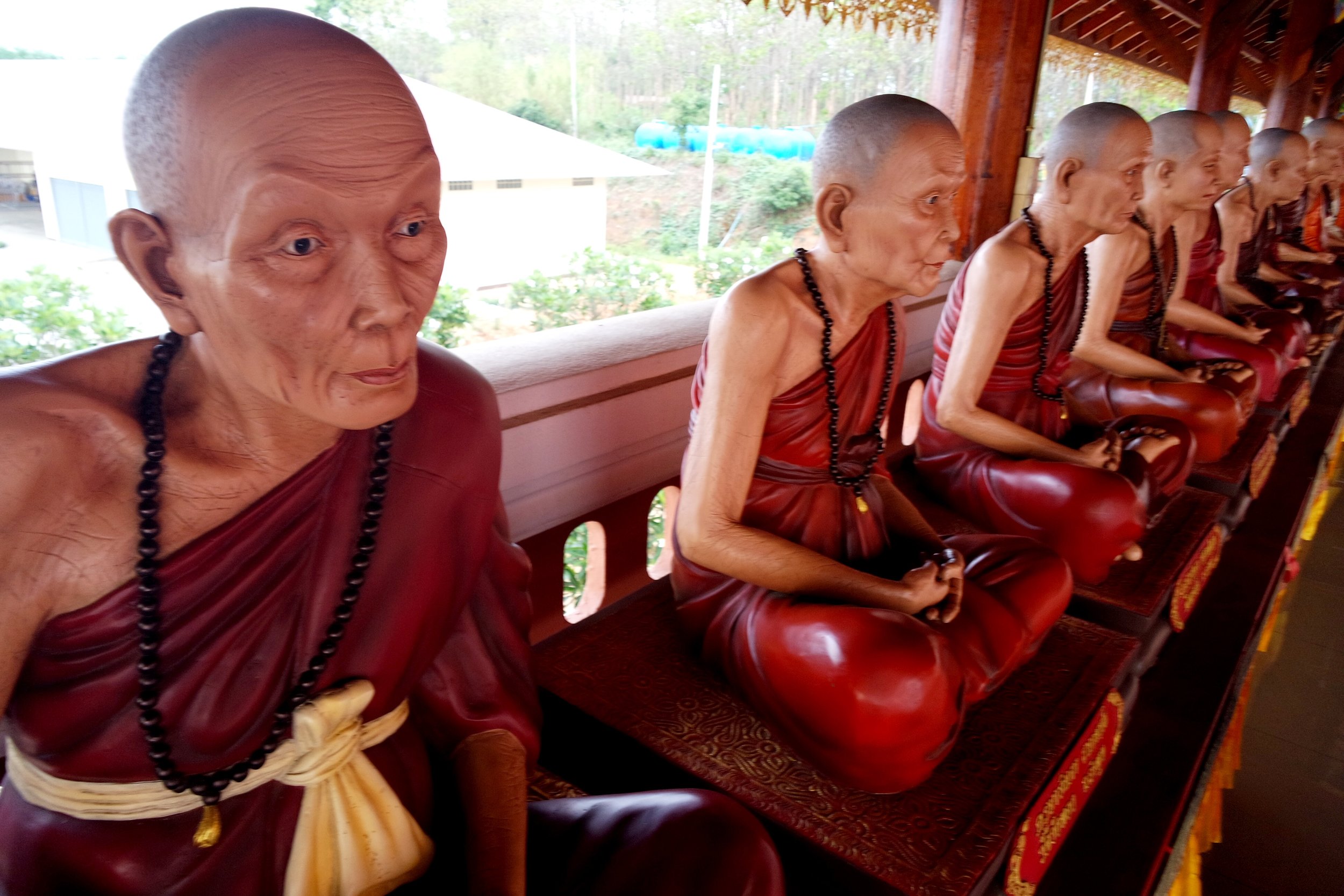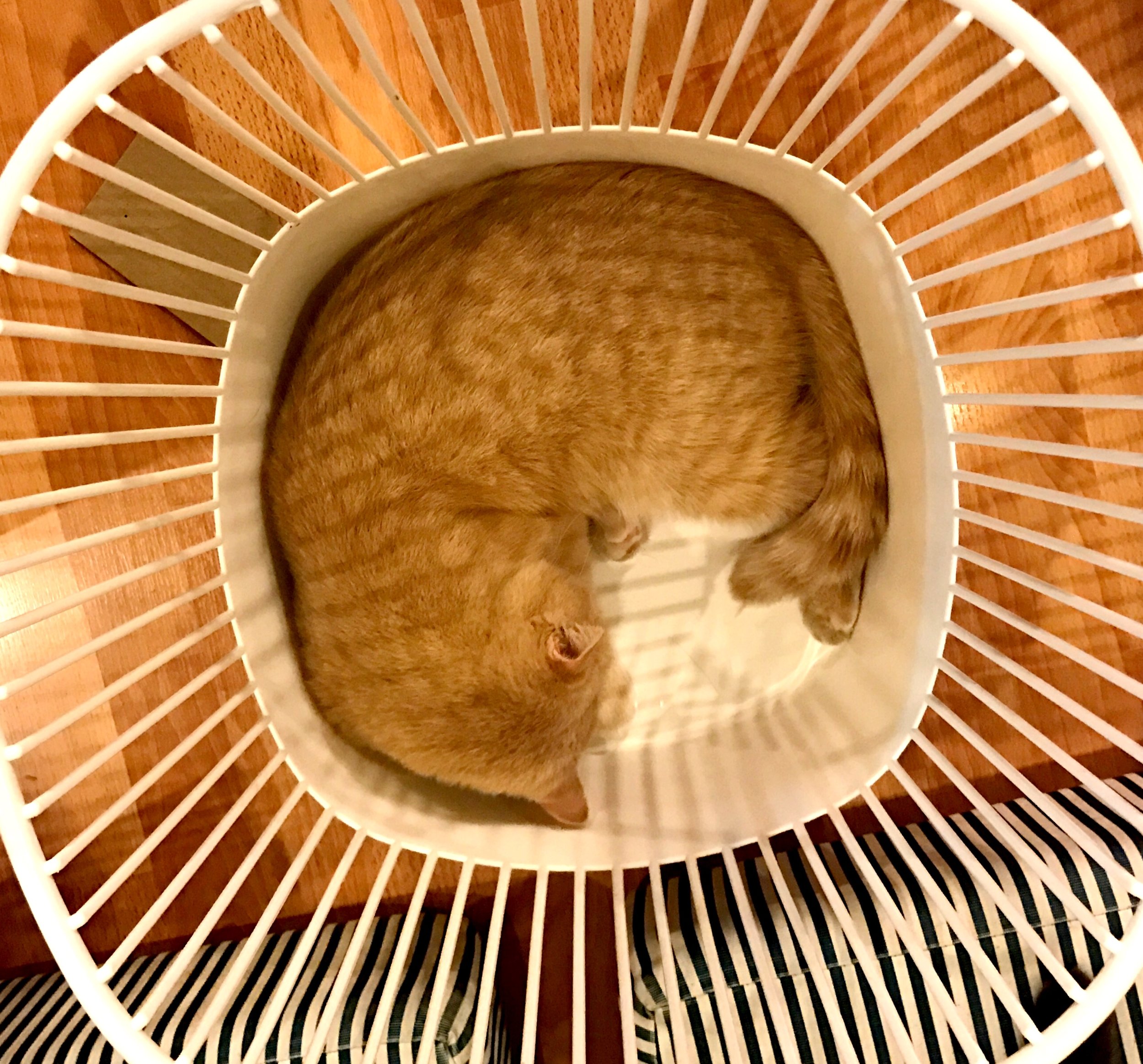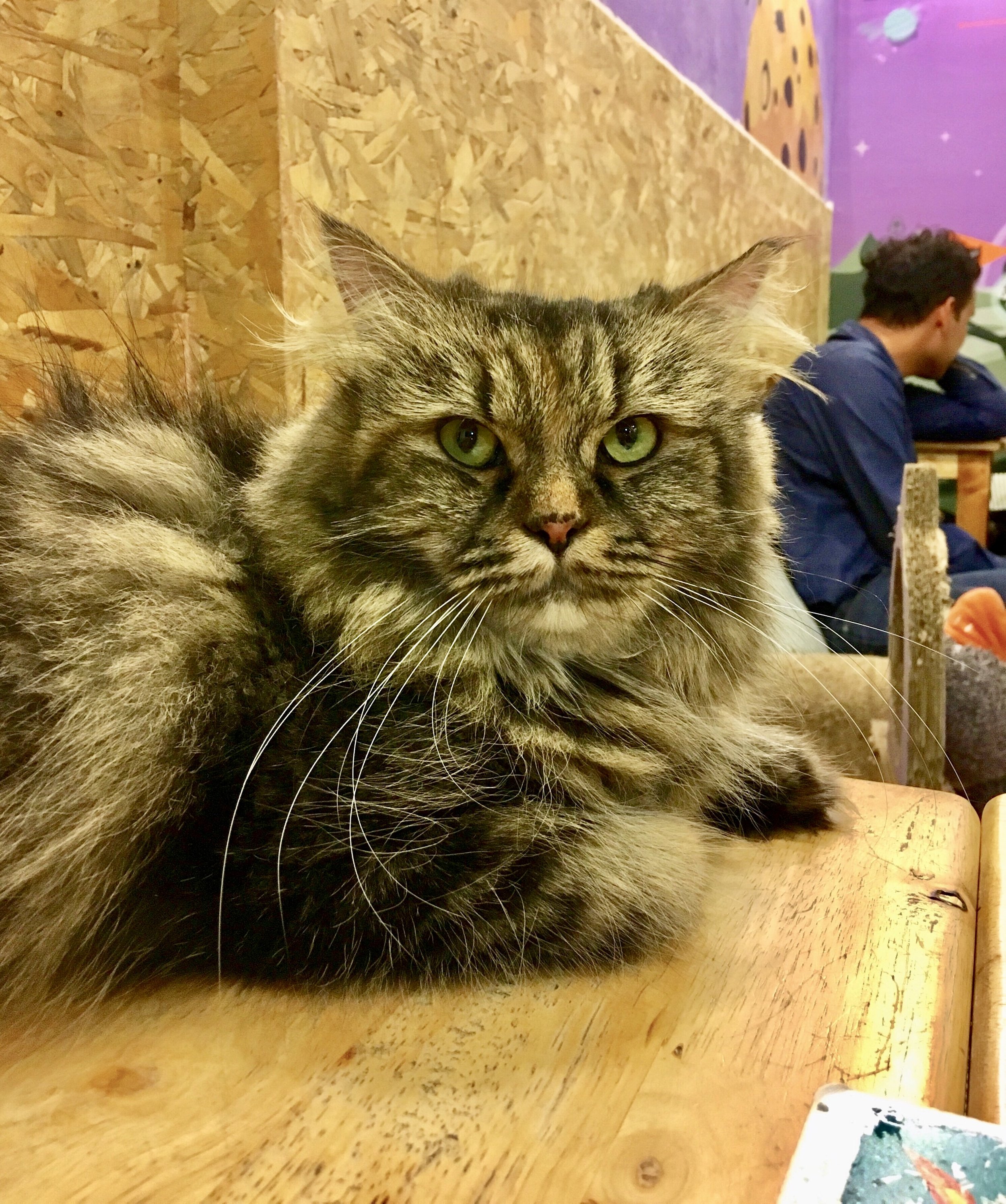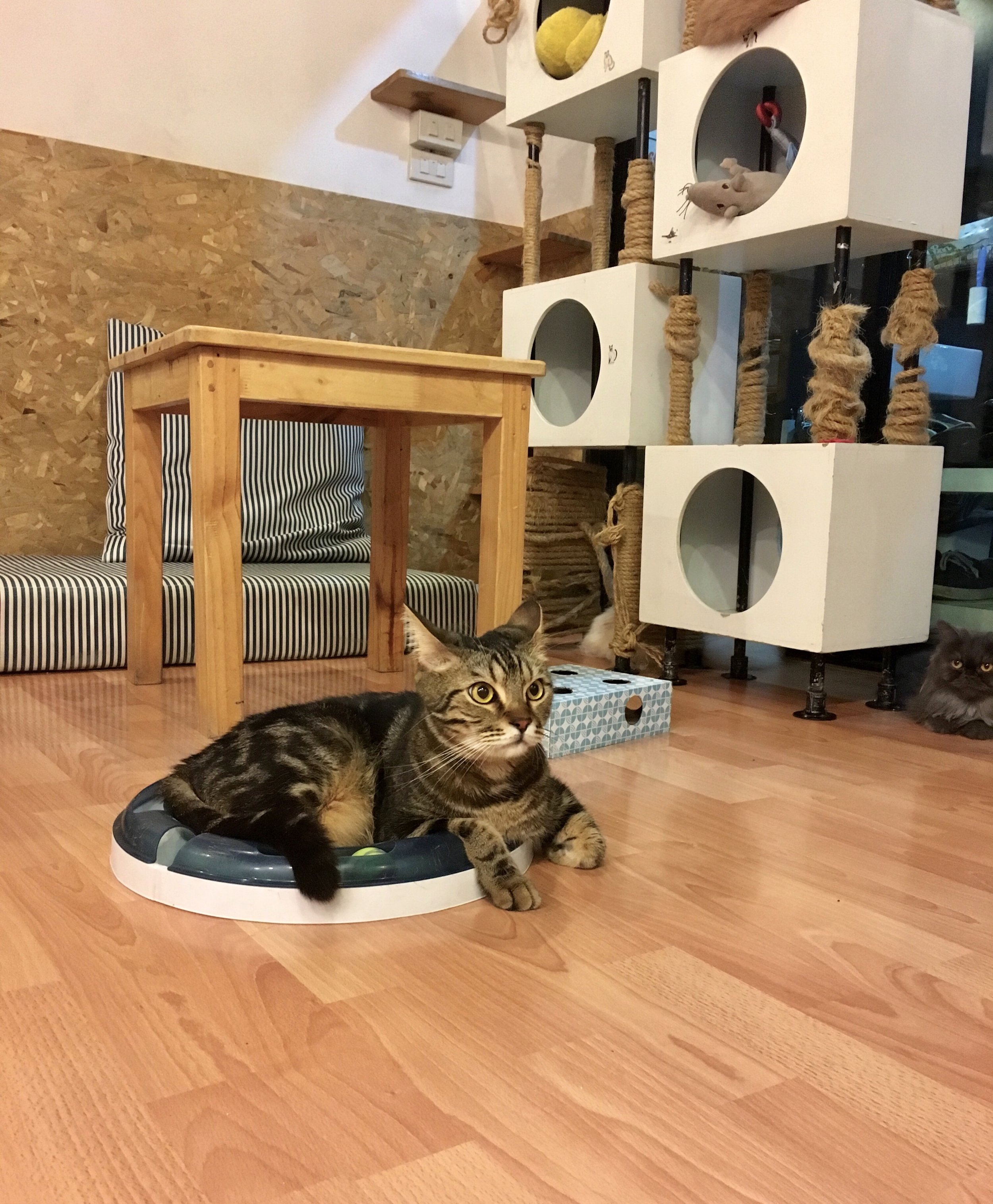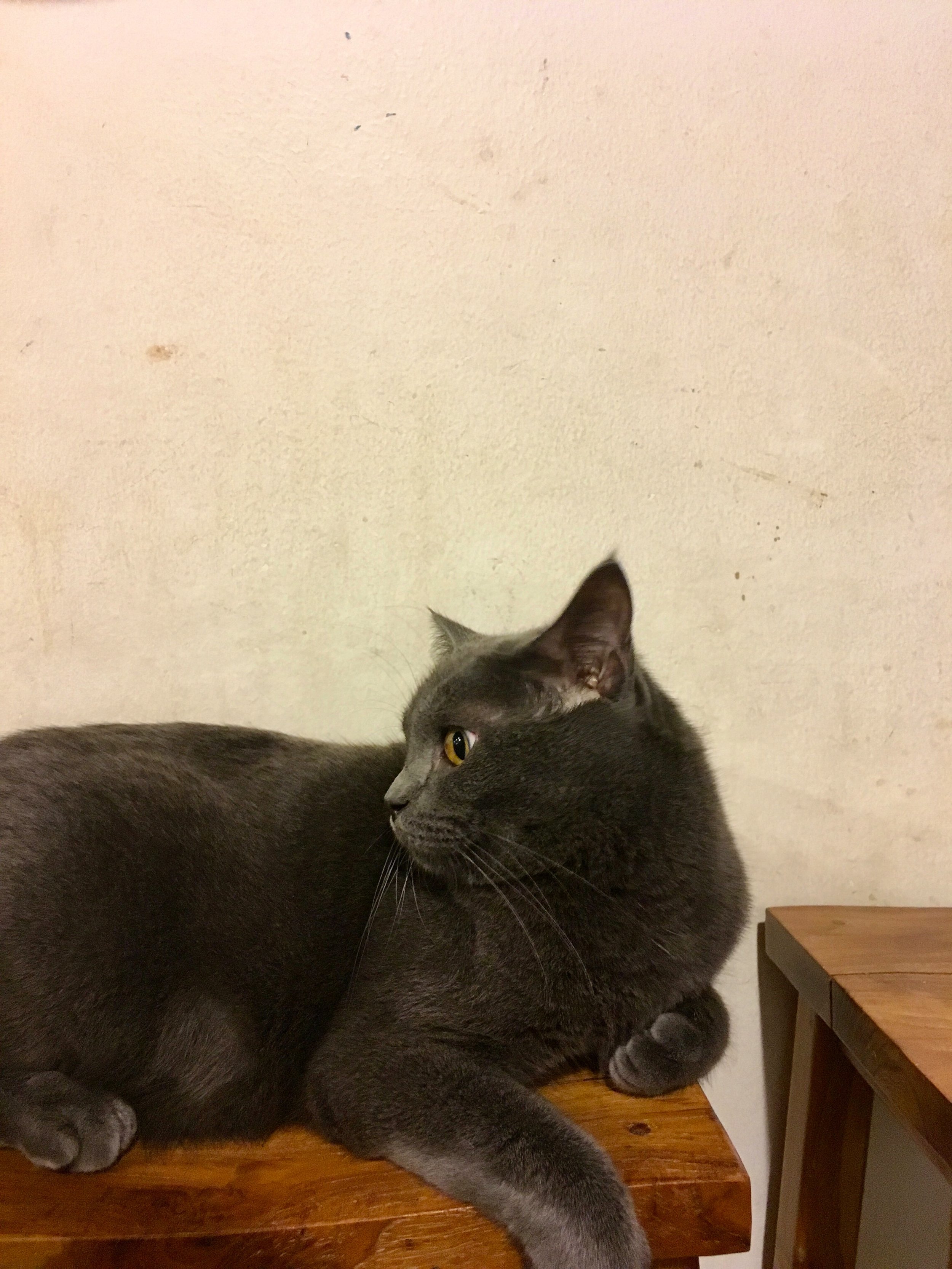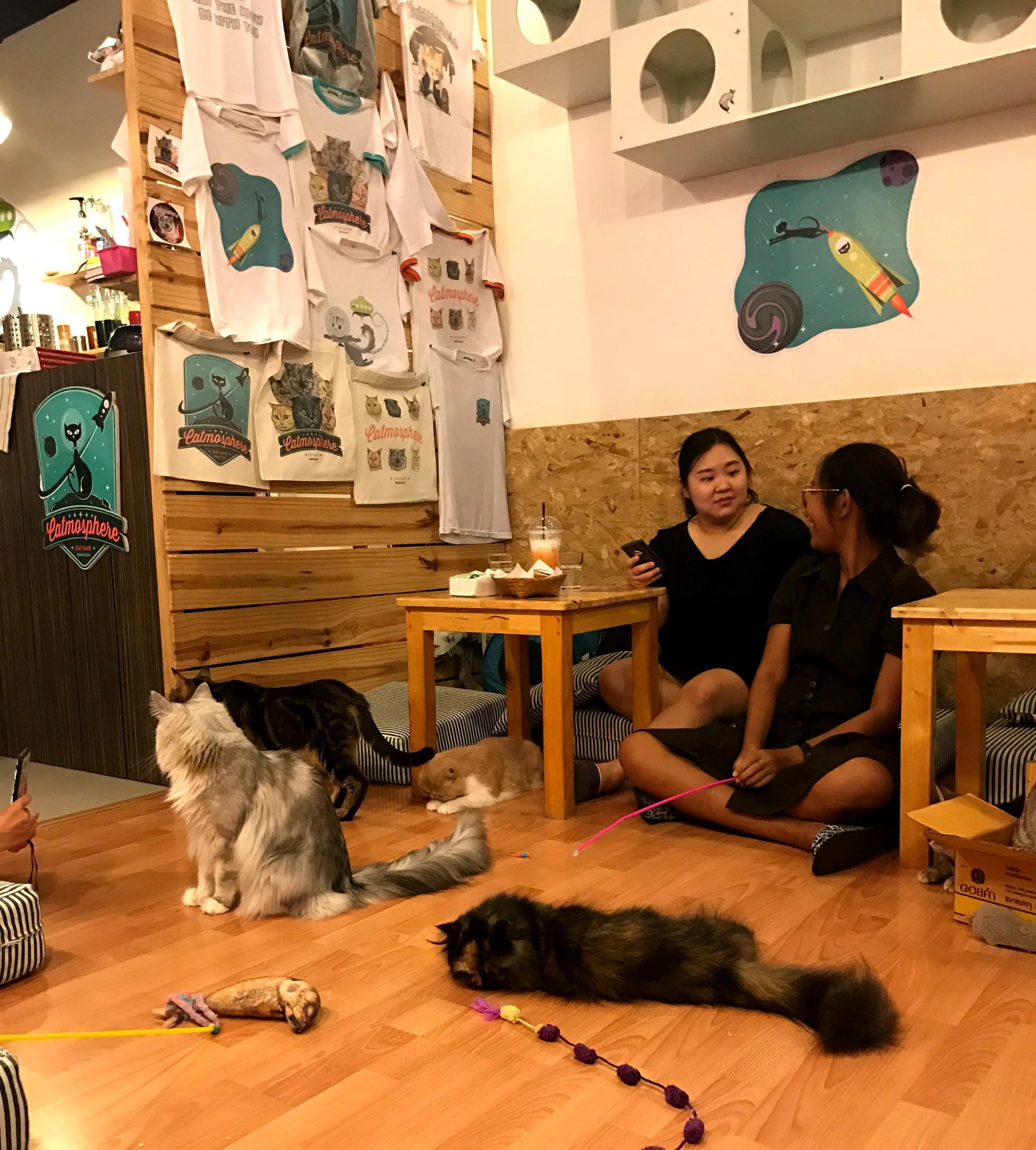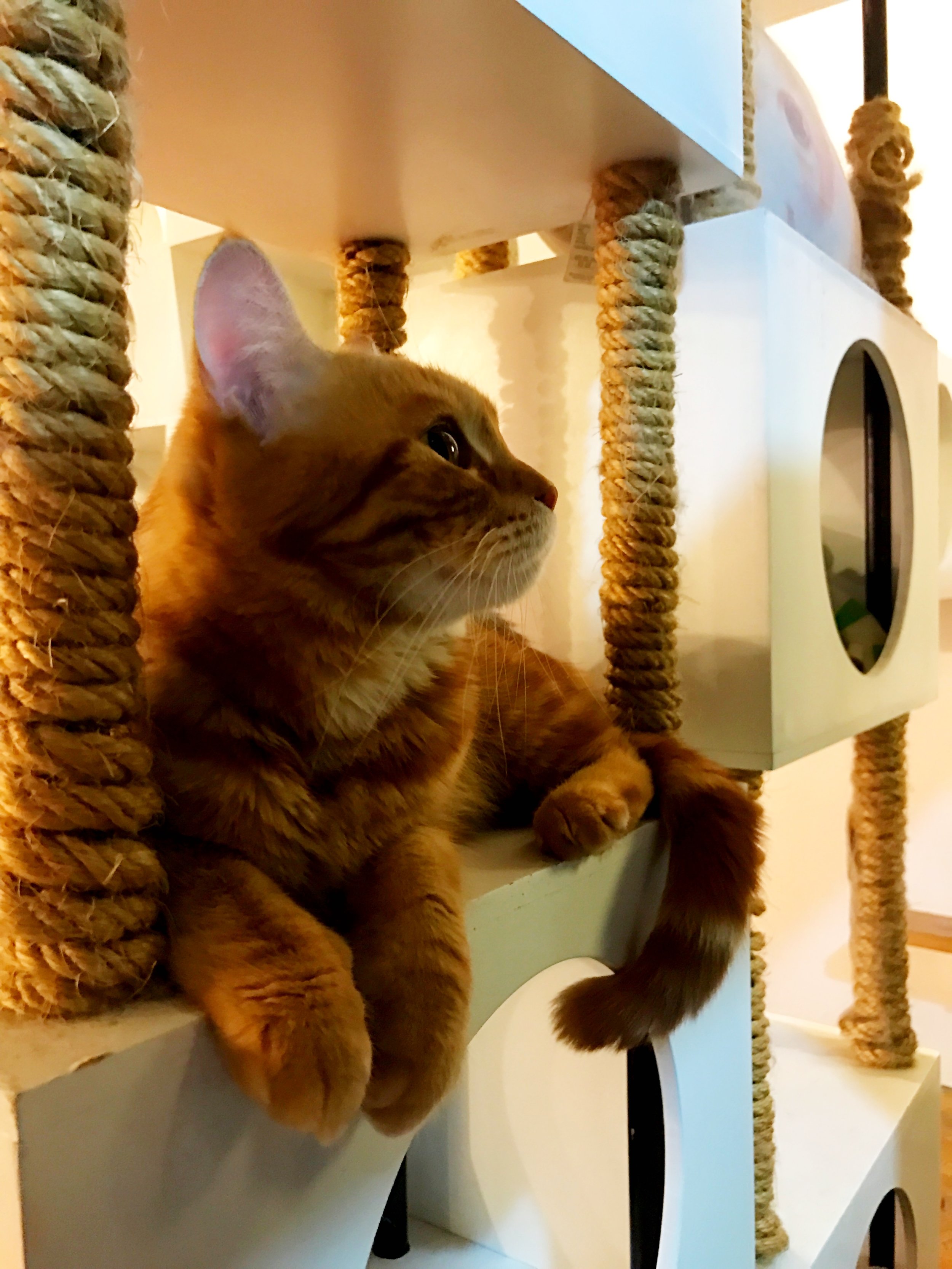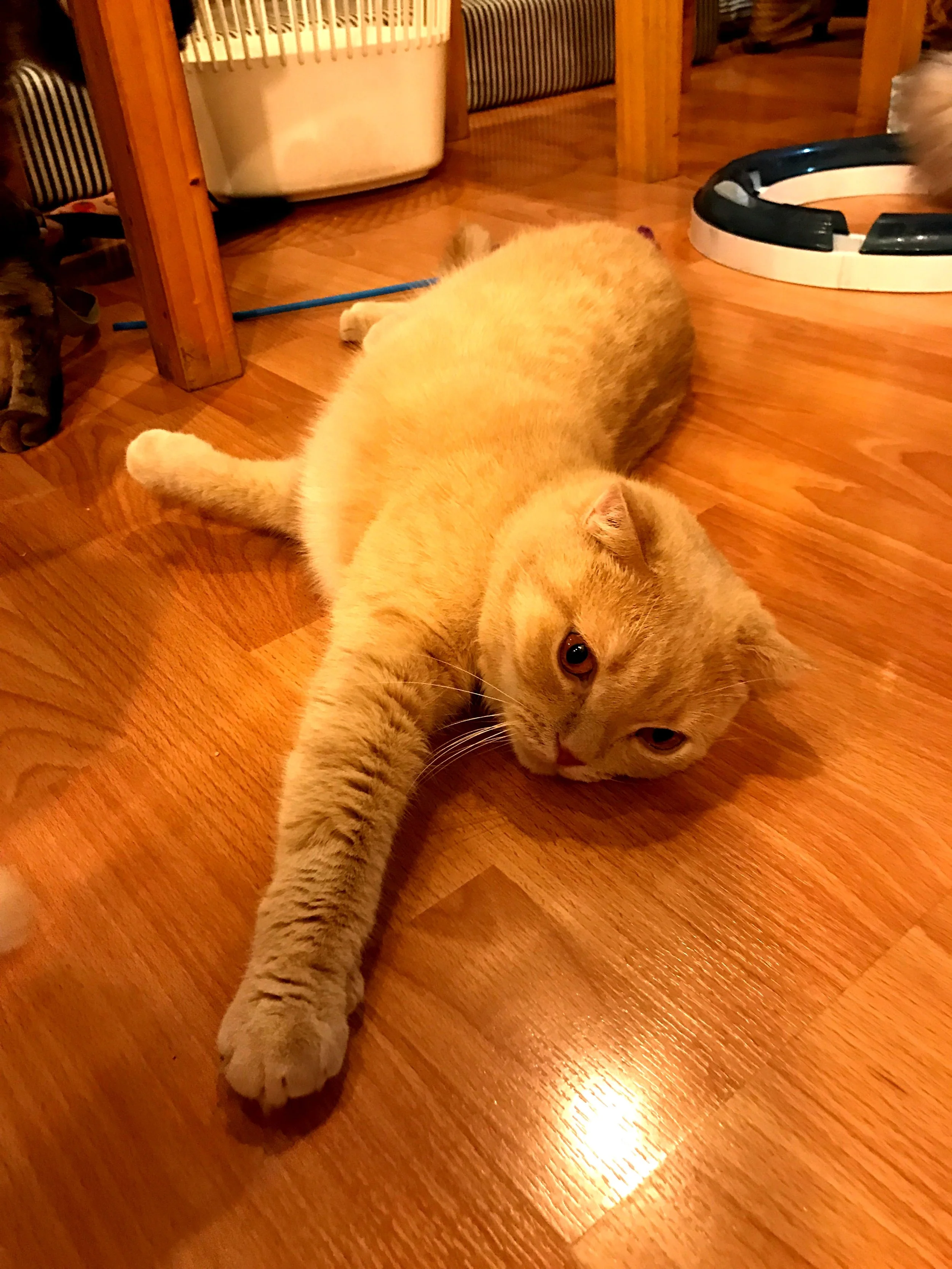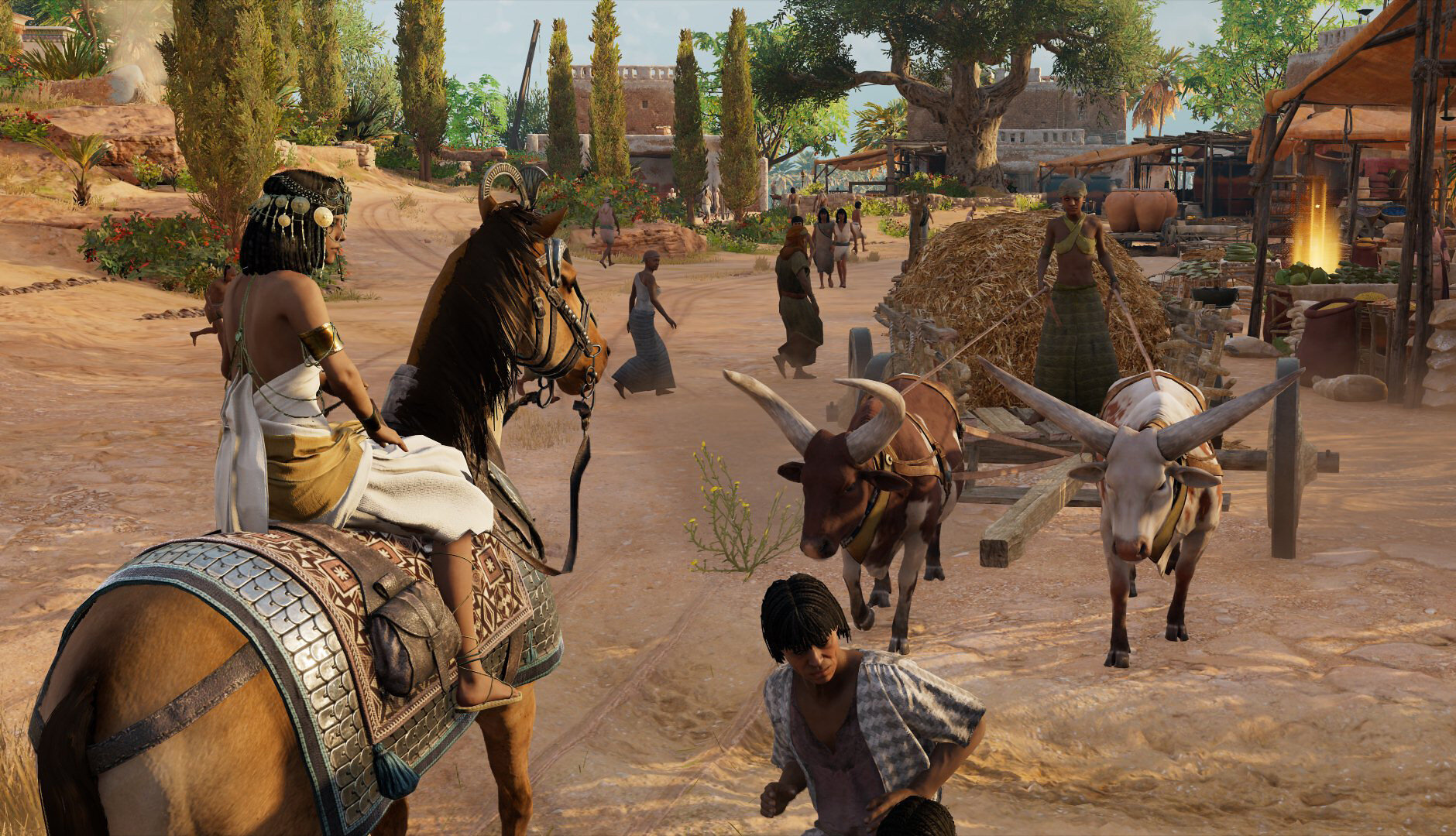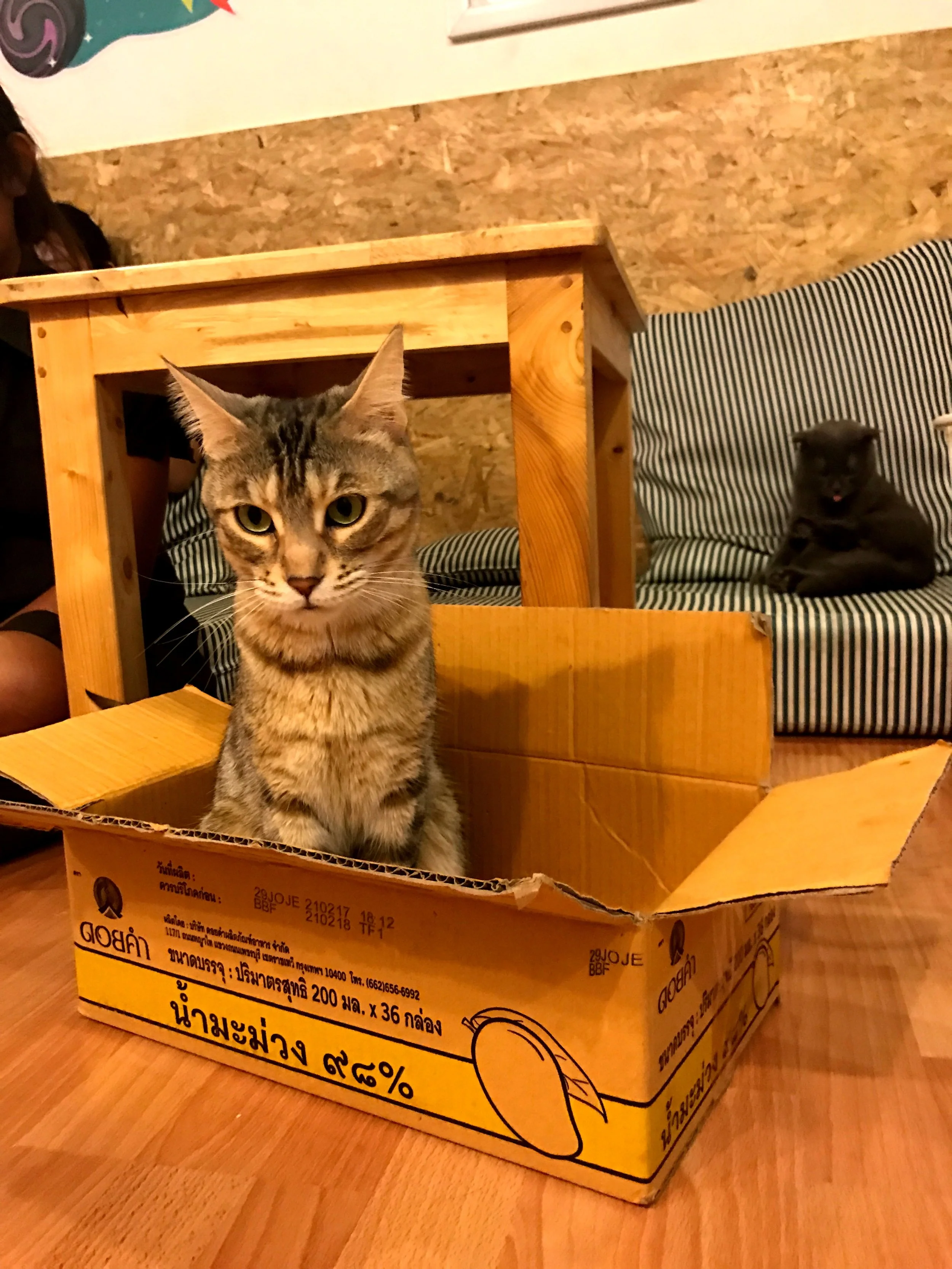How to navigate the endless stream of motorbike traffic, plus a history of the 36 Streets in Hanoi, Vietnam, which are divided up by the products they sell.
Women sitting outside on small stools at makeshift shops are a common sight in the Hanoi Old Quarter.
We trust our doctor to not only keep us healthy, but we often take his travel advice as well. When I told Dr. Slotten we were planning a week in Vietnam, he recommended we skip Ho Chi Minh City and instead fly in and out of Hanoi, with its utterly charming Old Quarter. Decision made. After all, often the best travel advice you can get is from people who have blazed the trail before you.
A gorgeous fruit market we stumbled upon
So, for us, there wasn’t any debate: We knew we wanted to stay in Hanoi’s Old Quarter, known as the Hoàn Kiếm District. We just didn’t quite know what we’d be getting into.
After the first day or so, Vanessa and Duke stopped being intimidated by the near-death experience of crossing the road — for the most part.
How to Cross the Street in Hanoi
The first thing you need to know is how insane the traffic is. The narrow, winding streets are filled with motorbikes. A never-ending stream of motorbikes. This makes something as simple as crossing the street a near-death experience.
Some vendors take their shops on the road.
As a pedestrian, you can’t wait for a break in traffic to cross the street — you’ll be waiting forever. Literally.
So here’s what you have to do: Take a deep breath and step out into traffic. Don’t focus on the fact that there are swarms of motorbikes heading in your direction. Take slow, deliberate steps. It’s like a school of fish: Somehow — thankfully! miraculously! magically! — the motorbikes will swerve around you as you make your way across the street.
I have a theory that you’d do just as well (or perhaps even be better off) closing your eyes, though I never tried it.
Motorbikes piled high with goods and passengers are a common sight in Vietnam.
We spent a few days in Hanoi and didn’t end up with any sort of injury from these constant death-defying street crossings (though our travel buddy, Vanessa, did get her heel clipped a couple of times).
The Hanoi version of a shoe store.
The 36 Streets: A History of the Old Quarter in Hanoi
There are more modern sections of the capital city of Hanoi, with wider streets that can be even more alarming to cross since you have to vie with cars barreling toward you across multiple lanes.
That’s bananas! Merchandise fills the sidewalks throughout the Old Quarter.
But no trip to Hanoi is complete without an exploration of the Old Quarter. The area first became known as a place of craftsmanship and commerce during the Ly Dynasty (1010-1225), when Emperor Ly Thai To moved his capital to Hanoi. Artisans followed the imperial entourage to the new city and set up shop in the shadow of the new palace, forming guilds to protect their best interests. In fact, what's now the Old Quarter was enclosed behind thick rampart walls with massive wooden gates until well into the 19th century.
Songbirds in cages were music to our ears.
The winding streets are densely packed with long, narrow shops — a ploy to avoid high taxes — with merchandise spilling out onto the sidewalk. Hanoi’s Old Quarter is known as the 36 Streets, though in truth these were more like small neighborhoods, often housing people from the same village who had learned a traditional trade. Each neighborhood’s name began with the word “Hang,” which can be defined as “shop,” and had a temple or communal house known as a dinh dedicated to its patron spirit.
Wally and Duke called this stretch Tin Pan Alley.
Navigating these twisting streets can be quite a challenge. I typically have a better sense of direction than Duke, but I was perpetually lost in the Old Quarter. Somehow Duke was able to keep landmarks in his head. We’d be wandering for a while, and then he’d say, “If we turn right at that shop with all the gravestone markers, it’s a straight shot to the hotel.” And I would just shake my head in amazement and be glad that one of us was able to find our way back.
Colorful fruit on sale — some types we hadn’t seen before
I spent quite a bit of time trying to discover a list of the original 36 Streets, without much luck. Then I learned that the 36 might be an abstract concept. In Eastern philosophy, the number nine represents the concept of abundance. Multiply that by the four cardinal directions, and you get 36.
The currency of Vietnam is actually the dong — which always made Wally and Duke giggle when they asked, “How many dongs is that?”
I know why the caged bird sings.
The fish market was filled with blood and guts.
Some of the streets are still dedicated to their original goods, though most have adapted to more modern products as the centuries have passed by. And the winding streets are now further subdivided so that there are currently 76.
Before we knew what was happening, a woman had the hat on Duke’s head and was positioning the pole on his shoulder. So, we ran with it, took a picture and gave her some money.
The narrow buildings lean against each other, looking like they’re about to topple over like dominos.
Unable to find a trustworthy list of the 36 Streets, I’ve cobbled this one together from a few sources. Don’t view it as the authoritative record — but here are some of the guilds, featuring the area’s name, what it originally sold, and where possible, what it now offers:
Hang Bac: Silver — now jewelry
Hang Bat: Glazed terracotta ware
Hang Be: Rafts
Hang Bo: Bamboo baskets — now haberdashery (small items for sewing, including buttons, zippers and ribbons)
Hang Bong: Cotton products, such as blankets and pillows
Hang Buom: Sails — now imported foods, alcohol and sweets
Hang Chai: Bottles and other recycled goods
Hang Chieu: Sedge mats — now mats, rope and bamboo blinds
Hang Cot: Bamboo lattices
Hang Da: Leather
Hang Dan: Stringed instruments
Hang Dao: Fabric, including silk
Hang Dau: Oil — now shoes
Hang Dieu: Pipes — now cushions and mattresses
Hang Dong: Copper
Hang Duong: Sugar — now clothes and general goods
Hang Ga: Chicken, duck and pigeon meat
Hang Gai: Hemp goods — now silk, tailoring and souvenirs
Hang Giay: Paper and shoes
Hang Hai: Shoes
Hang Hom: Wooden chests — now glue, paint and varnish
Hang Khay: Trays
Hang Luoc: Combs
Hang Ma: Paper votive objects — now paper goods
Hang Mam: Pickled fish
Hang May: Rattan goods
Hang Muoi: Salt
Hang Non: Hats
Hang Quat: Ceremonial fans — now religious accessories
Hang Than: Charcoal
Hang Thiec: Tin goods — now tin goods and mirrors
Hang Thung: Barrels
Hang Tre: Bamboo
Hang Trong: Drum skin — now bag mending and upholstery
Hang Vai : Fabric — now bamboo ladders
Hang Voi: Limes
What kind of person will this little tyke grow up to be? Depends on what neighborhood they grow up in!
Hanoians are said to associate a person’s character based on which area of the Old Quarter they live in. For instance, men from Hang Bac, known for its silversmiths, are polite and elegant, while women from Hang Dao, where silk is sold, are known for their charm and beauty.
While we were in Hanoi, we stayed at the Prince II Hotel in Hang Giay, known for paper and shoes. I wonder what that makes us. –Wally
Much of the Old Quarter feels a bit run-down.
Flower vendors selling their fragrant wares from the back of their bikes
We knew we were near our hotel when we passed this gravestone maker. Hang Mam, once Pickled Fish Street, now sells marble headstone markers with a picture of the deceased.
Paper lanterns are on sale along Hang Ma, or Votive Paper Street.
Wally and Duke felt like babes in Toyland.
Plastic bags stuffed with stuffed animals — some of which just might end up at a carnival near you!
Many people in the Old Quarter spend all day sitting out on the sidewalk, beginning with a pot of pho for breakfast.
Fresh veggies can be bought out of baskets on the street.
This sign cracked us up every time we passed it.


